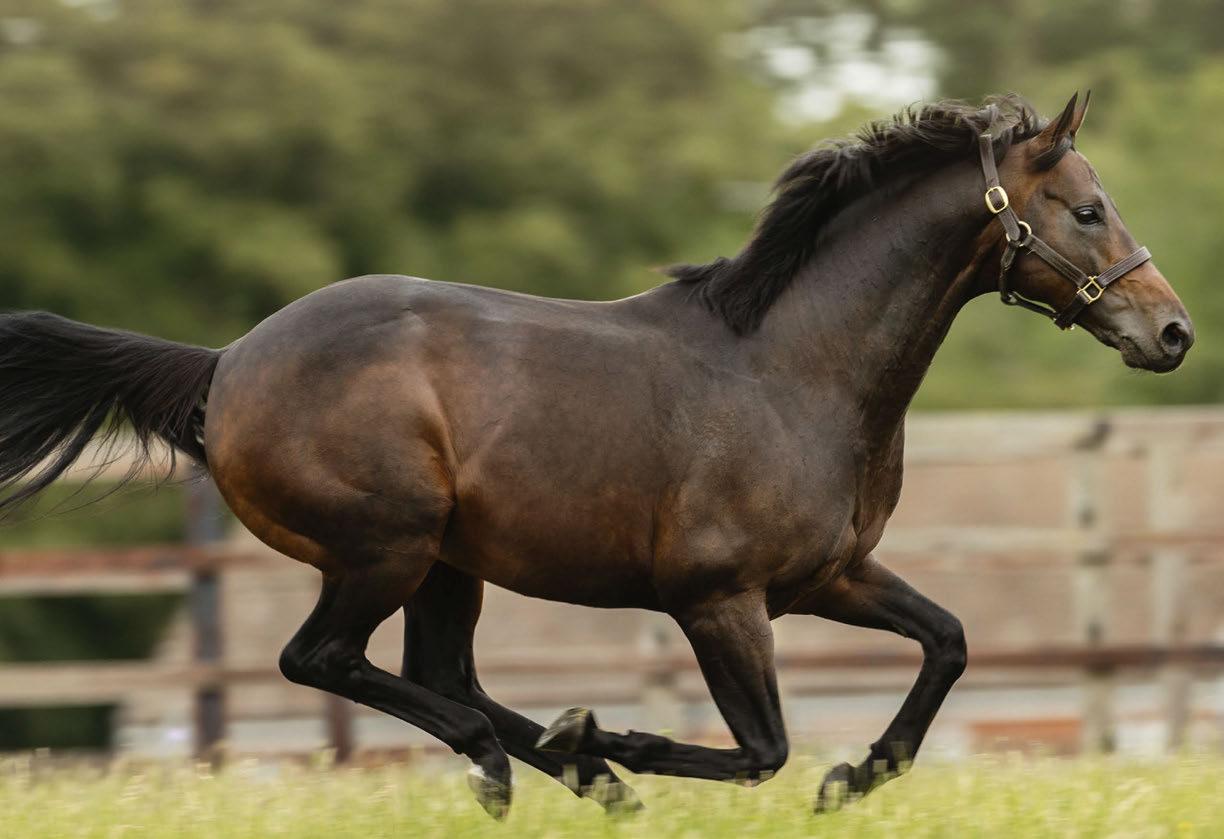




Editor: Edward Rosenthal
Bloodstock Editor: Nancy Sexton Design/production: Thoroughbred Group
Editorial: 12 Forbury Road, Reading, Berkshire RG1 1SB editor@ownerbreeder.co.uk www.theownerbreeder.com
X: @TheOwnerBreeder Instagram: theownerbreeder
Advertising: Giles Anderson
UK: 01380 816777
IRE: 041 971 2000 USA: 1 888 218 4430 advertise@anderson-co.com
Subscriptions: Keely Brewer subscriptions@ownerbreeder.co.uk 01183 385 686
The Owner Breeder can be purchased by non-members at the following rates:
1 Year UK £60 Europe £90 RoW £120
The Owner Breeder is owned by the Racehorse Owners Association
Editorial views expressed in this magazine are not necessarily those of the ROA or TBA
Our monthly average readership is 20,000
Racehorse Owners Association Ltd 12 Forbury Road, Reading, Berkshire RG1 1SB Tel: 01183 385680 info@roa.co.uk • www.roa.co.uk

News that Sir Michael Stoute will call time on his remarkable training innings later this year caused a wave of nostalgia to sweep over racing fans, as we all recalled our favourite runners of yesteryear associated with the master of Freemason Lodge.
Shergar, breath-taking winner of the 1981 Derby under Walter Swinburn, is perhaps the first name to spring to mind when reflecting on Stoute’s outstanding career. The Aga Khan colt’s subsequent kidnapping and disappearance made newspaper headlines around the world and meant he ascended to near-legendary status.
I don’t remember Shergar, or Shahrastani, his second Derby victor in 1986 when defeating the luckless Dancing Brave, for that matter, as my earliest memories of this first-class trainer begin the following decade. Opera House and Rock Hopper were two of my favourite horses and I was at Ascot with my dad in 1992 when they were both unable to lay a glove on Irish raider St Jovite in the King George VI and Queen Elizabeth Diamond Stakes.
Mention of Maktoum Al Maktoum’s Rock Hopper never fails to bring back fond memories. I recall this enigmatic customer always being ridden from off the pace and having a fine rapport with Pat Eddery. He never won at the top level, despite a few near misses, and I think that endeared him to me even more.
Sheikh Mohammed’s Opera House, on the other hand, was a bona fide top-class performer, one whose career perfectly illustrated Stoute’s trademark training touch.
Lightly-raced in his younger days – he won his only start at two by ten lengths – Opera House took a graduation race at three, claimed a pair of Group 3s and a Group 2 at four, before blossoming as a five-year-old, recording a Group 1 hat-trick in the Coronation Cup, Eclipse and King George.
Stoute’s horses always improved with age; the only question was how far their progression would take them, guided by a man whose support from the biggest and best ownerbreeders in the land allowed him to train the way
Edward Rosenthal Editor

he wanted – with patience.
Retiring colts to stud after their two-year-old campaign? I think one could guess Sir Michael’s opinion on this recent industry development and its obsession with speed.
However, there’s no doubting two-year-old racing’s importance in the British racing calendar and one man who has latched on to this aspect of the programme is Lambourn-based Ed Walker.
Walker regards himself as a trainer in the traditional mould, yet some friendly advice saw him adopt a different approach, one that has reaped dividends this season with the likes of Celandine, winner of the Group 2 Lowther Stakes at York in August.
“Opera House and Rock Hopper were two of my favourite horses”
“Ed Sackville is a great friend and ally and he’s said to me for a few years that we won’t attract big owners until we start having success with two-year-olds,” he tells James Burn in this month’s fascinating Big Interview (pages 30-34).
“I’m conscious Ralph Beckett and Andrew Balding’s careers seemed to leap forward when they started training better two-year-olds, even though they have always done well with threeyear-olds and older horses.
“They probably wouldn’t have been renowned for two-year-olds, but they’ve gone to the next level, and I’ve tried to replicate that.”
Walker and his colleagues will be stocking up on two-year-old talent for 2025 at the Tattersalls October Yearling Sale and James Thomas runs the rule over the catalogue, which features the choicest pedigrees in Europe (pages 42-46).







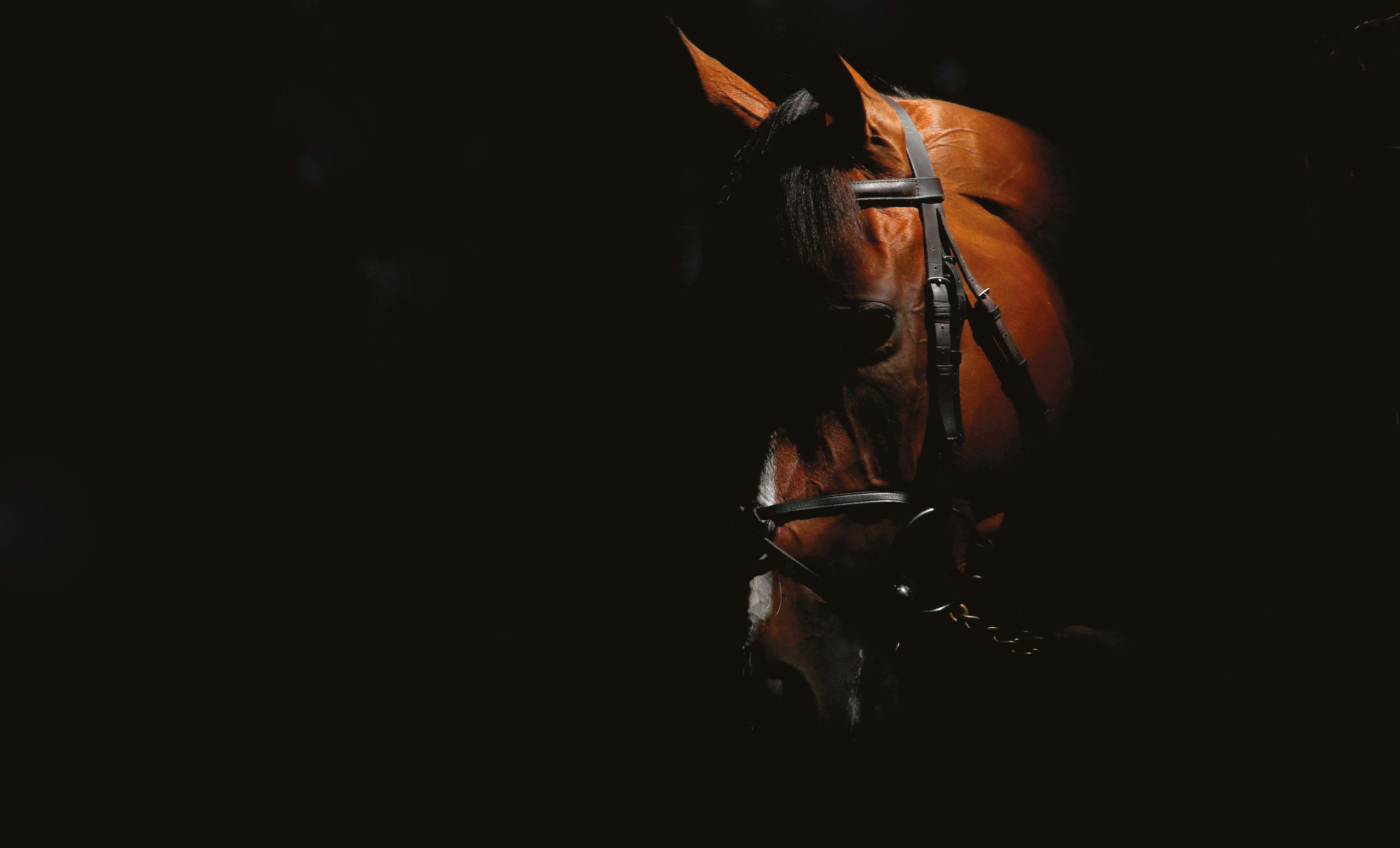
Join us as we celebrate the brightest stars of 2024
SECURE YOUR SEAT roa.co.uk/awards24

Thursday 5 December 2024
Royal Lancaster Hotel Lancaster Terrace London W2 2TY
Black Tie
Welcome Reception 7pm Carriages 1am
British racing is facing increasing uncertainty around its core funding while its ability to properly plan, budget and secure the strategic initiatives that are available is increasingly becoming more and more difficult. The return to the levy for the quarter ended June 24 was supposedly hit hard by a significant reduction in betting turnover, likely due to myriad issues, including poor weather, the European football tournament cornering the betting market, and of course the political uncertainty and ongoing attacks via affordability restrictions.
If we add in the withdrawal of the agreed levy reform due to the surprise election call, we just do not have clarity as to the funding of fixtures in 2025. We also do not know how the various projects that are underway at present, covering equine welfare, industry people, continued development of the premier concept, and consumer insight work amongst many others, will be factored into next year’s budget.
The BHA is primarily funded by owners and racecourses, with most of the racecourse funding coming from raceday service grants, which come from the Levy Board. Therefore, the funding of the regulator is reliant on us as owners and the Levy Board, which recently welcomed Anne Lambert as Interim Chair. The call on levy funds is increasing year on year, which is why the uncertainty around income and expenditure, not to mention the availability of Levy Board reserves, makes planning for the future so difficult.
We know that the racecourses have significant leeway when making their decisions around levels of executive contributions to prize-money, so whilst there are no prizemoney agreements currently – those that were in place having been effectively cancelled by the racecourses at the onset of Covid – we as owners are faced with increasing uncertainty as to what we will or will not be running for in 2025.
The yearling sales season is continuing, albeit in a stuttering fashion thus far, yet owners, trainers and syndicate managers are expected to invest heavily whilst not having any real clarity of the key metric when balancing their investment decisions.
You may think it was ever thus, however things have changed. Formerly the levy had a guarantee built in meaning even if results went against the bookies, there was a minimum funding requirement. We were also promised the seven-year review, which should have concluded by April 2024, a period which obviously saw the real value of the levy return eroded by very high inflation rates, and as stated above there are no longer prize-money agreements in place to secure a portion of the media rights monies paid to the racecourses.

Against this backdrop, the industry has a real opportunity to secure significant new investment as the appetite for global sports investment continues to grow. There are only limited resources and man hours available, and the balancing act between trying to fix the issues described and aiming for the big prize is causing problems.
The industry must focus on the three main targets – whilst always being conscious of the increasing dangers around affordability checks and other pernicious moves by the Gambling Commission – namely to get the levy review back on the political table, solve the prize-money agreements once and for all, and of course secure the big prize.
“The levy review, prizemoney agreements and securing the big prize are the three main targets”
These are the top three priorities on the ‘to-do list’ for the incoming new team of industry leaders. The good news is that a lot of work has been done on all of these issues and the industry has worked collaboratively across a number of fronts, not least since the governance changes of almost two years ago. Surely it is not beyond us to push through on all three fronts and create a bright and exciting future.
One thing that must not hold the industry back is the roll out of the new Racing Digital project. So much of what can be achieved is reliant upon data and systems; the BHA recognised this, hence the move to Racing Digital, a joint-venture with Weatherbys. There have been delays, especially in the new streamlined owners’ charges piece, and this platform must now deliver so that the industry can move forward.
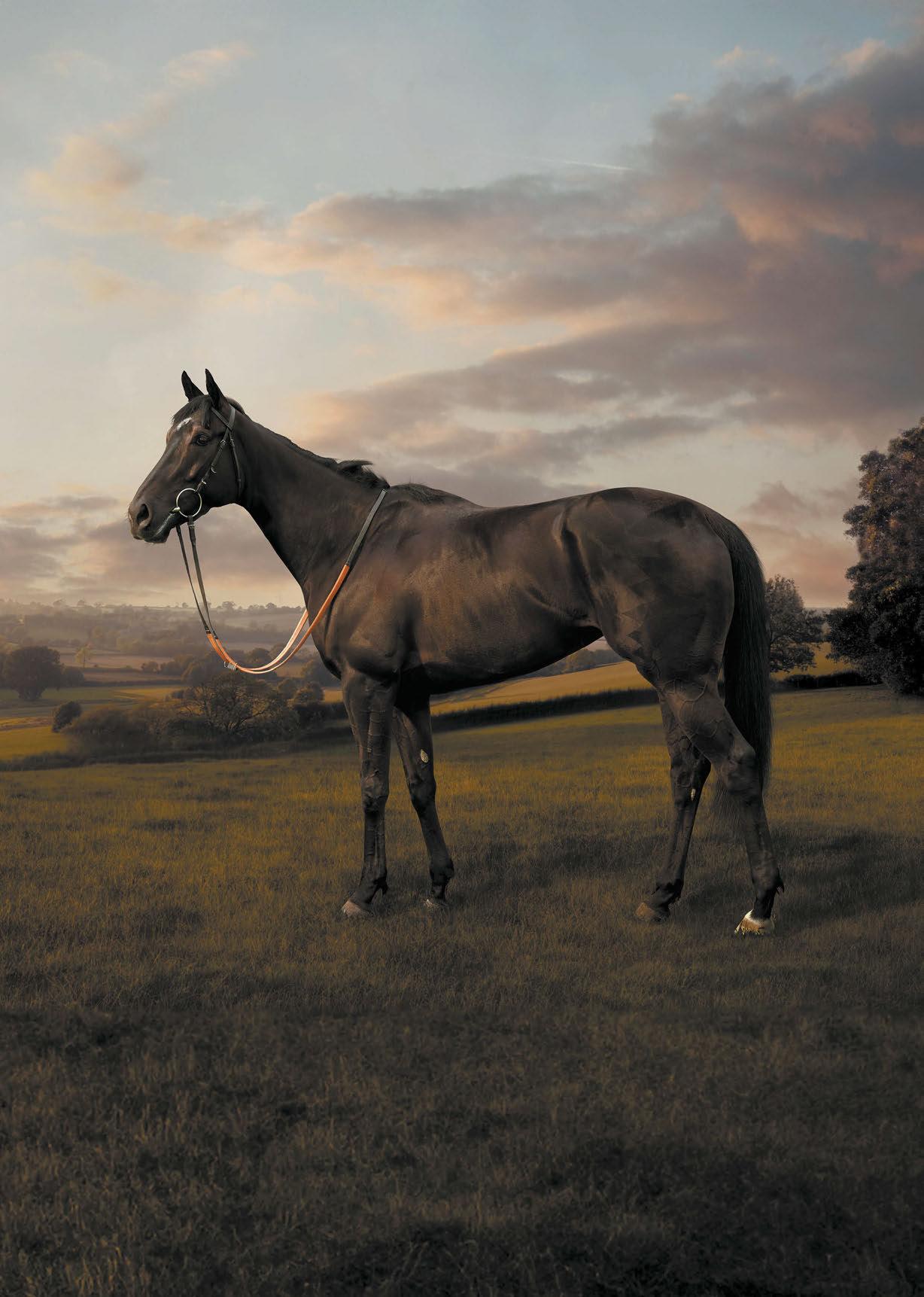
Good news is in short supply within the racing and breeding industry, a situation that is unlikely to change in the immediate future. Current betting turnover numbers are under pressure and that may well have negative outcomes for the 2024 levy collection, with the potential that this year’s prizemoney levels cannot be repeated in 2025.
Add to that a new government with clear intentions of a ‘tough’ Budget in late October, planning increased tax revenue from Capital Gains Tax, pension fund contributions, inheritance tax, school fees and so on, and these will all have a consequence upon the availability of leisure spend. These events will do nothing to support the recruitment of new owners and breeders, and more alarmingly will make even retention a challenge.
The appointment of a new BHA Chair and in short order a Chief Executive couldn’t be coming at a more challenging time. Racing needs steady hands on the tiller to navigate the very rough seas that are ahead. With all of racing’s metrics under the most severe pressure, the industry can ill afford to have new feet under the table taking time to understand the problems.
The BHA has a very full agenda yet there are clear priorities to address. While there are many theories about how to turn industries around, common to all is a complete understanding of what drives the economic engine, what might compromise this, and how most importantly it can be developed to deliver a robust and sustainable outcome.
My first suggestion would be to find a transformational new funding source, as to rely upon the structure that has existed since 1962 via the levy, and 1986 with media rights, is a plan doomed to fail.
The delivery of Project Pace, an all-industry initiative exploring different platforms and global audiences for the British racing product, needs urgent completion. World Pool has shown that the demand does exist – can that be developed and extended to other markets and jurisdictions? An international racing programme in which Britain, through its iconic fixtures, plays a major part – is this a reality and, if so, in what form?
Technology and artificial intelligence are transforming the value of live sport, so is there an opportunity for British racing to engage with these platforms to profit? Combined, these factors could provide the golden key that British racing and breeding urgently requires.
We must also reinvigorate the old brand. The domestic betting market is in decline; the demographics of the customer need to change to interest and involve younger age groups. By 2030, linear television will be long gone, with all consumers relying upon a digital offering. Racing needs to engage with the betting industry and put behind them the prejudices of past relationships.
Philip Newton Chairman

The betting industry has the same interests as the racing industry – these need to be aligned and a real partnership developed to grow revenue and participation. An example of this might be the introduction of a performance-related prize-money distribution policy that incentivises return on investment upon the race programme. It would recognise the importance of different types of races key to the development of the breed. However, we should not be afraid to make changes when we know that the betting person these days has a wide choice and will only be attracted to compelling and competitive offers.
“To rely upon the structure that has existed since 1962 via the levy is a plan doomed to fail”
Funding for welfare is the elephant in the room. Welfare, and all that it means, could bring the industry to its knees, tarred with a brush that applies elsewhere. Not only is there an urgent need to provide an insurance fund for the vulnerable within the thoroughbred population, but also to hasten more veterinary research further underpinning industry commitment to its responsibilities.
Additionally, HORSE PWR – the excellent campaign devised by the BHA – needs to be empowered and funded to reach all parts of British society. Get the message out there and maybe we can start turning those uneducated negative perceptions of horseracing into a positive that will then flow through ultimately to increased participation. This must be recognised as an immediate funding priority and places even more importance on the delivery of the market interventions listed above.
To achieve these goals during a first year of office is a big ask, but it’s what must happen if we are to ride out this storm. Depend upon me, on your behalf, to be one of the first knocking on the BHA boardroom door and offering the full support of the TBA.
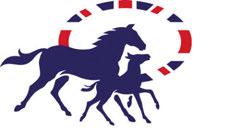


Sir Michael Stoute is to saddle the final runner of his long and distinguished training career later this year after announcing his decision to retire last month.
The Newmarket trainer, 78, has been one of the most successful in the history of the sport, being champion of his profession ten times and with 16 British Classic victories to his name.
He will be forever associated with another legend of the turf, Shergar, one of the trainer’s six winners of the Derby.
Shergar was also one of Stoute’s 11 Irish Classic winners, while he has additionally landed many of the racing world’s biggest prizes, including Breeders’ Cup races, the Japan Cup, Dubai World Cup and Prix de l’Arc de Triomphe.
In a statement to the PA news agency, Stoute said: “I have decided to retire from training at the end of this season.
“I would like to thank all my owners and staff for the support they have given me over the years.
“It has been a great and enjoyable journey.”
Arguably the greatest moments of all came with the immortal Shergar, whose ultimate fate remains unknown after he was kidnapped by the IRA in February 1983.
Two years earlier the Aga Khan homebred had been imperious in the Derby, winning by a record ten lengths under Walter Swinburn, with the duo following up at the Curragh and then also winning the King George VI and Queen Elizabeth Diamond Stakes.
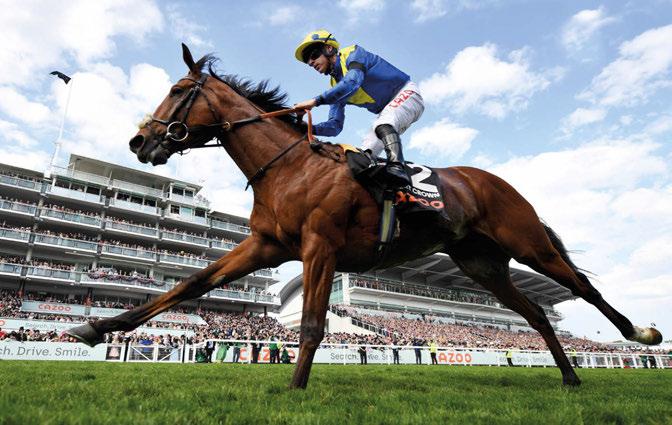
Shergar retired with an official rating of 140, equal with Alleged, Frankel and Flightline and behind only Dancing Brave in the history of the International Classifications.
That year was the first time Stoute was champion trainer, and he would win nine more titles up to 2009.
He would land five more Derbys via Shahrastani (1986), Kris Kin (2003), North Light (2004), Workforce (2010) and Desert Crown (2022).
Kieren Fallon rode Kris Kin and North Light to win at Epsom, and he, along with the late Swinburn and Ryan Moore, would be the riders most closely associated with the trainer.
Fallon said: “He always got the best out of a horse; he was able to take a horse from a two-year-old until they retired and keep finding improvement. He was a genius around his horses and a gentleman to ride for.
“North Light in particular was great and besides George Washington winning the Guineas, North Light winning the Derby was one of the great days [for me] because he was automatic – he was one of these lovely, big, easy horses to ride with no complications.
“You could make the running, you could sit, it was easy and you could just enjoy it. There were no pressures, no nothing, I don’t even think we discussed the ride.”
Fallon added: “Sir Michael’s would never be over the top or fully tuned up, he would
always leave a little bit for the next day and the next day; that was the great thing about him, there was always just enough done.
“North Light by a mile was one of the best and the Russian Rhythm days as well, they were amazing.”
Russian Rhythm, winner of the 1,000 Guineas among four Group 1 strikes, was
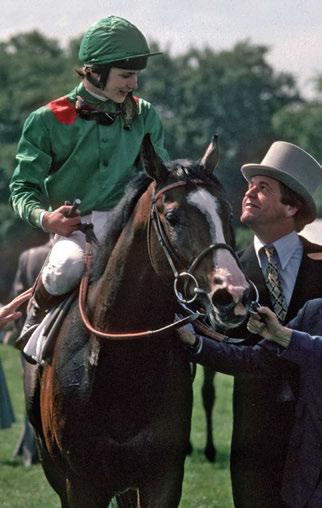
just one of the top-class performers Stoute trained for the Thompson family’s Cheveley Park Stud.
Chris Richardson, Cheveley Park Stud’s Managing Director, said: “The Thompsons and Sir Michael have been associated for 40 seasons – Patricia Thompson was extremely emotional when she heard that he’d made this decision as she is so loyal to all her trainers.
“He is also a Director of Cheveley Park Stud and we’ve had a very close working relationship for many years. The success that Cheveley Park Stud alone has had with Sir Michael has been sensational –nearly 40 individual Group winners of over 70 races, going back to the likes of Primo Dominie and Scottish Reel, then others such as Russian Rhythm, Peeress, Medicean and Veracious.
“He is an icon of our industry, a brilliant trainer and horseman, and a hugely accomplished judge of the equine.”
Amongst the other major ownerbreeders who put their trust in Stoute was Khalid Abdullah’s Juddmonte operation, whose Classic victor Workforce also won the Arc, while the Queen’s Estimate supplied one of the trainer’s most treasured prizes, the Gold Cup at Royal Ascot in 2013, with the winner’s delighted owner in attendance. Stoute claimed a total of 82 races at the Royal Meeting.
Harbinger, who had stablemate Workforce well in arrears when winning the 2010 King George by a record 11 lengths, was one of Stoute’s two world champions, along with Crystal Ocean, who shared the honour with Enable and Waldgeist in 2019.
Enable’s handler John Gosden described Stoute as “a true champion trainer with a phenomenal feel for the horses in his stable”.
Gosden added: “At the height of their powers, Henry Cecil and he were formidable adversaries and lit up the British racing season year on year.”
In addition to Shergar, Harbinger and Crystal Ocean, Shareef Dancer (1983) and Zilzal (1989) were outright or joint European champion horses for Stoute, who has won the King George a record six times – Opera House (1993), Golan (2002), Conduit (2009) and Poet’s Word (2018) were his other winners of the Ascot midsummer showpiece.
Singspiel won the Japan Cup for Stoute in 1986 and the Dubai World Cup the following year and was succeeded on the Tokyo roll of honour by stablemate Pilsudski.
The latter also won the Breeders’ Cup Turf, as did Conduit twice and Kalanisi among eight wins at the meeting for the trainer.
A father and son were last month disqualified from racing for a total of 13 years after being found guilty of instructing a jockey to deliberately lose on a horse they owned.
Royston Cooper was banned for seven years and his son, Royston Barney, for six years for a breach of the same rule by a disciplinary panel. Cooper and Barney had been found guilty in August of instructing Ray Dawson to stop their horse, the Henry Spiller-trained Enough Already, from winning a mile handicap at Yarmouth on May 26, 2022, when he started 2-1 second favourite in a field of seven.
Dawson ignored their demands and won the race by a head.
He reported the owners’ behaviour to stewards after the race, having been threatened by Cooper and Barney following the success.
Cooper was found to have demanded that Dawson pay him a six-figure sum the win had allegedly cost him, while Barney is said to have asked why the jockey had not stopped the horse from winning by “pulling on the reins”.
Panel Chair James O’Mahony remarked: “This is an offence against the integrity of horseracing. It’s an offence against all right-thinking people involved in the sport, from kings and princes to the punter having his accumulator on a Saturday morning.
“In all but name, Royston Cooper was as much an owner of the horse as Royston Barney as far as this case is concerned. You both tried to corrupt the sport.
“The one light of hope is that Henry Spiller and Ray Dawson were not having it. They said ‘no’ and the horse
Stoute was knighted in 1998 for services to tourism in Barbados, where he was born and raised before moving to Britain aged 19 in 1964 to become assistant to Pat Rohan in Malton.
Famously, Stoute applied the next year for the job of the BBC’s racing correspondent. He made the shortlist but was pipped at the post by Julian Wilson.
Stoute, who also assisted Doug Smith and Tom Jones, saddled his first winner in April 1972, with his debut Group 1 winner coming in the 1972 Flying Childers Stakes with Music Maestro.
He has well over 4,000 wins in Britain,

ran on its merits.”
O’Mahony criticised Barney for “one last desperate throw of the dice” in alleging that Dawson stopped and laid horses.
He considered the claim “completely and utterly rejected” and said that it acted as an aggravating factor in deciding the punishment.
Enough Already had started 6-4 favourite for a Brighton handicap nine days before he ran at Yarmouth, but could manage only fourth under Dawson, the rider reporting to stewards that his mount had been denied a clear run in the final few strides.
At the August hearing, Cooper had been found not in breach of the rules relating to that run. However, Dawson and Spiller were found in breach having failed to report to stewards an alleged instruction to prevent the horse from winning.
Dawson received a two-month ban, suspended for nine months, and Spiller, who stopped training in February, was given a three-month ban and a £3,000 fine, both suspended for a year.
including 12 over jumps, one of which was Kribensis in the 1990 Champion Hurdle.
Stoute’s outstanding career was recognised at the 2017 Cartier Awards when he received The Daily Telegraph Award of Merit. “Shergar was my best middle-distance horse, Marwell was the best sprinter and I think Zilzal was the best miler,” he told Ed Chamberlin and guests at the Dorchester Hotel in London.
The future of his Freemason Lodge yard, staff and horses was not made clear with the announcement, nor the precise timing of when he would bow out of what has been a monumental career.
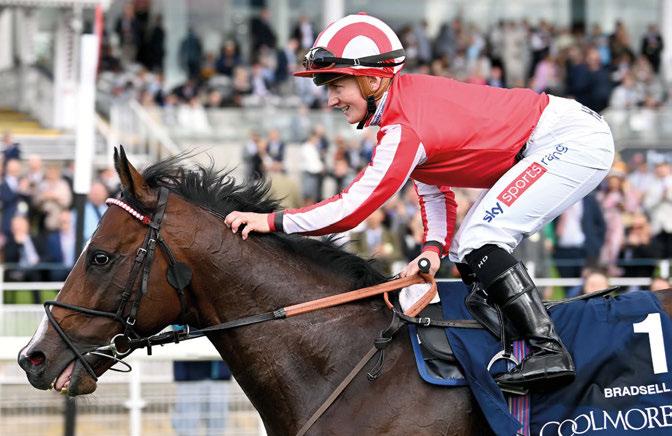
Hollie Doyle
27-year-old who has won two Group 1s on star sprinter Bradsell (above) this year records her 1,000th career victory on Leyhaimur at Goodwood on September 3.
Tom Sammes
General Manager of Epsom will leave the role after 16 months and return to the north-west having secured another senior sporting role.
Doncaster
Course renames its press room in honour of late journalist Howard Wright, with his name also attached to the Group 2 Doncaster Cup.
Ed Dunlop
Disciplinary Panel hands trainer a 12-month suspended ban and £1,000 fine after filly Lucidity tested positive for a metabolite of cocaine.
Lauren Keen-Hawkins
Amateur jockey, 22, is moved out of intensive care having sustained a serious head injury in a fall at Worcester in September.
Syndicate operator secures renowned punter and bloodstock investor Patrick Veitch to head its buying team until at least 2030.
Lawrence Mullaney
Resumes training from a base at Danethorpe near Newark having relinquished his licence in 2023 to work for Aidan O’Brien at Ballydoyle.
Elizabeth Gale
Conditional rider receives 28-day ban for easing up on Catuaba at Worcester and forfeiting victory having misjudged the winning post.
Jack Gilligan
Pauses riding to treat a persistent shoulder injury. He returned from an eight-year stint in the US in December and had partnered 27 winners.

Shark Hanlon
Trainer of King George VI Chase winner Hewick is suspended for ten months and fined £2,000 for transporting a dead horse in an open trailer.
Ger Hannon
Store horse producer appointed Irishbased bloodstock representative for point-to-point and horses-in-training sales by Tattersalls Cheltenham.
Anne Lambert
Appointed Chair of the Horserace Betting Levy Board on an interim basis until June 15, 2025 following the death of Paul Darling in August.
Pat Cosgrave
Rides his 1,000th winner in Britain aboard Dynamiste in the Summer Stayers’ Series Final Handicap at Bath on September 15.
Bushey killings
Kyle Clifford, 26, charged with the murder of Carol, Hannah and Louise Hunt, the wife and daughters of BBC racing commentator John Hunt.
McCoy Awards
Jockey Club decides not to stage jump racing awards evening this year to help reduce costs. The Cheltenham-based event will return in 2025.
Tracy Vigors 49
With husband Charlie she was comanager of Hillwood Stud in Wiltshire, which boards broodmares and consigns at the sales.
Richard Morecombe 60
Investment banker was founder and President of Chelsea Thoroughbreds, which enjoyed a one-two in the 2023 Royal Hunt Cup.

Franny Norton
Calls time on 36-year riding career aged 54 having won over 1,900 races in Britain including two Group 2 victories aboard Sir Ron Priestley.
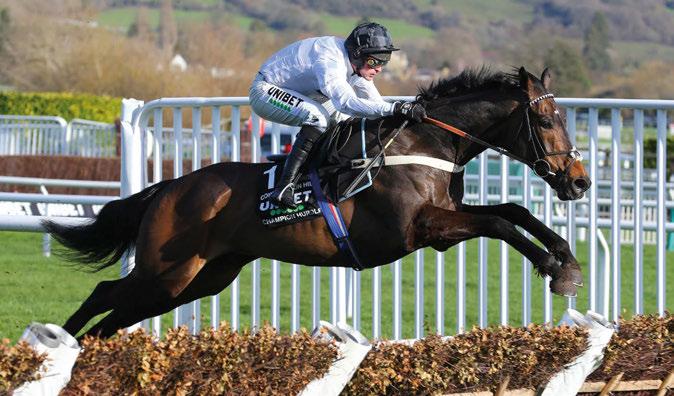
Constitution Hill
Star hurdler who last ran in December returns to training at Nicky Henderson’s Seven Barrows yard having undergone wind surgery.
Fallen Angel
Wathnan Racing purchases dual Group 1-winning daughter of Too Darn Hot from Steve Parkin’s Clipper Logistics.
Dornoch
Belmont Stakes victor will begin his stallion career at Spendthrift Farm, where he will be joined by fellow Grade 1 winner National Treasure.
Almanzor
Three-time Group 1 winner relocates permanently to Cambridge Stud in New Zealand having shuttled from Haras d’Etreham for six seasons.
Wicked Strong
Grade 1 winner in the Wood Memorial Stakes for Centennial Farms is pensioned from stud duties aged 13.
Son of Peintre Celebre led home a onetwo for owner-breeder Khalid Abdullah in the 2010 Prince Of Wales’s Stakes, defeating Twice Over.
Macho Uno 26
Son of Holy Bull won the Breeders’ Cup Juvenile in 2000 and sired 17 Graded/ Group winners from his base at Adena Springs.
Al Maher 23
Winner of the 2005 Australian Guineas for owner-breeder Hussain Nasser Abdullah Lootah sired 39 individual stakes winners.
Haatem Classic-placed colt, winner of the Jersey Stakes at Royal Ascot, will miss the rest of the season following a setback in training.
Heartland
WinStar Farm will stand once-raced son of Justify, a half-brother to triple Grade 1 winner Classic Empire, in 2025. His fee is set at $10,000.
Allaho
Cheveley Park Stud’s four-time Grade 1 scorer, dual winner of the Ryanair Chase, is retired aged ten and will now embark on a dressage career.

Hong Kong superstar for owner Stanley Chan, winner of 26 races including ten Grade 1s and over £16.3 million in prize-money, is retired aged nine.
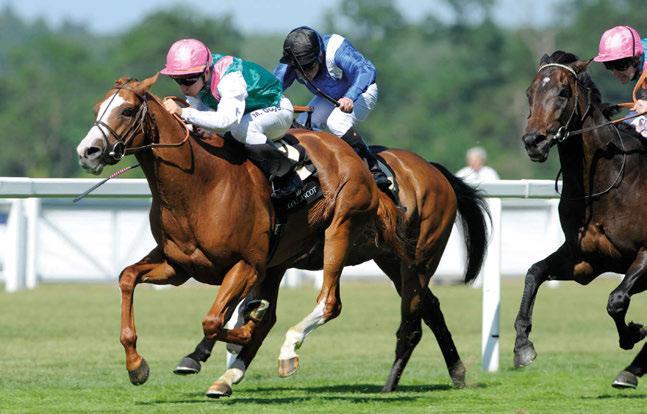
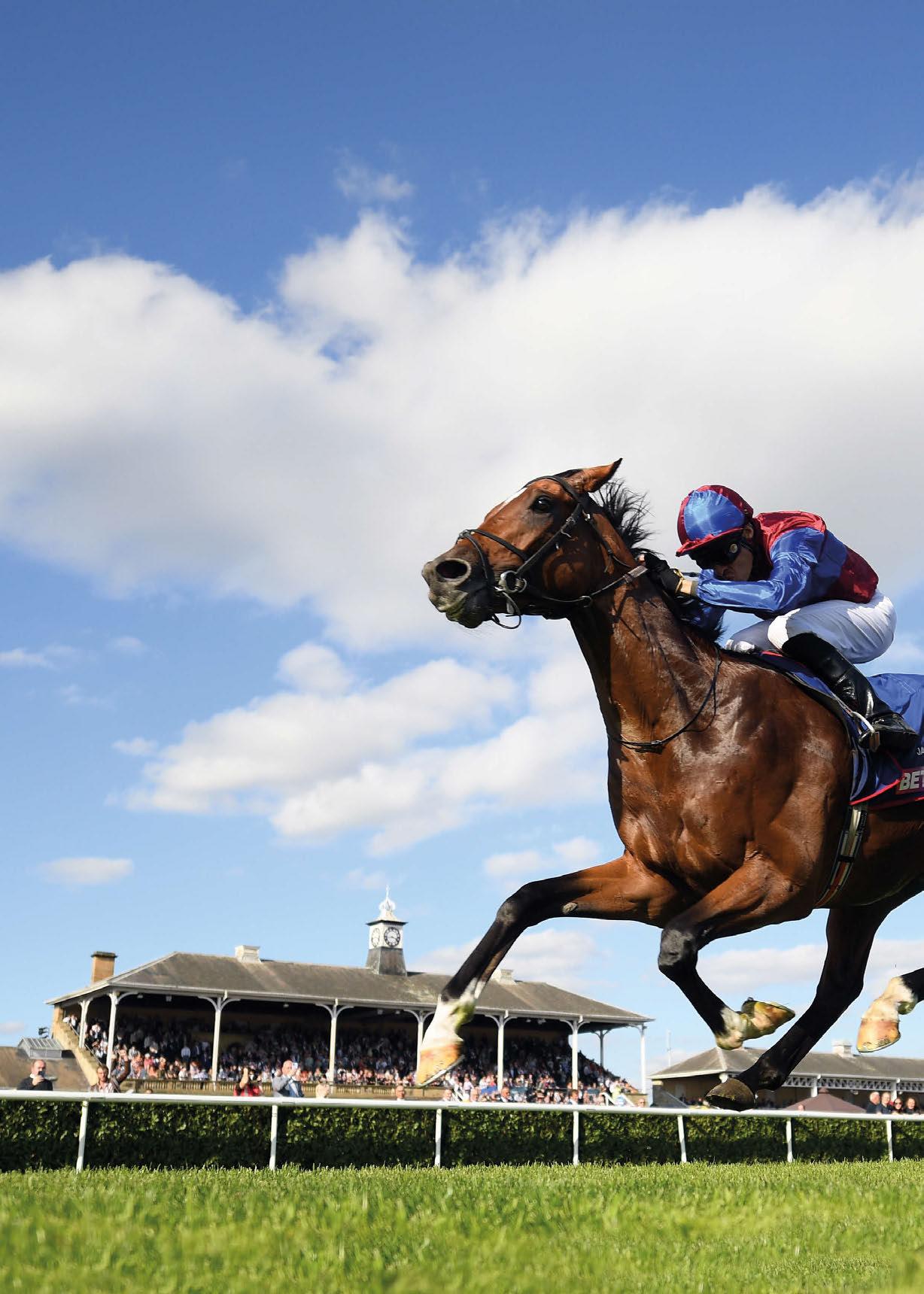

Stable companions and joint-favourites
Jan Brueghel and Illinois, both sons of Galileo trained by Aidan O’Brien, put on a fine show in the Betfred St Leger, with the former coming out on top under Sean Levey (above) after a hard-fought battle up the Doncaster home straight. The winner, owned by Westerberg, Sue Magnier, Michael Tabor and Derrick Smith, is now unbeaten in four starts, having only made his debut in May.
Photos Bill Selwyn
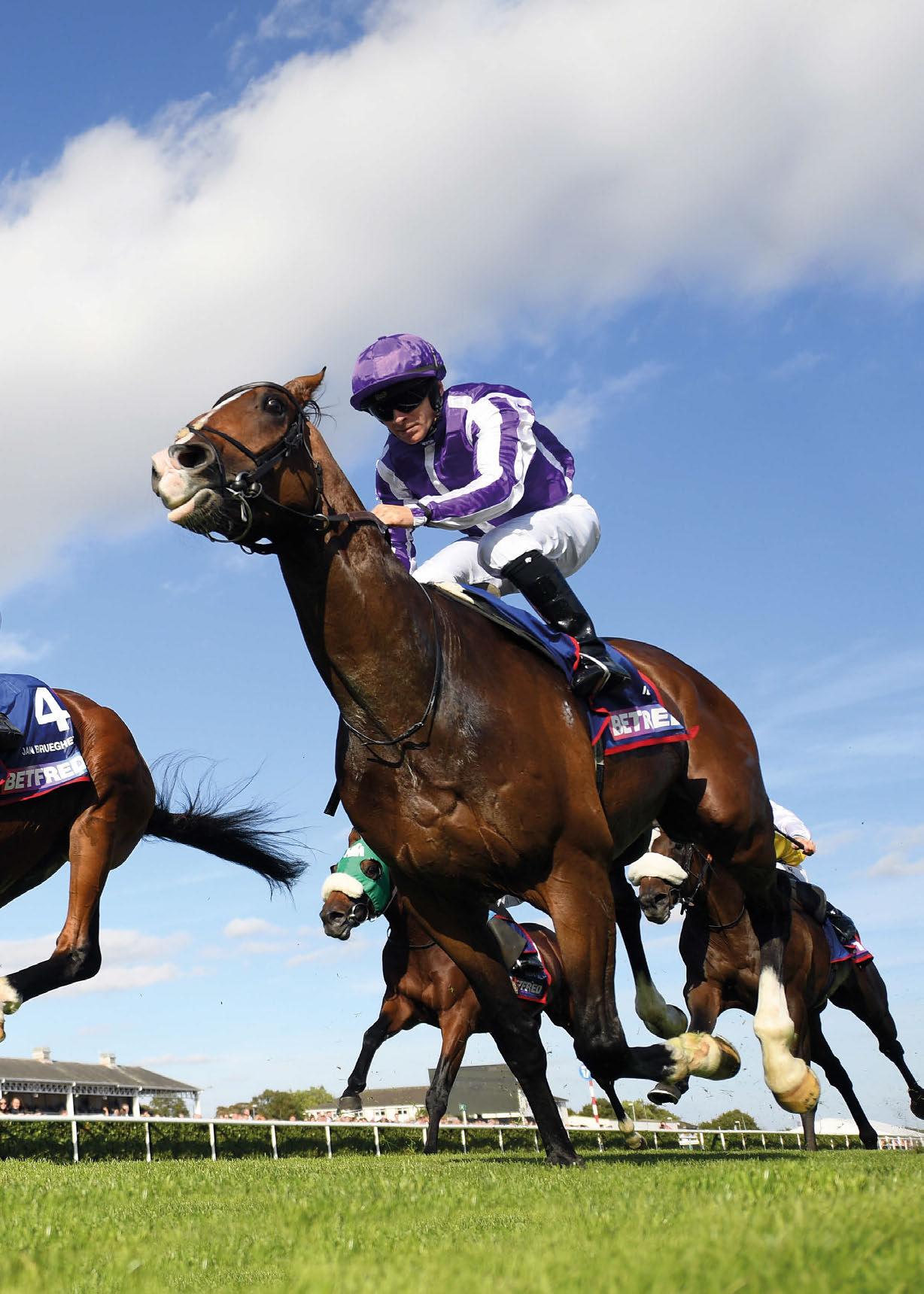
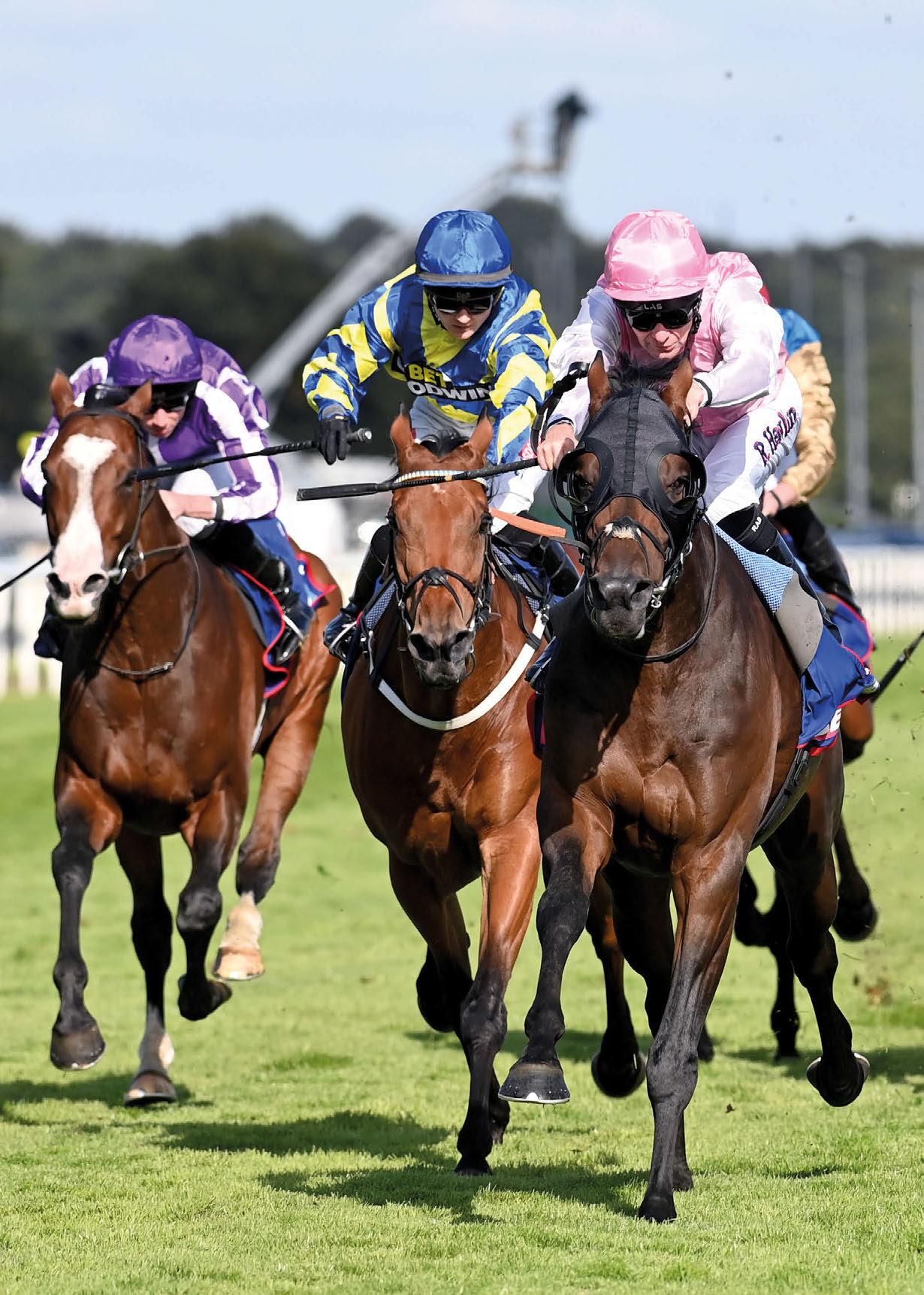


Philippa Cooper was thrilled to see her homebred Sweet William return to winning ways in the Betfred Howard Wright Doncaster Cup under Robert Havlin. This year’s running of the Group 2 staying prize was staged in honour of the late Doncaster journalist, whose daughters Andrea (left) and Karen (hat) and widow Anne (right) took part in the presentation with Cooper (second from right) and groom Anneli Drew.
Photos Bill Selwyn
The Betfred Portland Handicap is an ultra-competitive sprint contest and this year’s running saw five runners hit the line together in a pulsating finish. American Affair (left), owned by his trainer Jim Goldie and Barraston Racing, gained the verdict by a nose over Apollo One (right), with jockey Paul Mulrennan weaving his way through from the back of the 22-runner field to get up in the final strides.
Photo Bill Selwyn


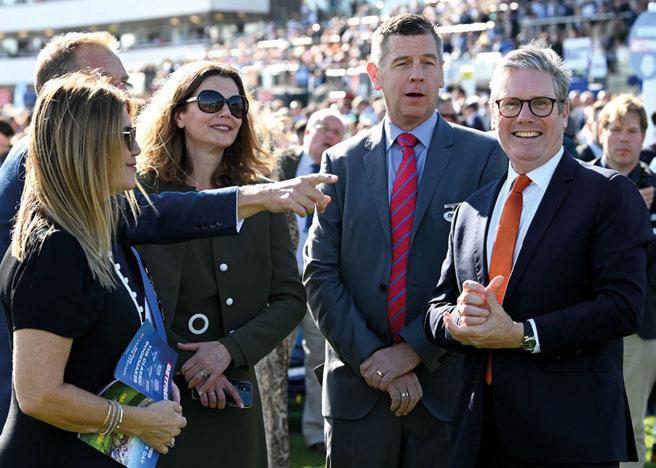
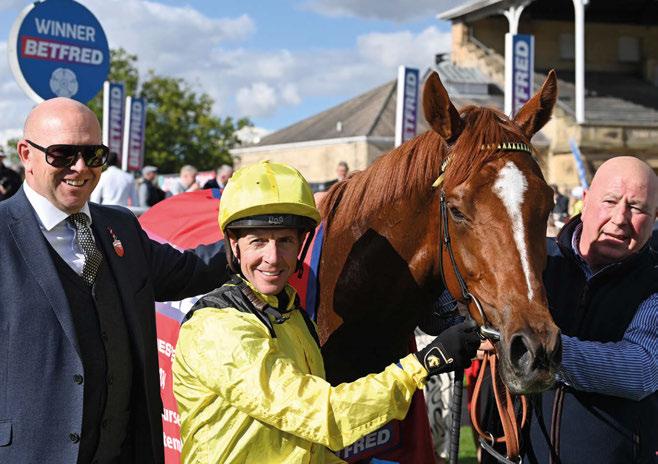

Left from top: Prime Minister Sir Keir Starmer and his wife Lady Starmer enjoy the Doncaster action; the Owen Burrows-trained Nakheel, owned by Sheikh Ahmed Al Maktoum, recorded her first Pattern success in the Group 2 Betfred Park Hill Fillies’ Stakes under Jim Crowley; Brough Scott gives a speech to journalists and guests in the Doncaster press room, renamed in honour of the late Howard Wright


Marc Chan’s Kinross must be one of the most popular horses at trainer Ralph Beckett’s Kimpton Down Stables and the evergreen seven-year-old made it career win number 11 in the Group 2 Betfred Park Stakes under Rossa Ryan. Kinross has now earned almost £1.9 million in prize-money and the gelding will surely add to that total in the coming months, with a trip to the Breeders’ Cup at Del Mar in November under consideration.
Photos Bill Selwyn
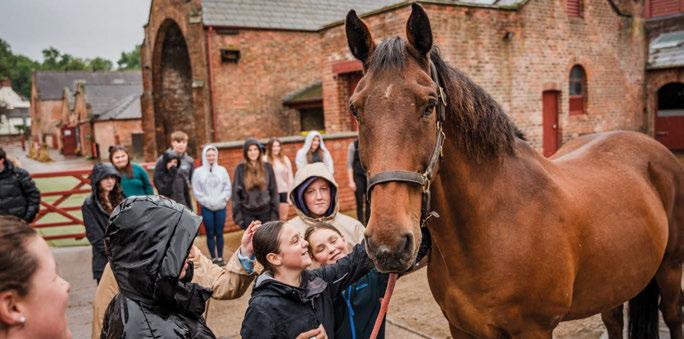




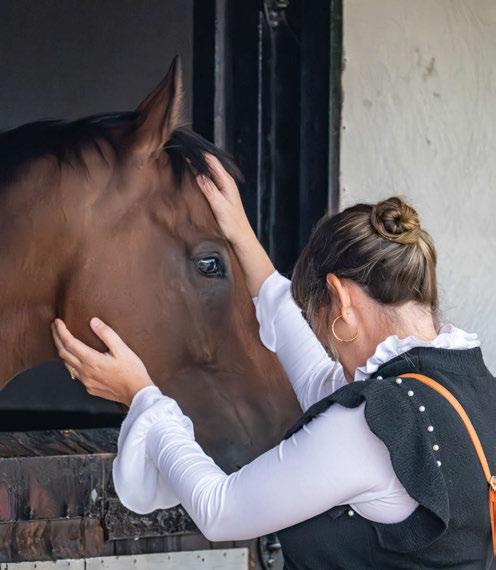
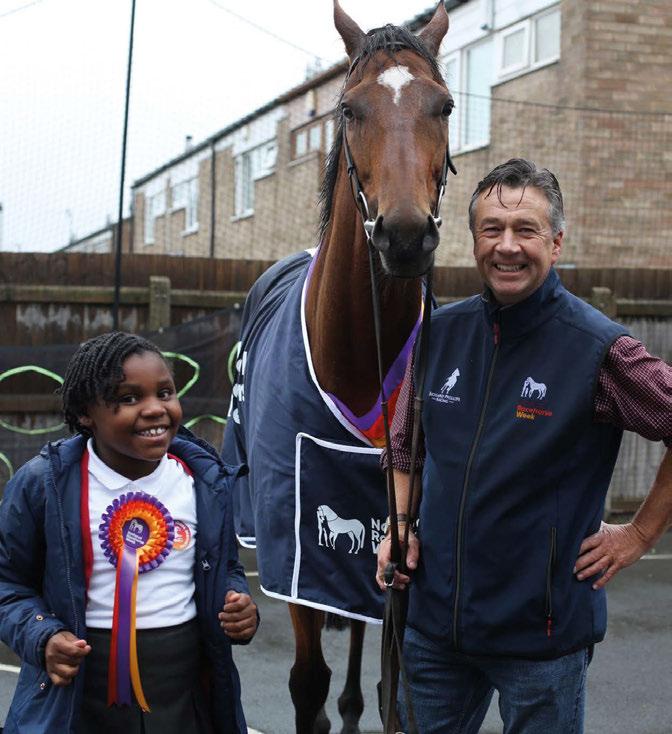



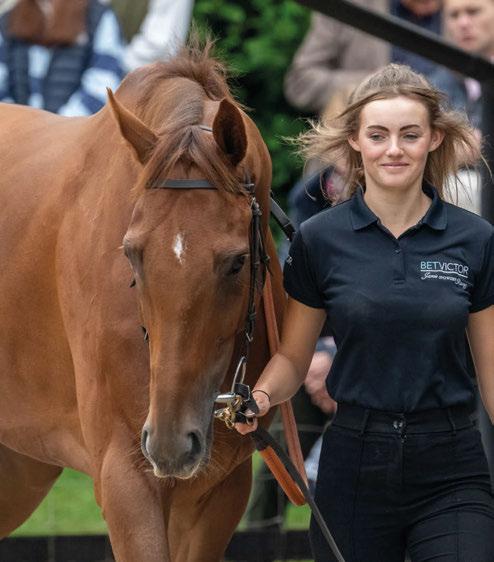
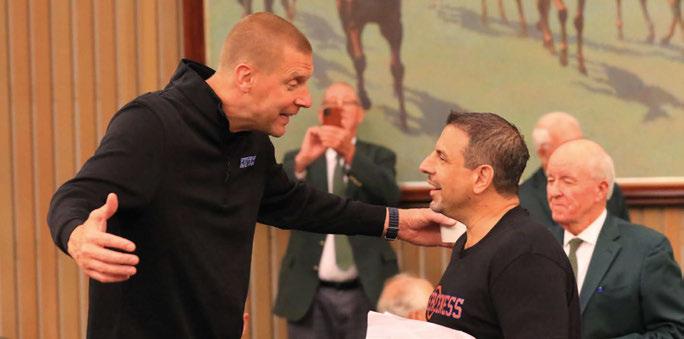
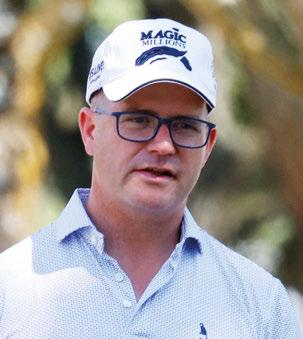


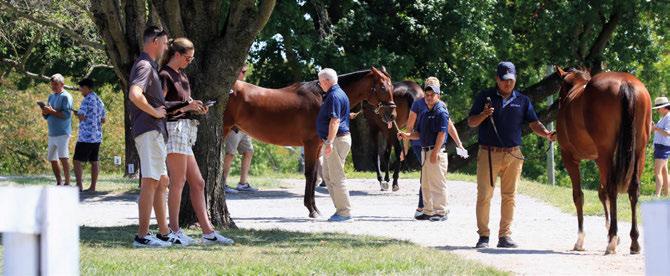
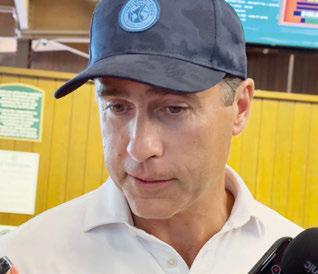





BY MARCUS TOWNEND
They play American football where Hollywood Park racecourse once stood, the 70,000-seat SoFi Stadium being home to both the Los Angeles Rams and LA Raiders.
But 40 years ago at the site in Inglewood, three miles from Los Angeles International Airport, racing history was made with the first running of the Breeders’ Cup.
A crowd of over 64,000, sprinkled among them Hollywood royalty including Frank Sinatra, Gregory Peck, Cary Grant and Fred Astaire, watched the seven-race card with $10 million up for grabs.
The winners included trainer John Gosden, then based in the US, who landed the first running of the $1m Mile with Robert Sangster’s Royal Heroine.
Gosden remembered a sense of sporting history being made, saying: “Everyone found it an exciting concept, there was a great build up and the racing did not disappoint.
“It was a great location and there was a huge crowd to the extent that they ran out of food. The Classic itself was a phenomenal race, a three-way photofinish [won by Wild Again]. It was a great opening chapter.”
Only a handful of British-based trainers
were represented in California on November 10, 1984.
The Bill O’Gorman-trained Reesh, ridden by Tony Ives, was the first UK runner, finishing last of 11 runners in the Dirt Sprint.
Guy Harwood and Barry Hills also had unplaced runners but the victory to encourage the Europeans was delivered in the $2m Turf by the Alain de RoyerDupre-trained Lashkari in the hands of Yves Saint-Martin.
The iconic moments that have followed include the Pat Eddery-ridden, Clive Brittain-trained Pebbles squeezing up the inside rail at New York track Aqueduct 12 months later to win the Turf and give Britain its first Breeders’ Cup victory.
The image of the Francois Boutintrained Arazi slicing through opponents to spectacularly land the 1991 Juvenile at Churchill Downs endures as do memories of the three consecutive wins in the Mile for brilliant mare Goldikova from 2008.
Most memorable of all is arguably 54-year-old Lester Piggott winning the 1990 Turf Mile at Belmont Park on the
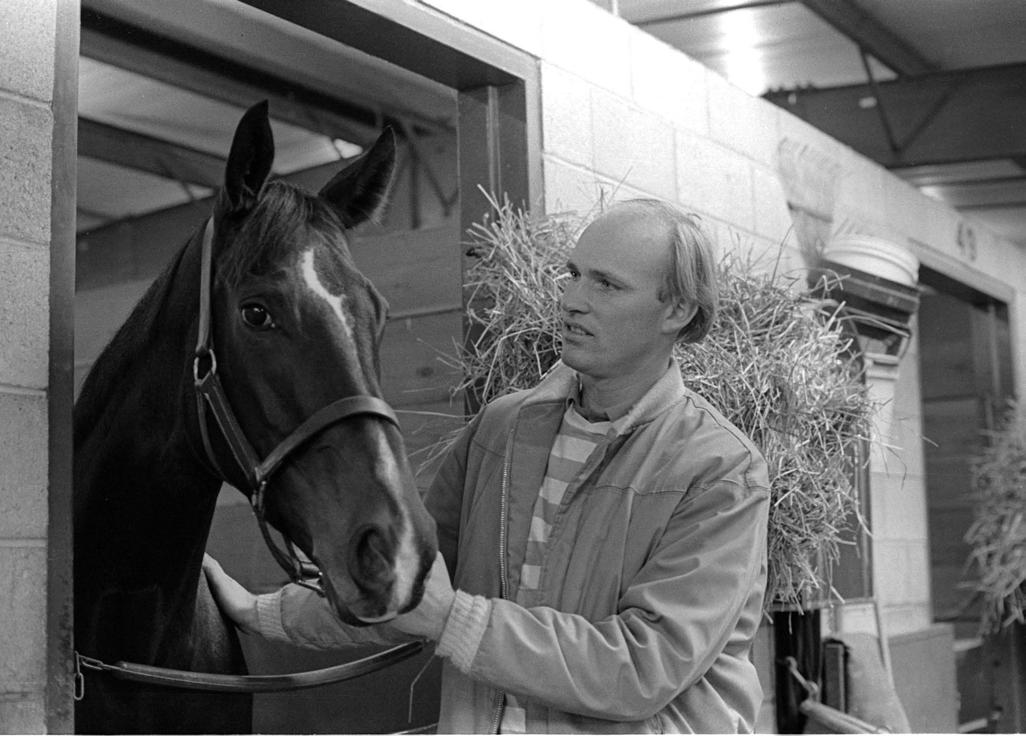
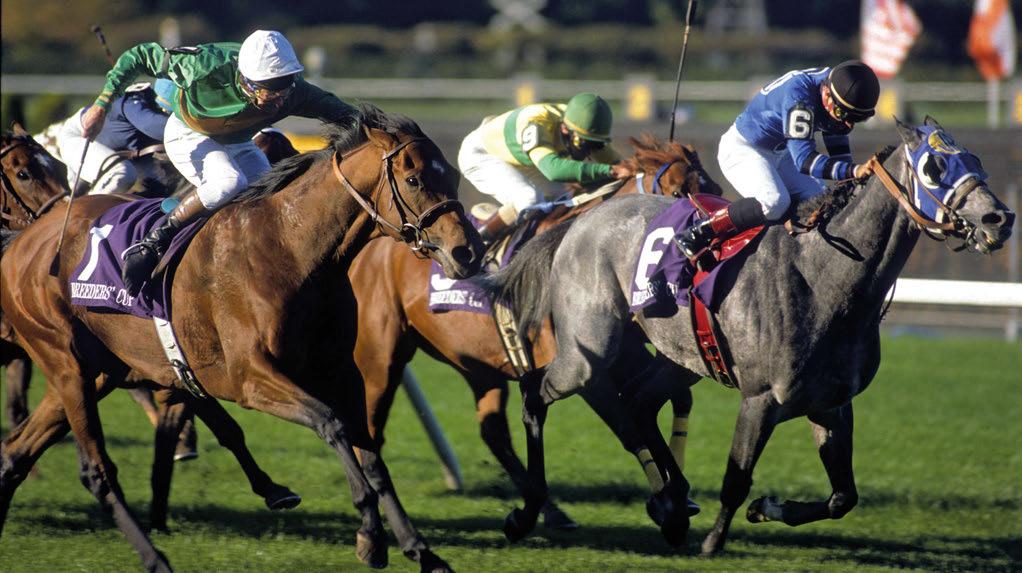
Vincent O’Brien-trained Royal Academy, 12 days after coming out of retirement.
Such iconic moments are why the event was created – perhaps Coolmore’s City Of Troy will etch his name into Breeders’ Cup history when he takes his chance in the Classic next month.
In 2007 the meeting expanded to its
“NBC broadcast the whole day live, something that hadn’t been done before”
current two-day format and when it is staged over November 1-2 at Del Mar in southern California, there will be 12 races and $34m in purses.
In the intervening years, new lavishlyfunded fixtures have been launched, like the Dubai World Cup and the Saudi Cup, but they all owe a debt to the Breeders’ Cup, which accelerated the advance of global competition.
Gosden says: “The first person [to promote international racing] was John Schapiro at Laurel Park, who ran the Washington International [from 1952].
“That was the beginning of it, but you would have to say that the Breeders’ Cup took it from the embryonic stage and truly expanded it.
“To that extent it was ground-breaking and energised the concept of international racing and breeding.”
The original idea for a showpiece meeting that would move between different US tracks each year had come from the late John Gaines.
Gaines, whose family fortune had been amassed in both the pet food business and Florida real estate market, had turned Gainesway Farm into a breeding giant, going from zero to 50 stallions in two decades.
His vision was a year-ending championship, bringing together US champions who had previously protected their reputations by sticking to their own respective corners of America, as well as runners from Europe.
Initially there were obstructions, but the arguments were won, although the price paid by Gaines, an innovative yet polarising figure, was that he had to resign from the event’s Board of Directors to make sure it happened.
Dora Delgado, the Breeders’ Cup Executive Vice President and Chief Racing Officer, has seen it all unfold, having joined the organisation in 1983.
Delgado recalls: “Mr Gaines, along with some prominent Kentucky owners and breeders, thought what racing really
needed was our own Super Bowl or World Series.
“That would culminate with horses which had never met but might be champions in their respective regions battling it out to determine who really was the best.
“The key was a ground-breaking deal with NBC to broadcast the whole day live, something that had not been done before.
“It drew a worldwide audience to the Breeders’ Cup and thoroughbred racing. It set the stage for where we are now, and it has been an ever-evolving championship which has got bigger and better.
“There was probably a little push-back from various racing organisations that had fall meets, which thought the Breeders’ Cup would pull their best horses away.


“It definitely changed the landscape of racing in America. The racing programmes have had to adapt because of what trainers have been asking for. Once you start offering that kind of money it is difficult to stay home in your own back yard.”
Originally it was proposed that US stallion owners pay an annual stud fee to make progeny Breeders’ Cup eligible plus a fee per foal.
But US breeders wanted more bang for their buck, not just a single day’s annual championship.
The initial solution was almost 400 Premium races across the US, which offered additional money for Breeders’ Cup-nominated horses.
That morphed into the current Breeders’ Cup Challenge programme with its series of ‘win-and-you’re-in’ races, which guarantees a starting berth in a Breeders’ Cup race.
Delgado says: “There was no connectivity between running in a Breeders Cup Premium award race to the championships and we wanted to make sure we were drawing a line from these races to the championships.”
The Challenge races have extended the international pull of the Breeders’ Cup, with Delgado estimating that Japan, which enjoyed its first successes at the meeting in 2021, could have up to a dozen runners at this year’s meeting.
The amount paid now by US stallion owners depends on how many live foals they produce – for 100 or more foals it is two times the annual stud fee – simply because average book sizes have grown so much since the meeting was first conceived.
For European-based owners and breeders, a fundamental change came in 2010 when the Breeders’ Cup ended a cross-registration agreement of sires with the European Breeders’ Fund and ended the $500 foal registration fee.
Delgado continues: “People were hesitant to nominate a European-bred foal because you never knew if it would wind up at the Breeders’ Cup three years later.
“We were getting 1,200 to 1,500 Europeans nominated a year, but they inevitably wound up not being the horses that came to the championships who had to pay high supplementary fees. It was a detriment to participation.
‘’It was a sea-change once we removed the impediment of a high supplementary fee. It has greatly impacted our numbers and elevated the international aspect of the programme.
“We went from having 1,200 internationals nominated to over 25,000 automatically eligible.”
Now there is simply an annual payment of 50 per cent of their fee for northern hemisphere stallions based outside the US and 25 per cent for southern hemispherebased stallions.
Travel allowances of $40,000 for overseas contenders and $10,000 for out-of-state runners are among the packages on offer at the Breeders’ Cup, which has a dedicated concierge team to help deliver a premium experience for owners.
Quarantine procedures have developed, subsequently adopted by other racing jurisdictions.
“If you want to have international competition you have to make sure you make it as easy as possible for the horses,” Delgado explains.
“We built facilities at tracks to handle international horses so they don’t have to go to a government facility to clear quarantine. That means a minimum amount of time in the barn. It has encouraged other countries.”
The Breeders’ Cup has been a leader in the US in improving equine safety and welfare, most notably the 2021 move to ban all raceday medication from its races, including the anti-bleeding medication Lasix.
“We didn’t want to lose America’s race stature by continuing down the path that medications were allowed on raceday,” says Delgado, who believes the Breeders’ Cup’s use of new technology in its screening programmes will continue to make the sport safer.
Such innovations will certainly help the Breeders’ Cup retain its position in the international racing calendar.
The meeting will be staged at Del Mar in California for the next two years but the $455 million redevelopment of Belmont Park, including a new grandstand, should ensure the Breeders’ Cup will return to the New York track in 2027, the first time it has been hosted in the Big Apple since 2005.
Delgado adds: “I believe by 2027 we’ll be back in New York. They are putting together a proposal now.
“We have not been there since we moved to a two-day format. When we return with a new facility the Europeans will turn up in droves and I think it will be a record-selling event.”
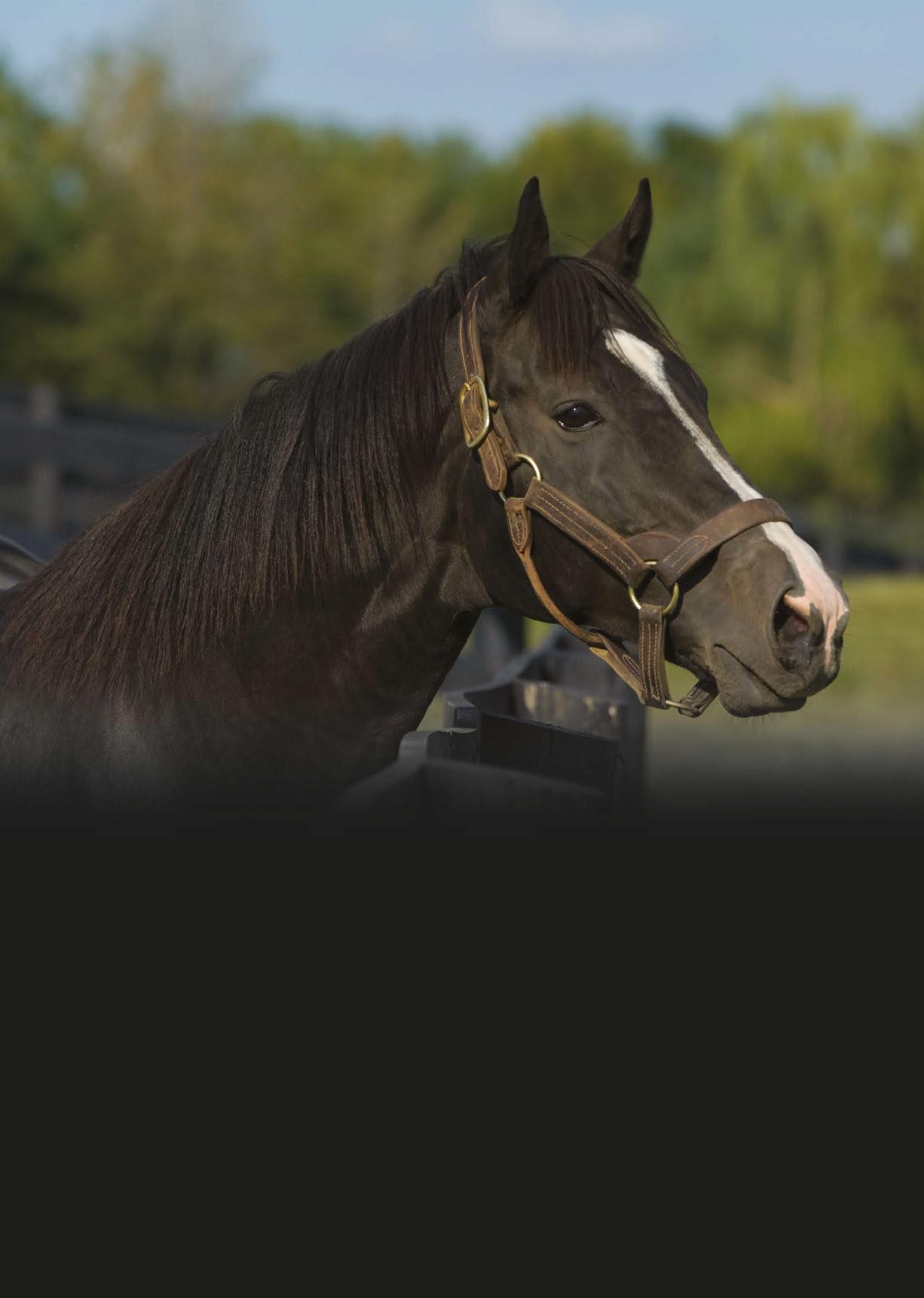
Visit members.breederscup.com to learn more about our nominations and racing programs. 2025 STALLION NOMINATIONS DEADLINE: JANUARY 1, 2025 NEWLY RETIRED STALLIONS HAVE 90 DAYS AFTER THEIR FIRST COVER.
When you nominate a stallion to the Breeders’ Cup, you are creating a legacy of success by increasing the value of your stallion’s progeny for years to come. Nominated foals beneft from the Breeders’ Cup Purse and Awards program, now totaling more than $34 million annually.
All 2025 stallions standing anywhere in the world outside North America in the Northern Hemisphere may be nominated to the Breeders’ Cup for only 50% of the stud fee. The resulting 2026 foals are automatically Breeders’ Cup nominated for FREE! NOMINATE YOUR STALLION NOW
From Newmarket nomad to Lambourn lifer, Ed Walker is keen to kick on at Kingsdown Stables where some talented juveniles and older horses could well take the trainer to the next level
Words: James Burn • Photos: Bill Selwyn
There’s a new Ed Walker in town. Okay, he’s not totally reinvented himself and the man who has become part of Flat racing’s furniture since he started having runners in 2010 is still shot through with some of the sport’s finest traditions, which is no surprise when he grew up near Kingsclere, where his late father Tim had shares in horses with Ian Balding.
Formative spells with Roger Charlton and Luca Cumani moulded the Lambournbased Walker into who he is today.
“Possibly too much”, jokes the 41-year-old, every inch the classic figure of what one might deem a gentleman English trainer despite the presence of a smartwatch on his left wrist.
What has changed this term is his success with two-year-olds, who have provided him with 13 winners from 60 runners - a fine effort set against the 15 winners (from 104 runners) he achieved in the whole of 2022 and the eight (from 74) recorded two years earlier.
“I remember an interview with Sir Henry Cecil and him saying the three things you needed to be successful were the three Ps; patience, patience and more patience,” Walker says. “It’s harder to be patient now and there’s more pressure on training two-year-olds. I remember Luca once describing two-year-old racing as Junior Wimbledon - no-one cared about it!
“But it couldn’t be further from what it is now and even Aidan [O’Brien] has changed in that regard; there’s much more emphasis on producing good juveniles.”
With that, and a pep talk from

bloodstock agent Ed Sackville, in mind, Walker set about restocking his squad this time last year.
“It’s been a great season,” he adds of a campaign that has seen Group glory for live Cheveley Park contender Celandine and admirable sprinter Makarova, as well as Listed strikes from Scenic and Almaqam, a horse his handler is sugar sweet on.
“The two-year-olds have been a real surprise and have contributed a lot, and hopefully they’re not done yet. Those juveniles would be the unfamiliar aspect of our season and not what we’re renowned for, but it’s been a conscious effort to change that.
“Ed Sackville is a great friend and ally and he’s said to me for a few years that we won’t attract big owners until we start having success with two-year-olds. I’m conscious Ralph Beckett and Andrew Balding’s careers seemed to leap forward when they started training better twoyear-olds, even though they have always done well with three-year-olds and older horses.
“They probably wouldn’t have been renowned for two-year-olds, but they’ve gone to the next level and I’ve tried to replicate that.”
The brilliant Starman, Walker’s first Group 1 winner in the 2021 July Cup whose yearlings are up for grabs this autumn and could make a splash, showed his trainer’s finesse with speedier sorts, but do not expect the traditionalist –albeit a forward-thinking one – to ever change tack completely.
“We’ve done well with sprinters, but I’d love a good stayer,” he continues.

Ed Walker

Royal Ascot winner English Oak (Mattie Hicks) leads Crack Shot (Molly Stratton) and Vicario (Billy Loughnane) on the gallops while below, the trainer is seen with exciting two-year-old filly Celandine and also sharing a joke with ex-jockey George Baker, now a race planner for the Walker string

“I was never going to be Brocklesbyready with the two-year-olds because it doesn’t excite me. From a hunting, eventing background, I’m naturally drawn to a bigger, scopier horse, so I’ve had to go against my instincts to buy sharper types.”
A purchase of another kind was on Walker’s mind earlier in the year when he forked out for 67 boxes and more from former landlord Bjorn Nielsen at the picturesque Kingsdown Stables, on the foot of Lambourn’s gallops, the yard where 1974 Derby hero Snow Knight was housed.
An outlay of that nature was significant and perhaps risky for the father of Matilda, Rupert and Harry who was a nomad in Newmarket, where he moved four times, before settling in West Berkshire at the end of 2016.
It’s therefore handy that the rest of the
Ed Walker
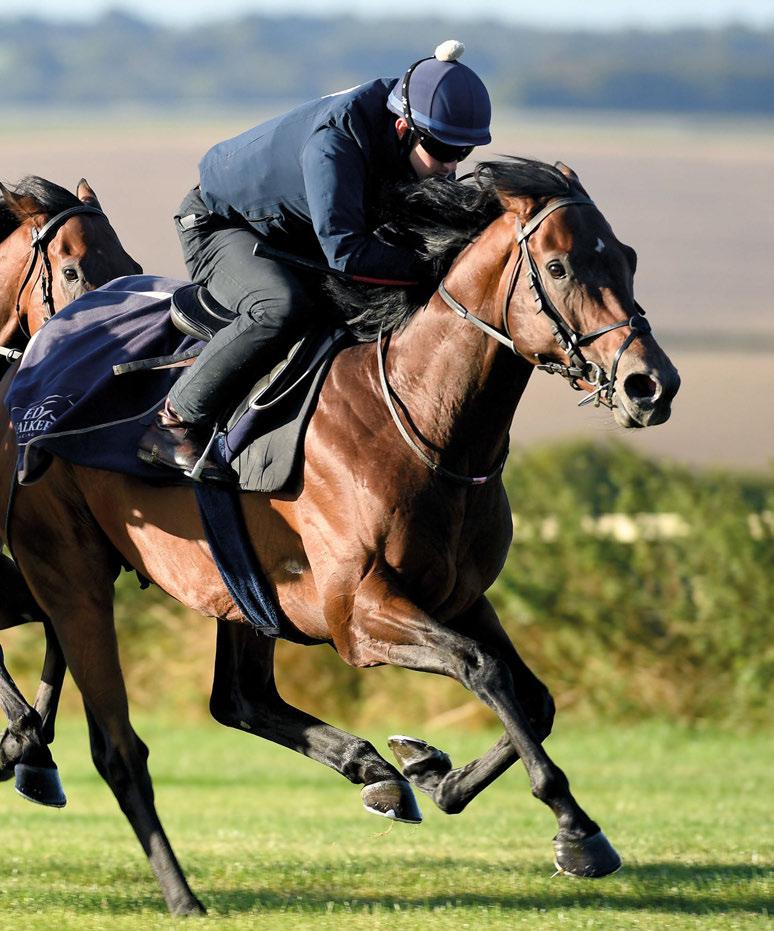
string, along with the two-year-olds, have helped contribute to a healthy 54 winners, which puts the team in a sound position to challenge its personal bests of 66 last year and in 2021, while the £1 million prizemoney barrier has been broken for the fourth successive season.
“We’re quite well leveraged up now and, after we bought the yard, I did say to my wife Camilla it would just be our luck the horses would get sick, the owners would leave and we’d be left with a huge debt and empty yard,” he goes on. “Thank God, that wasn’t the case and it’s been the opposite, but it was terrifying when Bjorn put the yard up for sale. Not just for me, but my staff too, as they invested in the business and this was home for us all. It was tricky and stressful, and a big worry.”
An enthusiastic, willing and engaging
subject, Walker is alive to the issues British racing faces, but refuses to play the role of doom-and-gloom merchant.
“There are challenges with costs and staffing, but I think the demand for horses is healthy,” he says, well aware that the prestigious Tattersalls yearling sales are just around the corner.
“The Racing Post loves to doommonger and there are major concerns with the future of the sport, but I think, as an industry, we need to believe more in our product and what we do is correct. We look after horses fantastically well and have a fascinating sport. I think racing is in decent nick; there are big and small owners coming into it.”
Some aspects of the sport cannot escape introspection, however.
“The complexity of racing makes it interesting, and it does need studying, but I don’t think that’s sold well enough,” reasons Walker, who also leases 11 additional boxes off Nielsen and has expanded by taking a foothold at former trainer Mikael Magnusson’s nearby premises.
“It’s almost belittled, which is wrong; when I was a kid, I found it fascinating working out which horses needed soft ground, for example.
“An owner of mine had a runner in a Group race for another trainer recently and I didn’t even know because you can’t follow it all. I was on the motorway to Haydock that day. I couldn’t keep up and I love it - so how do we attract people into the sport and tell them where to start?
“In Hong Kong, there are two meetings a week with all the time in the world to study form, but here it seems like it’s just like the slot machines equivalent – there’s ››
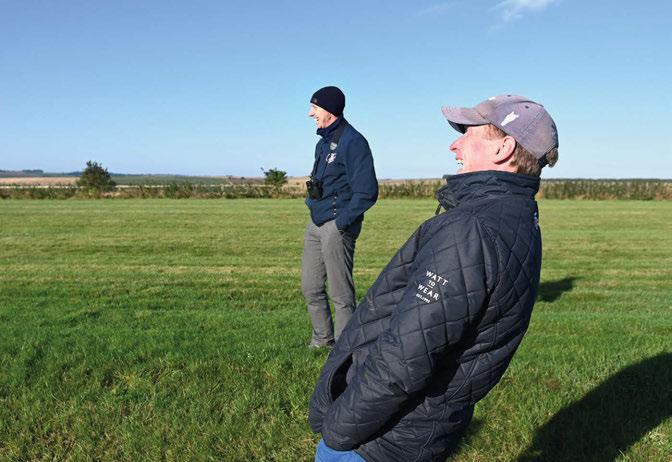
›› too much of it.”
For Walker, that ‘it’ is centred on what he labels “bad racing”.
“It doesn’t do anything for the sport,” he continues. “It’s not interesting and isn’t good to bet on. Bad horses shouldn’t earn much money at all. If you’re a bad footballer, you play on a Sunday morning with your mates, if you’re a bad tennis player, you stop and make money doing something else. In racing, you want to reward achievement.”
The introduction of Premier racing this year was viewed as a vehicle to reward, but Walker longed for it to be better marketed and more radical, arguing it has done little to halt the export of talented horses abroad.
That transfer market is one he is au fait with having a number of Hong Kong clients.
“I’m doing my entries for the horsesin-training sale, and you’ve got a threeyear-old rated 85 who could make a few hundred grand going abroad, so I can’t justify keeping it because it can’t win that here,” outlines Walker, wishing more money from that “bad racing” was pumped into the mid-tier.
“The owners probably don’t want to sell, but it’s probably better they do, although that’s been a massive frustration in my career. I normally advise selling because, when an offer comes in, owners’ expectations rise quite significantly – and the fall is bigger.
“I’m immensely grateful to my Hong Kong owners, the likes of Ken Lau, Fred Ma and the Siu family, who have been massive supporters and, dare I say, we wouldn’t be where we are now without them. I accept they have horses here to qualify them
and sort out which ones are most suitable for Hong Kong, but if we could stop the English-based owners selling horses overseas by making it more appetising here, that would be a start.”
Jockey Club Racecourses, according to Walker, who also has top-level triumphs on his CV thanks to the classy Dreamloper and was a Royal Ascot winner again in
“I wouldn’t go back to Newmarket for all the tea in China”
June thanks to the talented English Oak in the Buckingham Palace Stakes, could play a bigger part in that by taking a more direct approach in helping smooth the disputes between bookmakers, horsemen and racecourses, while capping trainers’ strings – “I don’t think 250-, 300-box yards are good for the sport” – is another suggestion.
But don’t for a second be fooled into thinking Walker wants to become a fulltime mouthpiece minded to ruffle the feathers of racing’s leaders.
“I’m passionate, not political,” he stresses. “I absolutely love what I do, but I worry about it a lot and get cross and frustrated when things aren’t being done properly or for the right reasons.
“If you were tasked with setting up horseracing on the moon, it’s the easiest
He might not admit it, but Jamie Osborne is probably the biggest fan of his daughter Saffie, a rising force of the weighing room who could hit 100 winners in 2024.
In second place in the supporter stakes is Ed Walker, who quickly recognised the younger Osborne’s talents.
“We’ve supported her since she claimed 7lb,” he says. “We gave Saffie her first Group winners with Random Harvest and she did a great job on that horse.
“She’s a brilliant rider who is fiercely ambitious, which will stand her in good stead. She’s ridden more winners for us this year than anyone else by a long way – 20 against the ten Tom Marquand has ridden – so she’s a big part of the team and will remain so.”
Walker, who speaks fondly of Kieren Fallon leading a golden generation of jockeys in the 2000s, adds: “I suspect Saffie will get on better and better horses soon and tactically she’s very astute. People go on about jockeys being strong in a finish, but I think it’s more about balance and rhythm and that’s her.
“She’s very organised in a finish and keeps it smooth, nothing’s clunky, while her feedback is brilliant too and she’s great around the yard. That breakthrough horse will come, but then we won’t be able to use her!”
Ed Walker
thing to do - build it like Hong Kong. Yet here it’s so dysfunctional and tied up in knots. Will it ever get untangled? I don’t know.”
What Walker is certain of is his move to Lambourn and purchase of Kingsdown.
“Oh, I love it,” he says of the Valley of the Racehorse. “It’s the best thing we ever did, and this place is epic. I love the scenery and peace and quiet and wouldn’t go back to Newmarket for all the tea in China.”
He will soon be back there, temporarily at least, when Celandine contests the Cheveley Park Stakes, bidding to underline her trainer’s newfound deftness with juveniles.
“It will be a hot race, but she deserves to be there,” says the Radley graduate. “And she’s not the only one to excite me as I’m convinced Almaqam is a Group 1 horse and he’ll be bigger and stronger next year, but I just need to find the right race for him this season.
“English Oak and Makarova, who will be retired after running in the Abbaye, are worth noting among the older horses.
“Then, along with Celandine, we’ve Troia, Miss Tonnerre, Qilin Queen and Saariselka as two-year-old fillies to look forward to. They’re stronger than the colts, who are big and backward, so while I’ve tried to reinvent myself with the twoyear-olds, I’ve not changed the way I’ve trained the backward ones because I don’t want to mess them up by trying to make them two-year-olds. Hopefully we’ve still got some old Ed Walker horses coming through too.”
So, it’s not entirely out with the old and in with the new, despite the latter working so well.

2yo in France and the highest rated son of HAVANA GREY (rated 2lb higher than his sire)
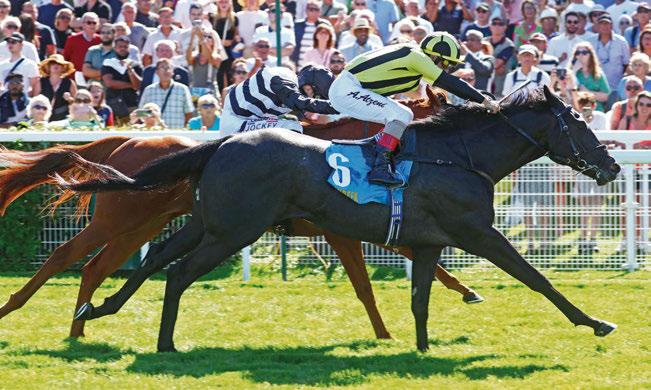

VANDEEK (left) finishes with a flourish to deny Ramatuelle in the Gr.1 Sumbe Prix Morny.
VANDEEK (below) runs out an impressive winner of the Gr.1 Juddmonte Middle Park Stakes.
Also winner of the Gr.2 Richmond Stakes and placed in the Gr.1 Darley July Cup and Gr.2 Sandy Lane Stakes.

From the speedy stallion-producing family of ANABAA
By a Champion First Crop Sire out of a mare from the immediate family of Gr.1 winning 2yo BALBONELLA; Champion Sprinter and Champion Sire ANABAA, and Gr.1 Poule d’Essai des Pouliches winner ALWAYS LOYAL.
A 625,000gns top lot at the 2023 Tattersalls Craven Breeze-Up Sale
Please enquire early to avoid disappointment
It takes ambition and dedication to fly solo in this business but for some of those young consignors who have recently taken such a brave leap, rewards have already been forthcoming
Words: Nancy Sexton
Making the leap as a sole trader in this industry is not for the fainthearted, especially against a market backdrop as challenging as today’s. Yet the beauty of the bloodstock world is that opportunity tends to reward hard work and passion. Working with bloodstock is not a job but a way of life and there are countless example of those who embrace that notion moving up the ladder to become leaders of their field.
The world of consigning has welcomed a number of young and ambitious people to the fold over the past few years, all of them already well known on the sales circuit but brave enough to dive in as individual operators. As the yearling sales circuit gets into full swing, we spoke with some of them to discuss how their season has unfolded to date and their hopes for the future.
It was following a chat with Paul Thorman of Trickledown Stud that Alice O’Brien and Bradley Wood struck out on their own as Ashbrooke Stud in early 2020, and with several successful pinhooks in the books and a strong work ethic, the pair haven’t looked back.
Based near Bishop Auckland in County Durham, the stud sold its first draft of foals at last year’s Tattersalls December Sale highlighted by a 92,000gns colt by Havana Grey. They have since enjoyed a successful first foray into the Goffs Premier Sale market as the vendor of a £60,000 homebred Sergei Prokofiev filly and having sold stock to trainers such as John Quinn,
Hugo Palmer and Marcus Tregoning at the subsequent Tattersalls Somerville Sale, are set to return to Park Paddocks this month with a select draft for Books 2 and 3 of the Tattersalls October Sale.
“We have both been involved in racing for some time now,” explains Alice O’Brien. “Bradley started off as a boy riding out for local trainers on weekends and during school holidays. He’s always been very aware of the bloodstock side of things and credits a lot of his education to former trainers Karen McLintock and her partner Don Eddy, who were both very shrewd judges and great buyers of a horse.
“He’s been fortunate enough to spend time with some fantastic dual-purpose trainers including Howard Johnson, who he still assists to this day with his bloodstock.
“I started off with ponies at a young age and grew up on a show pony stud. I was lucky enough to show ponies all over the UK and found racing and bloodstock a little later whilst at university.
“I spent my spare time and mornings
“We’ve had to chip away in the very difficult lower end of things”
before lectures working for Alan McCabe when he was based at Averham Park, and that’s when the bug really got me. We had some lovely horses then including Caspar Netscher, who won the Gimcrack, Mill Reef and Greenham Stakes.”
As anyone who has caught the racing bug will say, the next step is generally to acquire stock of your own. And in that, Alice and Bradley are no different.
“We were brave – or stupid – in the beginning and decided to give pinhooking a go,” says O’Brien. “We clubbed together some savings and bought our first foal to resell as a yearling. The rest is history – it spiralled out of control!”


Wood adds: “In the beginning we sold our stock under Paul and Sara Thorman’s Trickledown Stud banner. They have been fantastic to us – you really couldn’t ask for better people to turn to when you need advice. We were at the point where we’d accumulated one or two client horses along with a couple of weanlings of our own that we’d rear each year. PT pretty much said to us that it was a case of ‘putting ourselves fully in the game, or taking ourselves out of it’. We chose to put ourselves in it!”
That leap came at a challenging time during the first Covid lockdown in the spring of 2020. But it says a lot for the pair’s ambition that it never deterred them and four years on, they have the clients and stock to show for it.
“I wouldn’t say it’s been easy,” says Wood. “It’s never easy when you can’t
afford to go and buy the foals you really want, or cover your mares with Frankel or Dubawi. We’ve had to chip away in the very difficult lower end of things and try to strike lucky along the way, which we have been fortunate enough to do a couple of times.”
O’Brien adds: “We sold a cracking Havana Grey colt for 92,000gns to Tally-Ho at last year’s December Foal Sale. That was a lovely day but getting £60,000 for our homebred Sergei Prokofiev yearling filly at the Premier Sale was equally as special considering we chose to buy her back as a foal for just 15,000gns. Bradley was especially fond of her and had great belief she would make up into a real nice individual this year. She went to great people in James and Jacko Fanshawe and she’s one we are both very proud off. Fingers crossed for her next year!”
Chris Gillon is well known from his time as stud manager for the late Duke of Roxburghe at his Floors Stud near Kelso.
Gillon was at the helm of the stud’s final Tattersalls October Sale draft in 2020. The Duke, a real racing enthusiast best remembered as the owner-breeder of champion Attraction, had died the previous summer and 18 months later it was announced that a partial dispersal would take place and Gillon would continue to operate on the estate under his own steam. In the meantime, in a testament to the Duke’s pedigrees and Gillon’s team at Floors, that final October Book 1 draft went on to average over 630,000gns and include a 2,100,000gns son of Dubawi.
Having sold at various sales as Gillon
Bloodstock since then, Gillon returns to Book 1 this year under his own name with a Palace Pier filly who is closely related to Classic winners Magna Grecia and St Mark’s Basilica.
“I rode in point-to-points in my younger days and have mostly always been around horses,” he says. “My first jump into the breeding side of things was in 2013 when I came to Floors Stud to cover maternity leave and luckily they kept me on. I worked up from stud hand to stud manager.
“It was in the thick of Covid when I launched my own business, which was always going to make things very tricky. The current Duke of Roxburgh was fully supportive of my venture, which made things easier, and helped at every opportunity to get us going. These things take time but I have managed to bring in some very good owners and having a stud already established and so well set up by the late Duke of Roxburgh in such a stunning setting helped.”
There was a major early reward for one of those supporters not long after in the sale of a New Bay colt for 325,000gns to Blandford Bloodstock at Book 2 of the Tattersalls October Sale. That day naturally ranks as one of the highlights but there is now the scope to eclipse that with this month’s return to Book 1.
“The New Bay colt was produced for some local owner-breeders and that gave us great satisfaction,” says Gillon. “Equally as important is that we are at Book 1 this year for the first time under my own

banner, which is good sign as we all strive for quality over quantity and the yearling is a filly who has been raised on the farm.”
Gillon has seen plenty of the industry during his time at Floors – so what advice would he give anyone looking to work in the bloodstock world?
“There are some fantastic courses available,” he says. “It makes sense to go and do these courses and get an idea of the industry. That will help you get an idea
“Fickle, unforgiving and blinkered. The bottom end has gone. The £10,00020,000 yearling is almost impossible to sell and the £20,000-50,000 yearling has far fewer friends than usual. What can we expect though? Look at the money missing from the market this year already. Johnny McKeever spent half a million in Doncaster last year with not a purchase made thus far in 2024. John Dance spent six million on yearlings in 2022, which is obviously missing going forward. The breeze-up boys overall got a kicking back in the spring. These things leave scars on the yearling market and as vendors we have to ride it out.” Bradley Wood, Ashbrooke Farm
“It seems to be very tricky from the middle down. You either have it or you don’t, there is not a lot in the middle.” Chris Gillon
“Trade at the horses-in-training sales remained strong, bolstered by the presence of international buyers. The yearling market supply seemed to exceed demand, especially at the middle and bottom end of the market. Despite the challenges so far, there are still plenty of positives to be taken.” Chloe Battam and Harriet Jones, Consign Ltd
“I did Donny, Somerville and BBAG and it was the same - top horses sold well but it’s tougher further down. It’s tough for all of us whether we’re consignors or breeders. It’s about riding the waves.” Hetty Spencer
of which direction you want to take.”
The brainchild of Chloe Battam and Harriet Jones, Consign Ltd burst on to the scene at the Tattersalls July Sale with a debut draft of 13 horses. Since then, they have dipped into the yearling market with representation at the Goffs Premier Sale, where their consignment turned over £110,000, and the Tattersalls Somerville
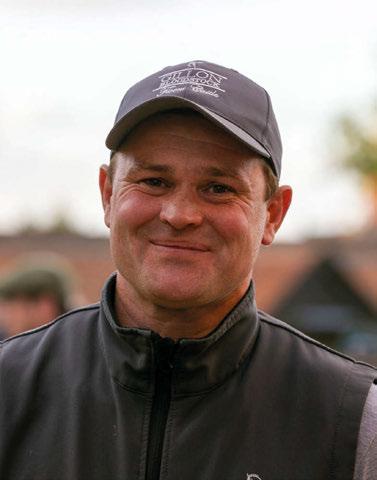

Sale. Next up is the Arqana Arc Sale at Saint-Cloud and with it the opportunity to sell Kaadi, a high-class sprinter backed up by a good pedigree.
It has been quite the first year of operation for Battam and Jones but one that is also the result of years of ambition and work.
“Although my family were terrified of horses, I grew up riding friends’ ponies and spent every weekend with them,” says Battam. “After my mum passed away when I was 12, my grandparents bought me a pony, which I hunted and show-jumped. Looking back, it was probably to keep me out of trouble!
“At 16, I stumbled into the horseracing industry by chance, taking a part-time job at Far Westfield Farm with Jamie Lloyd while in college. Jamie got me riding yearlings, and even though I fell off almost daily, I always got back up, quickly learning the value of a neck strap!
“That experience gave me the racing bug, which led me to pursue a degree in International Horse Racing Business at Hartpury University. During my time there, I worked in a racing-focused marketing office, rode out for a local trainer daily and spent summers with Sir Mark Prescott in Newmarket.
“After graduating, I returned to Newmarket to work for Sir Mark full-time before spending a year in the marketing department at Darley and Godolphin. I then joined Jamie Railton as his assistant, where I gained hands-on experience managing large consignments.”
Jones was exposed to racing at an even earlier age and gained her experience through time spent with trainer Karl Burke and breeze-up vendor Mark Grant.
“I spent many years working with Karl Burke, where I had the privilege of working with some outstanding horses including Laurens and Havana Grey,” she says. “Karl has been a huge influence on my career, not only being a world-class trainer but someone who also buys his own yearlings and sources his own stock.
“Spending many years working
alongside him from both the racing and bloodstock side has provided me with invaluable experience. This ignited my passion to become more involved in the bloodstock industry.”
Jones continues: “I’ve been fortunate enough to work at sales worldwide and I also had two incredible seasons with breeze-up consignor Mark Grant, including the unforgettable experience of prepping and selling multiple Group 1 winner Bradsell.
“Working with Mark was a huge learning opportunity, and it was during this time – while regularly attending sales – that I recognised an opportunity to enhance the current approach to consigning. This led to the idea of founding Consign.”
Considering how quickly it has gained a foothold, the idea for Consign Ltd took relatively little time to come to fruition.
“After meeting for the first time in July last year and discussing the idea of setting up a consignment, the decision to leave full-time work and start the project felt like a natural step,” says Battam. “We shared a clear vision for what we wanted to contribute to the industry, saw a gap in the market for what we wanted to offer and had confidence in our abilities to make it happen.
“It took six months to turn our idea and business plan into what we delivered at the Tattersalls July Sale. While it may have been challenging at times, we dedicated every spare moment to ensuring everything was done right. Even with Harriet working the breeze-up sale in Hong Kong, taking calls at odd hours, we were ››
“We need to celebrate the occasion more. The glamour of summer Flat racing should be exaggerated and the romance of National Hunt racing should equally be brought to the fore. It’s all about the experience for me and that goes for attracting new owners too. We need to crack down on admission prices and we certainly need to be looking at things like drinks prices – £7 for a pint in a plastic glass just isn’t okay. If Wetherspoons can sell it in a real glass for £1.99, there really isn’t an excuse is there?” Bradley Wood
“The sport needs to showcase that you can come into this industry from nothing and from any background. But with ambition and dedication, the opportunities are limitless. Racing is starting to move forward and adapt with the times so there is plenty of opportunities for fresh minds and perspectives to keep driving the industry forward.” Chloe Battam and Harriet Jones
“I think it’s great what the racecourses are doing in trying to get more young people interested, like getting school children to the races and meeting the jockeys. Having someone like Oisin Murphy doing those demonstrations is brilliant. But I think more can be done, especially when it comes to the breeding side. Perhaps we could get people into the sales, show them how it’s done and how important they are.” Hetty Spencer
Give us a horse to look out for at the sales...
“I have a lovely Palace Pier filly going to the Tattersalls October Book 1 Sale out of Prance, a half-sister to [Classic winners] St Mark’s Basilica and Magna Grecia. She has lots of quality, good size and walks well. Prance boards with us and was owned by the late Duke of Roxburgh in partnership with Newbyth Stud.” Chris Gillon
“We have a nice colt by first-season sire Nando Parrado heading to Tattersalls October Book 2. He’s out of an Exceed And Excel mare and is a half-brother to a Royal Ascot winner in Lola Showgirl [winner of the Kensington Palace Stakes]. He has a very sharp brain and has taken to his lunging very well, he moves for fun and I’d like to think he has every chance of being a proper horse.”
Alice O’Brien
“We are thrilled to be selling at the Arqana Arc Sale at Saint-Cloud. Our entry, Lot 47, Kaadi, is a black-type performer with three Listed placings and a recent runner-up finish in the Group 3 Prix d’Arenberg for Karl Burke. A half-sister to Group 3 winner Happy Together, she
committed to making it happen. It wasn’t easy - starting any business never is – but with a lot of hard work, we’re really pleased with where we are and grateful for the support we’ve received.”
She adds: “Opportunities won’t just come to you – if you’re interested in a specific area of the industry, don’t hesitate to ask and get involved.
“Work hard, seek advice and take advantage of the wealth of knowledge and guidance available from experienced professionals. Keep learning and never limit yourself to just one role – there’s plenty of space to grow and explore different aspects of the sport!”
A whirlwind debut season for Hetty Spencer’s Spencer Sales has already taken in the Goffs Premier, BBAG September and Tattersalls Somerville Sales, all in the space of less than two weeks.
But then of course the sales beat is second nature to Spencer given the time she spent as head of sales for Jamie Railton and as part of the sales team for Con Marnane’s Bansha House Stables. That
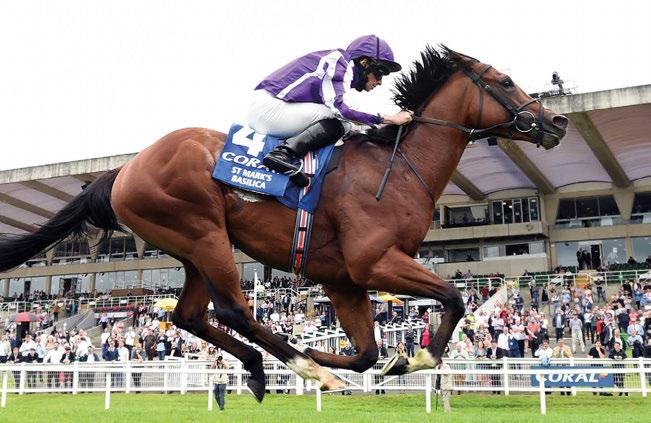
comes from the illustrious family of Group 1 winners Phoenix Reach and Carroll House.
“After Paris, we head straight to the Tattersalls October Yearling Sales, where we’ll be offering 19 yearlings across Book 2 to Book 4.
“We’re incredibly grateful for all the support and looking forward to an exciting sale!” Chloe Battam and Harriet Jones
in turn has ensured that Spencer is a well known and respected face on the circuit, all of which has understandably aided her transition to solo operator.
“My mum and dad had a keen interest in racing and were owner-breeders on a small scale,” she says. “I grew up in Bury St Edmunds and being based near Newmarket was a help.
“I think it was always inevitable that I was going to get into the industry – I was always on the back of a horse or around them somehow. I showed competitively to a high grade up to my late 20s and then working at the sales took over.”
Spencer’s grounding runs deep given she spent 12 years as part of the Railton sales team. Such a lengthy tenure, however, also made the decision to fly solo that much more difficult.
“Taking a leap like that is always going to be hard,” she says. “But it was really hard leaving Jamie – I loved that job. His former head, Sarah, had been very helpful when I started, she helped train me to do that job and I was always very comfortable doing it.
“But as much as I loved it, I needed a new challenge. So I decided to take
“It’s all systems go. I’m excited to be heading to Goffs with some nice horses by fashionable sires. Then I’m going back to BBAG for its October Sale with a Nathaniel colt who is related to Prix Jean Prat winner Puchkine. I’ve also got some good foals going to Goffs and Tattersalls including a three-parts sister to Sosie [winner of the Prix Niel]. He’s now favourite for the Arc so I’ll be cheering him on from afar.” Hetty Spencer
the plunge and set out a plan that after helping Con and Amy [Marnane] at the breeze-ups in the spring, I would then go out on my own.”
Spencer Sales made its yearling sales debut at the Goffs Premier Sale and then in a sign of international ambition, headed to Germany where a select draft included a €50,000 son of Study Of Man sold to Liberty Racing. Next up is the Goffs Orby Sale, where colts by Blue Point and Space Blues will be offered, before a return to Newmarket for Books 2 and 3 of the October Sale. Another sale at BBAG beckons after that before the winter breeding stock sales kick in.
“I never thought that I would be selling at so many different sales in such a short space of time,” she says. “I have a lot of people to thank for that, not just the owners but the people who have helped me set up.”
Amid all this, Newmarket-based Spencer can still often be found on the back of a horse when time allows.
“When I’m not at the sales, I ride out for George Boughey in the mornings and then help a few of the pre-trainers,” she says. “I’m always doing something!”


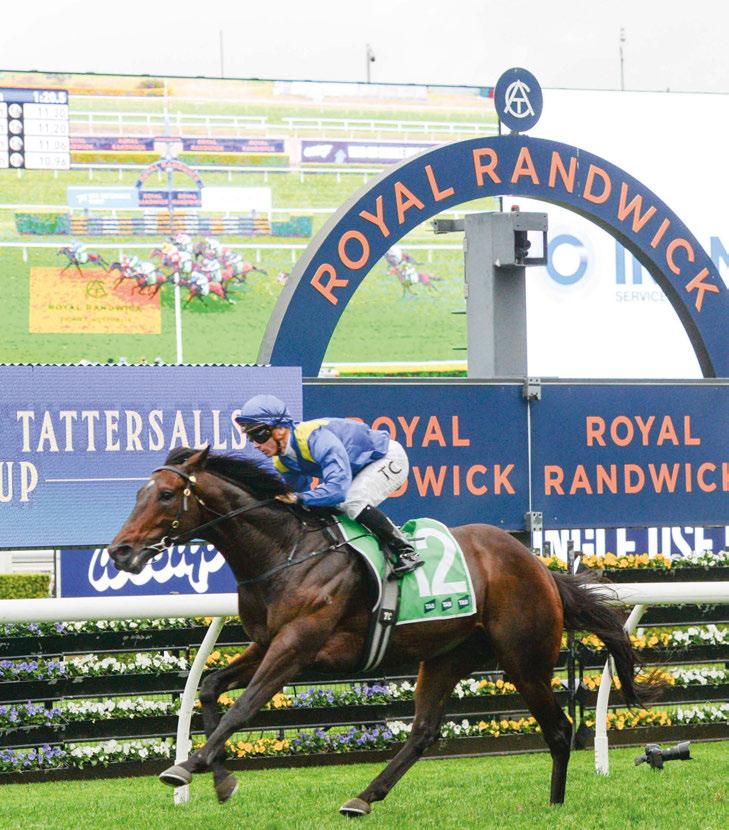

A full-sister to Arc heroine Alpinista and the return of Daylesford Stud as vendors under its own name are
just
some of the highlights of this year’s highly anticipated Tattersalls October Yearling Sale
Words: James Thomas
Every October the best of the best turn up at Tattersalls. Seven graduates of the blue-chip Book 1 section of the October Yearling Sale have won a Group 1 race this season alone. Broaden the parameters and we find the sale’s history has yielded 111 Group 1 winners that have claimed exactly 200 top-flight races between them. Make no mistake, this is the cream of the crop.
But the best in this year’s catalogue might just be a cut above the event’s already high standard. No yearling in the northern hemisphere will be
more highly anticipated than Lot 72 from Staffordstown, Ireland. The filly in question possesses the kind of pedigree that, usually, money can’t buy, being a Frankel full-sister to Kirsten Rausing’s homebred Prix de l’Arc de Triomphe heroine Alpinista.
Rausing describes herself as a “seasoned vendor who’s been doing this for 50 years plus”, but when asked if she has ever presented anything quite like this at public auction before, she pauses before replying “Has anyone?” It is a fair question to ask.
The most expensive yearling ever

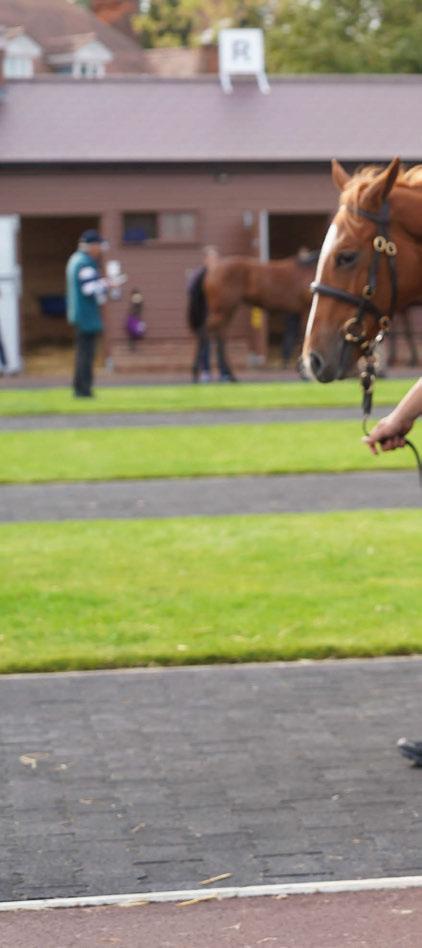
Anticipation runs high ahead of the Tattersalls October Sale, topped last year by the Frankel colt Galveston (below) at 2,000,000 guineas
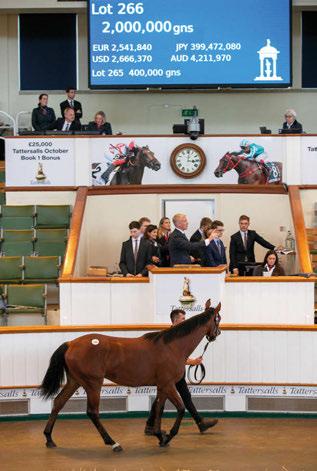

sold in Europe changed hands at Book 1 in 2013 when Al Naamah, a Galileo sister to the previous year’s Oaks winner Was, was bought by Al Shaqab Racing for 5,000,000 guineas. Some industry insiders have suggested that record will come under serious threat when the Frankel filly takes her turn in the famous Park Paddocks ring.
Of course the filly’s price will depend on her physical attributes as well as her impeccable pedigree. Although she is bay, as opposed to her famously grey sister, Rausing says the pair share some clear similarities.
“They are very similar in many ways, although this filly is slightly taller and she will be bigger than Alpinista, who was very small,” she says. “And
obviously she’s bay, not grey. But other than that they are very similar. She’s such a well-behaved filly; she’s just like her sister and very laidback and easy to deal with.”
Reflecting on Alpinista’s crowning moment, and what has followed that sixth Group 1 triumph, Rausing says: “It will be hard to better, won’t it? Many people would still call the Arc the most important race in the world. Alpinista has settled into life at the stud very well. She’s always been such a very nice, settled sort of person so she took to the whole thing as a matter of course. She has a very nice filly foal by Dubawi and she’s back in foal to Study Of Man.”
It is, Rausing says, the proliferation
of female family members that has prompted the decision to sell such an exquisitely bred filly.
“I also have Alpinista’s dam, Alwilda, who in turn has a two-year-old filly by Iffraaj called Alpetta with Sir Mark Prescott,” she continues. “She also has a colt foal full-brother to Alpinista and she’s in foal to Sea The Stars. I also have the stakes-winning Alpenblume, who’s a half-sister to Alpinista by Kendargent, and she’s in foal to Frankel.
“I’ve got quite a few members of the immediate family and many others of the slightly extended ‘Al’ family, not least Alwilda’s half-sister All At Sea, a stakes winner and dam of Eldar Eldarov. There’s an enormous amount happening in the family and the female
members will hopefully be sent to good stallions in the future.”
She adds: “I find that all decisions to sell are difficult, depending on the level of the market you’re at. But the fact that I have the own sister, two half-sisters, the dam, and so on, means that I am well covered with the family. If you look at the yearling filly’s pedigree page, every single name is bred by me, right down to the bottom of the page.”
Rausing is selling 29 yearlings across this year’s European sales, including a Siyouni colt out of Group 1 winner Madame Chiang, who is also being offered at Book 1. Although the sister to Alpinista looks certain to generate her share of hysteria, Rausing is conscious the wider market is unlikely to prove quite so lively.
“We, as an industry, have to temper our expectations because the thoroughbred breeding industry can only reflect the external financial environment of the rest of the world,” she says. “We also have to bear in mind that racing is part of the entertainment industry. Nobody is forced to buy a yearling or forced to have horses in training. Unfortunately, when the socioeconomic situation is compromised it is always reflected first in this type of industry, whether it be racing or West End theatre tickets or anything like that.”
However, while that sober assessment may apply to the vast majority of the market, the sister to Alpinista is in a category that, on all known evidence, should be impervious to the usual peaks and troughs in trade. “One would hope she sails above that sort of thing because she’s a rare jewel,” says Rausing. “It just depends on who wants her and who’s likely to bid on her.”
While the sister to Alpinista may possess a standout pedigree, she is far from the only blue-blooded offering within the 448-lot Book 1 catalogue. To illustrate the depth of quality, consider that the catalogue contains siblings to 45 Group 1 winners, while 20 mares who won at the highest level also have progeny entered. The sire profile is of a similarly elite standard, with 21 lots by Dubawi, 25 by Frankel, 26 by Kingman, ten by Siyouni and 23 by Wootton Bassett, to highlight but a few of the blue-chip stallions represented.
“The sister to Alpinista is, without doubt, an outstanding filly by anyone’s standards,” says Tattersalls’ Marketing Director Jimmy George. “It’s wonderful to have a yearling of this calibre

Eagle-eyed observers will have noticed a fresh addition to the vendors’ index in the Book 2 catalogue, albeit a name with a familiar ring to it. Lady Bamford’s Daylesford Stud has not sold its own yearlings at Tattersalls since 2014, but returns this year with a draft high on quality. The five colts all catch the eye on pedigree, none more so than the only Dubawi among the 773 lots in the Book 2 catalogue.
“We’ve been selling colts through The Castlebridge Consignment for a few years now but this year we thought we’d go back to our ownerbreeder roots, sell all the colts and keep the fillies and do it under our own banner,” says stud manager Chris Lock.
“Lady Bamford and Alice are very keen for the stud to consign our own horses, and when they mentioned it in the spring we were delighted to be given the opportunity. We’re proud of what we’re breeding here so we thought we’d showcase the type of horses Daylesford can produce. We’ve produced a lot of nice horses over the years and it’s nice for people to have the opportunities to buy into these families.”
Lock says that it has been business as usual in terms of prepping the yearlings, but notes the move to sell
under their own banner has given the staff an extra spring in their step.
“We’ve prepped the horses the same way we would usually, but there’s definitely more excitement on the stud,” he says. “The team are really looking forward to being part of the sale. Everyone’s proud of the horses we’re bringing to Tattersalls and they put so much into them during prep that it’s nice for them to see it through to the finishing line. They’re rightly proud of the work they’ve put in as the horses all look really well.
“We really want to hit the ground running and show people that we’re serious about the colts we’re bringing to market, so we’re excited to get to Tatts now.”
Not only is Lot 1,205 the only Dubawi in Book 2, the colt is out of Lady Bamford’s homebred Prix de Diane heroine Star Of Seville. This pedigree makes the youngster a fullsibling to two winners, most notably the progressive 97-rated three-yearold Lord Of Love.
“We feel like the Dubawi is the jewel in the crown of our consignment,” says Lock. “He’s a very strong horse, he’s got great power, a great hind leg and a very nice walk. Obviously he’s out of a Group 1 winner, so he’s got the pedigree behind him too. He’s an exciting
horse and we felt it made more of a statement bringing him to Book 2. He could’ve easily gone into Book 1, Tatts would have taken him, but we’ve made the decision to focus on the Daylesford name this year and we thought he’d help bring attention to the draft.”
Lot 976 is a New Bay colt out of Mumbai, a daughter of Frankel from a Classic-winning family, while Lot 1,216 is a son of Wootton Bassett and the Group 3-winning Suphala, who is also by Frankel. Both sires have enjoyed a productive season, particularly Wootton Bassett, whose first crop conceived at Coolmore already contains eight stakes-winning juveniles, more than any other stallion in Europe.
“The Wootton Bassett is such a powerful horse with a great walk,” says Lock. “Every weekend the stallion is having two or three stakes-winning two-year-olds. It’s fantastic and he’s doing it all for us. We also have a very nice New Bay colt out of Mumbai. She’s from Billesdon Brook’s family, so he’s another well-bred colt. He’s a big, strong horse with good legs and, again, New Bay is having lots of nice two-year-old winners.”
The draft is completed by two sons of exciting first-crop sire St Mark’s Basilica. Lock is effusive in his praise for the young Coolmore stallion. “I love them,” he says. “We’ve got four yearlings by St Mark’s Basilica on the stud and we’re thrilled with all of them. We’ve sent mares to him on the strength of these and we’ll use him next year too, and in the years to come. They’re seriously nice animals. They’ve got very good attitudes and are great movers.”
Lot 728 is out of Excellent View, making the youngster a half-brother to the Listed-winning Mutaraffa, while Lot 1,182 is from “a proper Daylesford pedigree” being out of Snow Moon, a Listed-placed daughter of Anglo-Irish Oaks winner Sariska.
Lady Bamford’s breeding operation is also represented in Book 1 by a Frankel colt out of Listed winner Queen Of Love, who is consigned by Watership Down Stud as Lot 361. Daylesford also offers three lots in Book 3, including a colt by Sea The Moon who is the final foal out of Cheveley Park Stakes winner Magical Romance (1,417).
The four Books of last year’s
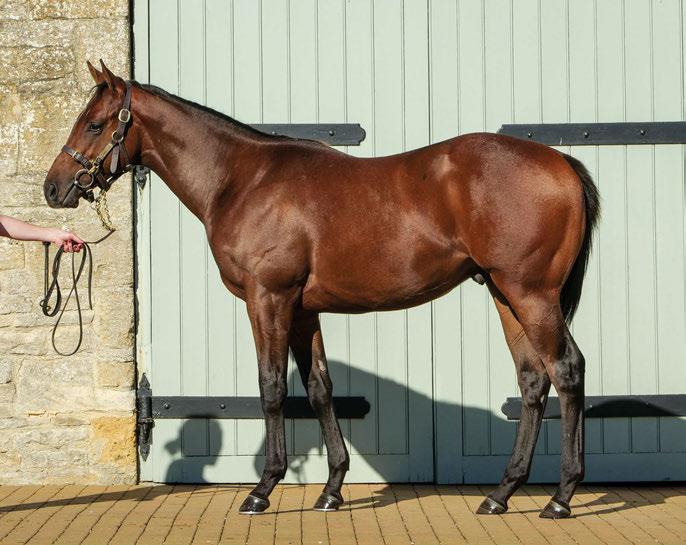
October Yearling Sale saw a massive 2,111 entries across nine individual sessions. There has been an 11 per cent reduction across the four Books this year, with entries capped at 1,873. There are 448 lots in Book 1 (down 84 lots, 16 per cent less), 773 in Book 2 (down 47 lots, six per cent less), Book 3 has 571 entered (down 78 lots, 12 per cent less) and Book 4 has 81 (down 110 lots, 26 per cent less).
This decision has been taken to make for a smoother process for buyers and sellers alike, says Tattersalls’ Jimmy George.
“The two weeks of the October Yearling Sale is a format and formula that’s been tried and tested and worked unbelievably well for basically the whole of the 21st century,” he says. “Having said that, certainly in recent years we’ve been conscious that, particularly in Books 2 to 4, the numbers have made that week hard on the participants, both vendors and purchasers.
“We felt going into this year that it would be sensible to try and curb the numbers to a certain extent in that second week of the October Yearling Sale. We’ve done that and we very much hope it achieves its aim of making it a more user-friendly environment for all participants.”
The Tattersalls October Yearling Sale runs October 8-18.
catalogued in Book 1 of the October Yearling Sale. But if any yearling sale in the world is appropriate for a pedigree of this standard, it’s Book 1.
“There’s no doubt that this filly is the icing on the cake of what is already Europe’s premier yearling sale in terms of the quality of the catalogue, and in terms of the performance of sale graduates on racecourses throughout the world.”
Book 1 graduates have enjoyed another stellar year on the track, with the likes of Al Riffa winning the Grosser Preis von Berlin, Luxembourg landing the Coronation Cup and You Got To Me claiming the Irish Oaks. Although Classic pedigrees abound in the Book 1 catalogue, it has also proved a fine source of two-year-old talent, particularly in 2024. No other European yearling sale has produced a Group 1winning juvenile this season, but Book 1 was the source of Prix Morny victor Whistlejacket and National Stakes scorer Scorthy Champ.
Among the pedigrees in this year’s catalogue that suggest further Group 1 glory could be in the offing are the Dubawi half-sister to Uni (25) from Glenvale Stud; the Frankel colt out of Urban Fox (28) from Baroda; a Kingman half-sister to Barney Roy (67) from Hazelwood, while the same sire is responsible for Meon Valley’s filly out of Anapurna (75); Norelands offers a Siyouni filly whose siblings ››

Multiple Group 1 winner Luxembourg (centre), seen here winning the Coronation Cup, has been a major flagbearer for Book 1
include Magna Grecia and St Mark’s Basilica (107); Grangemore presents the Dark Angel sister to Charyn (183), one lot before Watership Down offers a Frankel brother to Hurricane Lane (184); there is a Palace Pier half-brother to Cracksman from Hascombe & Valiant (373); a Mehmas half-brother to Perfect Power from Tally-Ho (389); and a Siyouni half-sister to Ylang Ylang from Newsells Park (407). And these are just the tip of the iceberg.
There are also a host of Group 1winning mares with their first foals up for grabs, with Glass Slippers, Lady Bowthorpe, Loving Dream and Snow Lantern all due to be represented by Dubawi colts, while Wonderful Tonight’s first offspring is a filly by Frankel. Understandably the heavyweight nature of the pedigrees on offer has attracted attention from far and wide.
“Book 1 is always a sale that attracts an enormous amount of overseas interest for the obvious reason that graduates of the sale are winning at the highest level in every continent
of the world,” says George. “From the moment it came out, it’s a catalogue that sparked a lot of interest.”
Trade at last year’s renewal cooled slightly from the giddy highs of 2022, but the sale still turned over 95,395,000gns at an average price of 243,975gns. Few buyers have taken up as central a position in the market over the last five
“We’ve had a lot of interest from North America as well as from further afield”
years as US-based agent Mike Ryan, who, in recruiting primarily for the Chad Brown stable, has been in the top ten purchasers each year since 2019.
Ryan’s exploits have helped Book 1 gain greater traction in the US having sourced Grade 1 winners such as Digital Age, Domestic Spending, In Italian, McKulick, Newspaperofrecord and Program Trading. It is hoped these results, as well as some help from the Tattersalls team, will encourage more American buyers to attend Park Paddocks this time around.
“The sale has outperformed any other European yearling sale in North America for a number of years,” says George. “The catalogue has been very well received in North America and we’ve worked very hard over the course of this year with multiple visits.
“We’ve had a lot of interest from North America as well as from further afield from the Gulf region, Japan, Hong Kong and also Australia. We’re hoping for a very international renewal, but equally all sales at Tattersalls rely heavily on domestic British and Irish and wider European demand as well. That’s key to the success of any sale here.”


… with Streets Bloodstock, specialist bloodstock accountants, tax and nancial advisers and co-authors of the Thoroughbred Breeders’ Association’s 2024 Tax Guide. Based in Newmarket, at the heart of the racing industry, Streets Bloodstock looks after and supports the needs of all those involved.
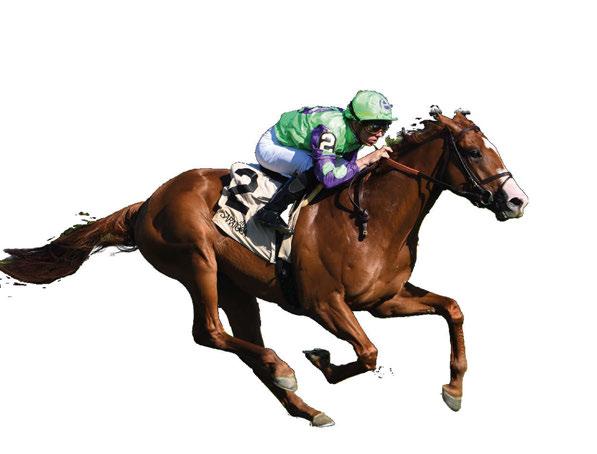

2020 Lope De Vega – Zindaya (More Than Ready)
Won Gr.1 Fourstardave H., Saratoga
Won Gr.3 Kelso Stakes, Saratoga
Won LR Opening Verse Stakes, Churchill Downs
Bred by Fifth Avenue Bloodstock
2021 Invincible Spirit – Wild Irish Rose (Galileo)
Purchased by Blandford Bloodstock for €280,000
Won LR Distaff Stakes, Sandown
2022 Mehmas – Fidaaha (New Approach)
Purchased by Joseph O'Brien for 155,000gns
Won Gr.1 National Stakes, The Curragh 113p after just 3 starts
Bred by Healthy Wood Co Ltd

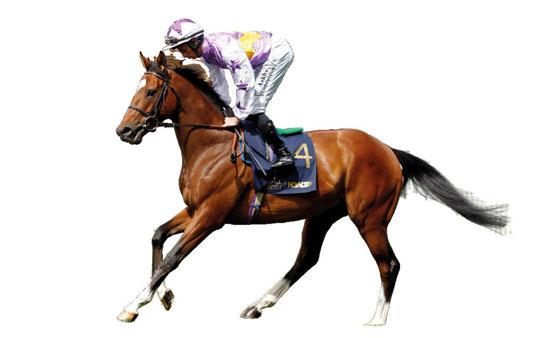

2021 Lope De Vega – Colonia (Champs Elysees)
Purchased by MC Calmont Bloodstock for €160,000
Won King George V Stakes, Royal Ascot

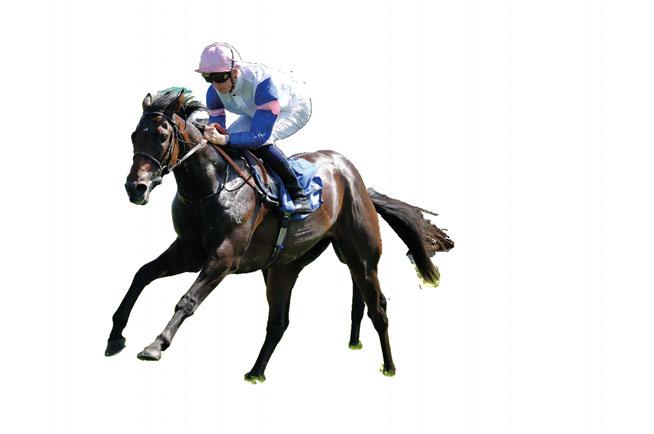
2021 Tamayuz – Blame The Ruler (Ruler Of The World)
Won Gr.3 Brownstown Stakes, Leopardstown
Bred by Mr Arturo Cousino
2022 Make Believe – Matauri Bay (Hurricane Run)
Purchased by AC Elliot for 500,000gns
Won Novice by 1½ lengths
2nd Gr.3 Solario Stakes, Sandown 102p after just 2 starts
Bred by Ballylinch Stud & Ecurie des Charmes
Nancy Sexton Bloodstock Editor
Are we looking at a challenging month or so to come as the rest of the British and Irish yearling sales season gets into gear? Or was the first round of British sales simply a case of offering too much of a good thing?
Within the space of eight days, 886 yearlings went through the ring at the Goffs Premier Sale in Doncaster and Tattersalls Somerville Sale in Newmarket. Such a volume of horses this early in the calendar is a relatively new development. For years, the Premier Sale – otherwise remembered as the St Leger Sale for those of a certain vintage – was the sole late summer domain of the sharp, early type. Then the Ascot Yearling Sale, at that stage still a relatively young auction, moved to Newmarket during Covid where it produced an uptick in returns strong enough to prompt its permanent transfer to Tattersalls’ headquarters. Rebranded as the Somerville Sale and with fast, quality horses such as Bradsell and Arabian Dusk flying its flag, it has been gathering momentum in the years since, with growing support from both vendors and buyers coming its way.
With a record 2023 renewal in the books, the Somerville Sale was extended this year to 465 yearlings over two days. That translates to a 48 per cent expansion in the catalogue and as it turned out, it was a step too far. Of the horses to go through the ring, 316 changed hands for an average of 28,252gns, down from 31,904gns the year before. The top of the market was thin, with three horses selling for 100,000gns or more compared to seven in 2023.
There had been mumblings of a shallow market at the previous week’s Premier Sale, where figures also took a downward turn. However, there was a vibrancy at the top end, with a £350,000 Tasleet half-brother to Gimcrack Stakes winner Cool Hoof Luke leading the way among 27 sixfigure lots.
For the record, between them the sales produced a turnover of approximately £24,400,000 for 697 yearlings sold, for an average of around £35,000. As ever, there
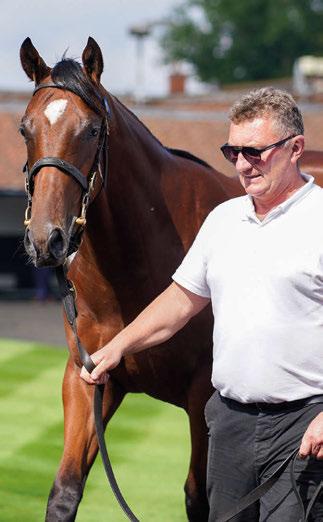
were plenty of celebratory stories, none more so than 15-year-old Ruairi Kilmartin, whose €7,000 pinhook, a Dark Angel filly, resold for 70,000gns to Paul Corrigan at the Somerville. But against that, barely half the pinhooks presented across both sales returned a profit (when rough expenses are taken into account). It’s also a safe bet that plenty of breeders were under pressure as well. Quite simply, supply outstripped demand.
It was the kind of opening to the British season that provided more questions than answers, especially as it covers the type of sales that traditionally operate in a manner conducive to high clearance rates. Trainers, for example, often stock up at these sales but on spec; for many, there’s only so many yearlings that can be collected without an owner. So in that respect, could it be that having two similar sales so close together in the calendar is actually detrimental?
The number of yearlings to pass through the sales has also steadily increased over the years. In 2014, the Goffs Premier, Tattersalls Ireland, Goffs Orby, Tattersalls October and

Tattersalls December Sales catalogued around 4,200 yearlings. This year, the same group (plus the Somerville) already comprise a total close to 4,700, with Tattersalls’ December Yearling Sale still to come.
Several sales, such as the Goffs Premier and Tattersalls October Books 1 and 2, have remained tight on numbers. In fact, this year’s Book 1 contains 84 fewer horses than 2023 at 448 lots and is the smallest catalogue since 2014. Book 3 is also 17 per cent down from last year, having been cut back from 649 lots to 571. Tattersalls Chairman Edmond Mahony alluded to the Somerville having played its role in the company being able to “reduce overall numbers in the two weeks of the forthcoming Tattersalls October Yearling Sale”. Easing such pressure is welcome but whether it should come at the expense of another sale will no doubt be up for discussion.
The true barometers of the market, the Tattersalls October and Goffs Orby Sales, were still to come at the time of writing. There will undoubtedly be an array of seven-figure lots and a competitive top end to the market. But if recent events are anything to go by, it is going to be selective as well. It has already been a muted start for plenty involved. Lets hope it’s not a sign of things to come.
Anyone who followed Tracy Vigors on social media couldn’t have failed to appreciate her passion and regard for horses.
Tracy, who died aged 49 last month, ran Hillwood Stud in Berkshire with her husband Charlie. Together, the pair developed it into a noted boarding and consigning operation, well respected for their success and professionalism at the sales and also well known as the summer base for a range of Nicky Henderson-trained stars, including Constitution Hill and Altior. Tracy’s ‘X’ account was invariably filled with shots of various inmates of the time, all of which demonstrated her love for the animal.
We send our condolences to Charlie and her sons Harry and Oliver.
Evans
Two outstanding homebred results gave small-scale breeders reason to believe when Britain’s yearling sales season kicked off in Doncaster.
Currently mulling results at all similar sales, breeders will be aware that at this auction the figures dropped back from last year. However, transactions which saw a Tasleet colt change hands for £350,000 and a Havana Grey filly make £240,000 provided a positive note for the most jaded producers of thoroughbreds.
The Tasleet colt, who was knocked down to bloodstock agent Amanda Skiffington and her long-standing friend and client Fiona Carmichael, reaped a windfall for Paul Giles. The owner of four Flat mares kept at his Moyfinn Stud in County Meath, Giles bred the yearling in partnership with his nephew Patrick.

They paid 15,000gns for his dam Dutch Monument at the Tattersalls December Sale in 2022 when she was carrying the future sale-topper, and while he emerged as a lovely foal who blossomed into an eye-catching yearling,

his valuation was propelled upwards by the victory a few days before this sale of his half-brother Cool Hoof Luke in York’s Group 2 Gimcrack Stakes.
The Havana Grey filly was always likely to be of interest to buyers given her sire’s
• What’s in a name? Plenty when it captures the imagination, slips off the tongue or sticks in the memory.
Harry’s Half Million seems to fall into those three categories. A £500,000 race at York’s excellent Ebor meeting and restricted to two-year-olds offered at Goffs UK’s Premier Yearling Sale, it has a catchy title which sticks in the memory and easily drops into conversation. For bloodstock agents such a valuable and clear target is an easy sell to clients, and since it commemorates the late Harry Beeby, the esteemed former DBS and Goffs UK Chairman, it has a touch of poignancy too. A number of buyers at this year’s Premier Sale referred to it as a goal for their purchases. Perhaps other bonuses connected with racing would gain more traction with the public if given catchier titles?
soaraway successes, but the model offered by Yorkshire breeders Jeremy and Muriel Knox was, according to buyer Mark McStay, “the outstanding physical at the sale” with “Queen Mary [Stakes] written all over her”. McStay revealed he was acting for Ira Gumberg’s US-based Skara Glen Stables and added that Joseph O’Brien would train the filly. She was consigned by Sarah Fanning, whose jockey husband Joe – reportedly a good man when it comes to mucking-out duties – was unable to attend due to riding commitments at Musselburgh.
The Knoxes, who keep five mares at their farm in Yorkshire, bred the filly out of the mare Twist Of Hay, a daughter of the ten-time winner Spinatrix. It was that racemare’s granddam, Miss Mercy, who had become the family’s cornerstone when bought by Jeremy’s parents, Ken and Pat, as a four-year-old back in 1996.

She cost only 3,000 guineas at Doncaster.
Another Doncaster purchase from some years back had even greater impact. Cockney Rebel was bought in 2005 for £30,000 by Bobby O’Ryan at the old St Leger Sale premises on his way to becoming a dual Guineas winner for owner Phil Cunningham.
Those Classic successes turned Cunningham’s interest in racing into a full-scale operation and at the latest Premier Sale he became leading buyer through ten purchases to the value of £1,010,000. Highflyer Bloodstock’s Anthony Bromley, working with Cunningham’s Newmarket-based trainer Richard Spencer, brought the hammer down for each lot, the pick on price being a £210,000 Mehmas colt consigned by Houghton Bloodstock for his breeders, Cheveley Park Stud.
The leading sire by aggregate was Tally-Ho Stud’s freshman Starman, who was represented by 27 offered lots of which 25 found a buyer headed by a colt bred at Waterford-based Monksland Stables by Tom Hassett. A bid of £220,000 secured this gem for Oliver St Lawrence and Fawzi Nass.
Pinhookers play a major role at this sale, both as vendors of horses they bought as foals and as buyers of stock they hope to re-offer as breezers next spring. The breeze-up brigade were out in force but for those who sourced foals last year with the aim of re-offering them
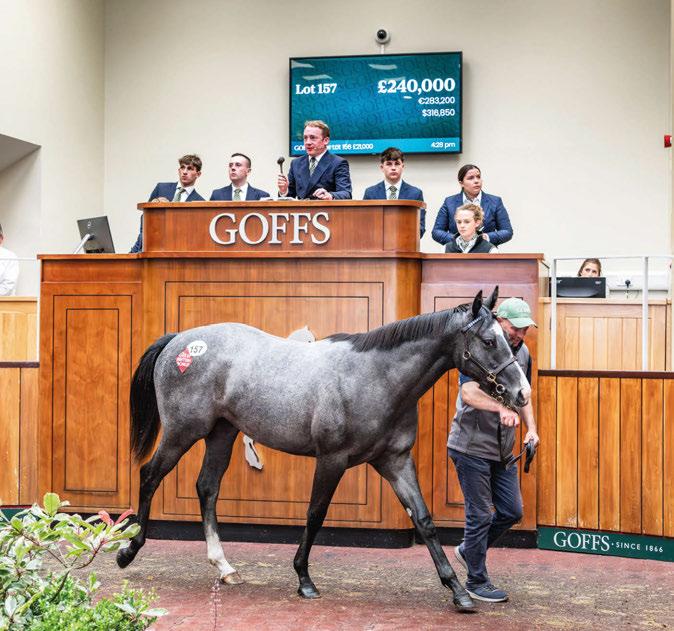
as yearlings the results were not encouraging. Of course, there were some cracking outcomes, notably a Sergei Prokofiev colt who had been bought for 16,000gns and resold in Doncaster by Whitsbury Manor Stud for £140,000, but for a good number of pinhooks there was little profit or no sale.
Tim Kent, Goffs UK’s Managing Director, referred to “selectivity in the market” and said some yearlings “who didn’t tick all the boxes had been sold for a price which would have been unimaginable in the past”. Conversely, he took pleasure in hearing a number of buyers had been active in the hope of landing Harry’s Half Million, the £500,000
sales race attached to the auction and run at York the previous week.
Despite a bigger catalogue involving 460 offered yearlings – 46 more than last year – turnover was down eight per cent at just under £15m. There were falls of 14 per cent in the average and median prices. Sales of 378 horses represented a clearance rate of 83 per cent.
Statistics
Sold: 381 (83% clearance)
Aggregate: £15,047,500 (-7%)
Average: £39,495 (-14%)
Median: £30,000 (-14%)
Sex/breeding
C Tasleet - Dutch Monument Moyfinn Stud
F Havana Grey - Twist Of Hay J & M Knox/Sarah Fanning Sales
C Starman - Merci Layan Monksland Stables
C Mehmas - Red Box Houghton Bloodstock
F Starman - Lady Aria
F Too Darn Hot – Shamandar
C Dark Angel - Silk Bow
C Blue Point – Baheeja
Tally-Ho Stud
Barton Stud
Yeomanstown Stud
Jamie Railton Sales
Amanda Skiffington
Avenue Bloodstock/Skara Glen Stables
Oliver St Lawrence Bloodstock
Highflyer/Phil Cunningham
Creighton Schwartz
SackvilleDonald/Manor House Stables
Highflyer/Phil Cunningham
Clive Cox Racing
With one eye on congestion at its busy October Sales of yearlings, Tattersalls expanded the fourth edition of this auction from one into two days.
It comprised 466 catalogued lots, an increase of 152, while Books 1 to 4 of the October Sale have all been reduced in size. Book 1 involves 448 lots, 84 down on last year and the lowest figure for some years. Book 2’s 773 catalogued lots is 47 down on last year and the fewest since 635 were catalogued in 2003 and it is a similar tale at Books 3 and 4. Going in the opposite direction is the Tattersalls Ireland September Yearling Sale which has catalogued 555 lots, 49 more than last year and 75 more than in 2022.
Whether loading the Somerville was the best outcome for its profile will be up for debate in the Tattersalls boardroom, but the wise counsel that sits around the table will be aware that the current market place is not buoyant, and so judging it on the latest set of results is but one consideration. The views of established buyers and sellers may be more relevant.
A fall in the clearance rate from nearly 90 per cent to one of 74 per cent was certainly not what the Chairman ordered, although Edmond Mahony was able to point out that while an average price of 28,252gns (down 11 per cent) and median of 22,000gns (a fall of 19 per cent) had “fallen short of last year’s across-theboard records”, they were still well ahead of the same markers in 2021 (21,345gns and 16,250gns respectively).
As Mahony put it, “prevailing economic realities” have softened the lower end, but with three horses making 100,000gns over two days, as compared to seven in one session last year, it could be said
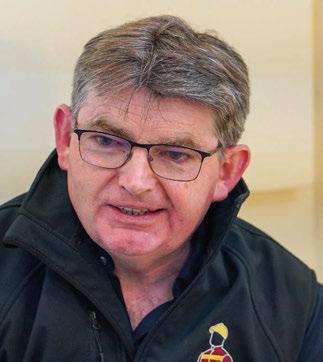

economic pressure is affecting figures from top to bottom.
Stallion popularity can often carry a sale and at the moment the horse that seems to be shouldering the bulk of the workload is Whitsbury Manor Stud’s Havana Grey. His progeny can seemingly do little wrong on the track or in the sales ring, and it was one of his daughters who left the Somerville with top-lot honours when changing hands for 140,000gns. Twelve months ago another Havana Grey headed the sale at 155,000gns, while the top filly at the latest Goffs Premier Sale was a £240,000 daughter of the stallion.
Busy bloodstock agent Alex Elliott secured the Somerville stand-out, heading interest from Rabbah Bloodstock’s Jono Mills and then revealing he was acting for Amo Racing. Bred and consigned by
Whitsbury Manor Stud – which traded 11 yearlings for £621,000 to take the leading consignor role – this April foal was produced by the unraced Step Sister and came from a family which has produced a wealth of winners for the Hampshire farm.
Elliott went on to become leading purchaser through buying six lots for £424,000 – they included a £100,000 Cotai Glory colt who was consigned by Houghton Bloodstock and bought in a partnership with Billy Jackson-Stops.
The same round six-figure sum enabled Richard Ryan of Teme Valley Racing to secure a filly by ace sprinter Starman, whose first yearlings have been abundant at early-season sales. The Tally-Ho Stud stallion was represented by 17 lots at this auction giving buyers plenty more opportunities to assess their
• When it comes to sales companies’ websites, it is hard to beat tattersalls.com, which provides handy data and information in a clear and user-friendly style. Its gallery of photographs provides a who’s who of mug shots and notable ring results which bloodstock media outlets find invaluable.
A new addition to the site are private sales which can be found among the pages entitled ‘Stats’ alongside the summary of each Tattersalls auction. It should be mentioned that Arqana has provided private sales details for some time, but the Tattersalls version scores for its easy-to-read style.
A look at the stats for the Somerville Sale of yearlings reveals 18 private sales took place generating turnover of £174,215. Put another way, private transactions at the latest edition accounted for 5.4 per cent of the 334 total sales and added nearly two per cent to turnover.
Compare that to just two private sales worth £25,000 at the 2023 edition. Of the 273 deals involving a sale 12 months ago, 0.7 per cent were made outside the ring contributing just under 0.3 per cent to turnover.
Private sales have shot up at this and other auctions, an indication of a weaker market in which buyers and vendors are not averse to achieving agreements outside the ring.
conformation and characteristics, and the word has invariably been positive. His stock, which in 2022 was conceived at an advertised fee of €17,500 (down to €10,000 this year), changed hands at the Somerville for an average price of £31,882. Ryan said his purchase would be
heading to Karl Burke, a trainer who is in form and very much in favour and who saddled the yearling’s half-brother Boogie Time to win four races. Another sibling, Seven Questions, was sent out by George Scott to win this year’s Group 3 Palace House Stakes.
Top lots
Sex/breeding
F Havana Grey - Step Sister Whitsbury Manor Stud
F Starman - Get Up And Dance Tally-Ho Stud
C Cotai Glory - Millvina Houghton Bloodstock
C Sergei Prokofiev - Sassy Dresser Chasemore Farm
C Sands Of Mali - Island Drive Barton Stud
A son of two Classic winners broke Germany’s public auction yearling price when selling for €850,000 at this one-day sale.
Consigned by Gregor and Julia Baum’s Gestut Brummerhof, the Camelot colt at the centre of this ground-breaking transaction was foaled by the Prix de Diane winner Diamanta and sold to Anthony Stroud on behalf of Sheikh Mohammed’s Godolphin operation.
In 2019, Godolphin created the auction’s previous record when paying €820,000 for Brummerhof’s Sea The Stars filly out of Anna Mia. This filly never raced and her valuation was matched one year later by another Sea The Stars filly out of the mare Sanwa, whose daughter became Listed winner Sea The Sky.
Godolphin eventually became the owner of that filly, too, for she returned to the ring at Arqana last December and was sold again for €1,250,000. Meanwhile, her full-sister, Sea The World, was responsible for a Kingman filly who was offered at this sale and duly made €200,000 to a bid from Eckhard Sauren. Sanwa has certainly been a champion for her owners at Gestut Gorlsdorf.
A clutch of Group 1 winners during the current season have kept Camelot’s name in a prominent position and while he was represented by just one very good horse at this sale, his progeny seem sure to be popular at forthcoming yearling sales. Bluestocking’s victory in the Group 1 Prix Vermeille in midSeptember came handily ahead of the October auctions which will define this year’s trade in adolescent racehorses.
Statistics
Sold: 316 (74% clearance)
Aggregate: 9,101,715gns (+5%)
Average: 28,252gns (-11%)
Median: 22,000gns (-19%)
Alex Elliott
Richard Ryan
100,000 Alex Elliott /J S Bloodstock
90,000 Alex Elliott
85,000 Clive Cox Racing

Alex Elliott had been among bidders who showed an interest in the top lot but while he failed to land that prize, he had already secured a €320,000 Soldier Hollow colt consigned by Gestut Park Wiedingen. A full-brother to the high-class filly Whispering Angel who raced in Germany, the colt will join Ralph Beckett said Elliott.
Park Wiedingen also traded a €200,000 Gleneagles colt who was sold to Liberty Racing, a syndication business co-founded by Lars-Wilhelm Baumgarten and Nadine Siepmann and which has landed the two most recent runnings of the German Derby. The latest was gained by another son of Gleneagles in the form of the Henk
Grewe-trained Palladium, an €80,000 Liberty Racing purchase at this sale two years ago.
Another notable transaction at the latest edition saw a filly, the catalogue’s only yearling by Lope De Vega – who was sitting astride the European leading sires’ table as the sale commenced – knocked down for €190,000 to his masters at Ballylinch Stud.
By contrast new German sire Japan was represented by 24 catalogued lots, of which 14 found buyers at an average of just over €51,000, slightly more than five times his latest covering fee at Gestut Etzean. The pick on price was a colt who found favour with Blandford
Bloodstock’s Stuart Boman, whose bid of €140,000 proved decisive. Boman said it would be next stop Newmarket for the colt, but he did not name a trainer.
A glance at the results indicate this auction avoided some of the declines which other sales have endured in
recent times. Turnover was down eight per cent at €7.4m, although eight fewer lots were offered. Falls of three per cent in the average and one per cent in the median would be welcome by most sales companies, while the clearance rate of 73 per cent was a fall of just one point.
C Camelot - Diamanta Brummerhof
C Soldier Hollow - Wamika Park Wiedingen
Sold: 154 (73% clearance)
Aggregate: €7,410,500 (-8%)
Average: €48,120 (-3%)
Median: €48,306 (-1%)
Godolphin
Alex Elliott
C Gleneagles - Darshana Park Wiedingen 200,000 Liberty Racing 2024
F Kingman - Sea The World Goerlsdorf
F Lope De Vega - Lips Eagle Etzean
Formerly the August Sale, this horses-intraining auction was moved back having last year clashed with BBAG’s yearling auction.
In a congested calendar it could not avoid another conflict for the latest edition, although the Osarus Yearling Sale in France does not have the same heft as Germany’s premier auction, and a clearance rate of 77 per cent, just three points down on last year, suggests trade was unaffected by business across the Channel.
A 25 per cent rise in the median figure to £10,000 was another positive element, although a markedly smaller catalogue with 166 offered lots, 129 fewer than last year, meant turnover tumbled to 1,887,200gns. The average price of 14,744gns represented a fall of 14 per cent.
HIT sales lust after quality acts, and on this occasion the cupboard was short of such talent. Six horses made a six-figure sum at the event in 2023, including 200,000gns two-year-old Maximum Dividend who was sold to Australia, but this time the highest price proved to be one of 80,000gns, the valuation attributed to three-year-old colt Debora’s
200,000 Eckhard Sauren
190,000 Ballylinch Stud
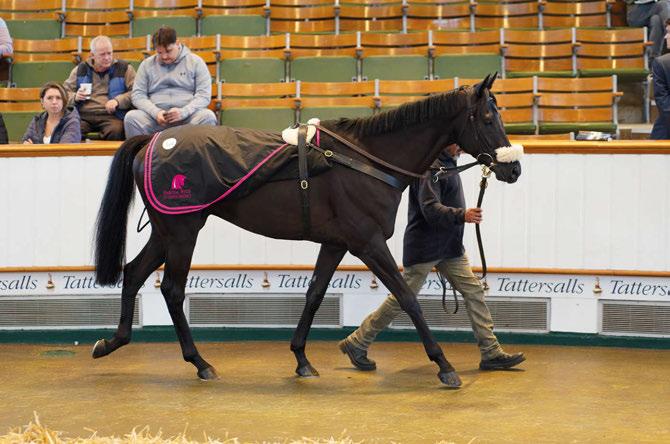
Dream. An 88-rated son of Sioux Nation, he was sent to the ring as the winner of three races for trainer Roger Varian and proved to be a good bit of business for Opulence Thoroughbreds, who bought him as a breezer for 40,000gns and in between enjoyed some good trips to the races.
Former jockey Alan O’Keeffe signed for the colt and said his partner Jennie Candlish will be the new trainer of Deborah’s Dream, who will race in the colours of Clare Dolan.
The last-named went on to buy a total
God Of Fire 4 g Muhaarar - Loreto
Tourist 3 g Zoustar - Ainippe Castlebridge Consignment
Rocking Tree 3 g Kodiac - Rocktique Castlebridge Consignment
Peter Harper/Sheikh Abdullah Alsabah Remoji 3 f Belardo - Mojika Baroda Stud
Nayef Ibn Ghayam/Adam Burton B’stock

of four lots for £167,000, although O’Keeffe said Grant Tuer and Ivan Furtado were also likely to receive horses picked up at the sale.
Well-known Racing TV presenter and
The hunger for well-bred stock that propelled the Fasig-Tipton Saratoga Sale to new heights in August rolled over into the first week of the Keeneland September Sale, North America’s bellwether yearling sale that spans over 4,424 lots in just under two weeks, writes Nancy Sexton
There are currently an array of wealthy players in North America with the capability and ambition to spend seven figures on young horses on a regular basis. That much was evident through the presence of no fewer than 36 million-dollar yearlings during Books 1 and 2, the most achieved since the heady days of 2005 when the market benefitted to a large degree from Maktoum involvement.
Godolphin continued to be active this time around, but in keeping with recent renewals to a lesser degree as the purchaser of three yearlings headed by a $950,000 son of Justify. Instead, it says plenty for the depth of the market that the 36 million-dollar youngsters fell the way of

pundit Chris Dixon brought the hammer down for four-year-old gelding God Of Fire, who, like the top lot, was consigned by David Cox’s Baroda Stud. Dixon’s 70,000gns bid was made on behalf of trainers Jonjo and AJ O’Neill, whose new purchase has enjoyed a profile-raising season with Daniel and Claire Kubler. A trio of wins and two placings over ten and 11 furlongs had seen the son of Muhaarar reach a rating of 87.
The 81-rated Tourist, a three-year-old Zoustar gelding with two sprinting wins to his name, left Hilal Kobeissi’s yard bound for Robert Cowell after being sold for 60,000gns, while the same sum enabled Peter Harper to sign for Rocking Tree, a three-time winner for George Boughey and Teme Valley Racing. Harper was acting for Sheikh Abdullah Alsabah who will take his acquistion to Saudi Arabia.
That Middle Eastern destination is
about to be stamped in the passport of Remoji, a Belardo filly who had won twice for Varian, and who was knocked down to Adam Burton for 52,000gns.
The young agent is not yet a familiar face, but at the age of 20 he is on the first rungs of the ladder having gained racing experience with trainer Adrian Keatley and additional work for Nawton Racing’s Roger Fell and Sean Murray. On this occasion he was acting for Nayef Ibn Ghayam, an early contact among several he has made in the Middle East. Burton’s is a name to note.
Statistics
Sold: 128 (77% clearance)
Aggregate: 1,887,200gns (-42%)
Average: 14,744gns (-14%)
Median: 10,000gns (+25%)
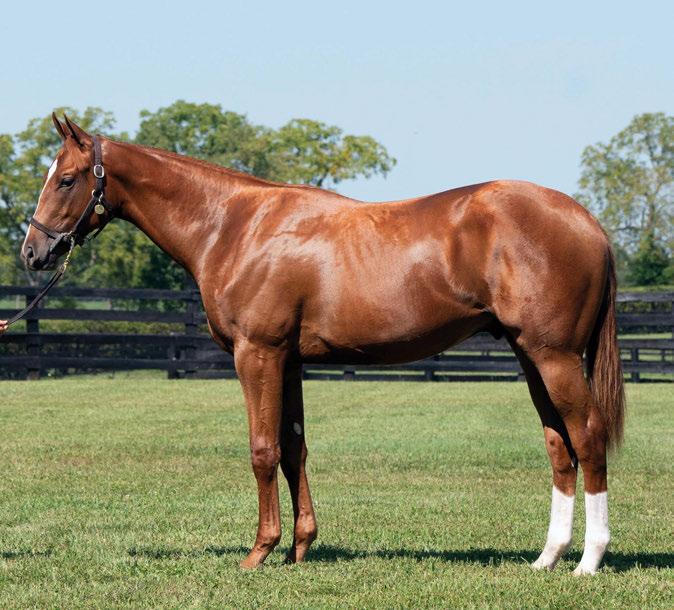
25 other different entities.
Leading the way was the SF Bloodstock, Starlight and Madaket combination, which signed for $11,330,000 worth of stock across the early books through Donato Lanni, topped by a pair of colts by Nyquist and Not This Time at $1,050,000 apiece. Not far behind was Mike Repole, the owner-breeder of Grade 1 Travers Stakes winner Fierceness who
walked away with $9,755,000 worth of stock through agent Jacob West.
However, it was Mandy Pope who stole the headlines with her purchase of a Curlin brother to four-time Grade 1 winner Clairiere for $5 million, the highest price paid for a yearling colt since Meydan City commanded $11.7m from John Ferguson in 2006. The colt was an obvious one for various big hitters to target, being a
good-looking son of a perennial leading sire and brother to an outstanding racemare. Not only that, he is out of a Grade 1 winner in Cavorting and raised by Barbara Banke’s highly respected Stonestreet operation, which sold him through Indian Creek.
Pope, whose family owns the retail giant Variety Wholesalers, trades as Whisper Hill Farm in the horse industry and has long made headlines as the purchaser of high-profile fillies and mares. But the September Sale witnessed a change in strategy that also saw her land the opening day’s topper, a $2.2m Gun Runner colt out of the Grade 1-placed Princess Carolina sold by Four Star Sales. “We are looking for some colts,” Pope told reporters. “We need colts to become stallions to get the numbers to work for us. They are what make it work.”
The sale-topper was one of five million-dollar yearlings for veteran sire Curlin. But he was one of several established names to take high order, the seven-figure transactions also provided a snapshot of a Kentucky landscape that is currently underpinned by a relentless demand for the progeny of the younger pair Gun Runner and Not This Time.
Gun Runner supplied seven milliondollar yearlings and wound up with a
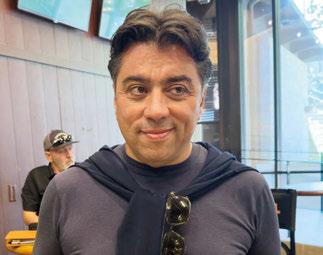

first-week average of $545,948, while Not This Time supplied three seven-figures lots and an average of $452,885 – fine rewards for those who supported him at $45,000 in 2022.
Serious regard was also shown for Hill ’n’ Dale Farm’s first-crop sire Charlatan, a dual Grade 1-winning son of Speightstown whose first offerings included a colt out of top racemare Guarana knocked down for $1.4m to MV Magnier and Peter Brant’s White Birch Farm.
Among the international buyers, Kia Joorabchian’s Amo Racing made its presence felt as the purchaser of $5,285,000 worth of yearlings during the first week. Still active as the sale entered its latter stages, his acquisitions included an American Pharoah sister to Grade 2 winner Forbidden Kingdom bought for $1,350,000 and a Curlin half-sister to Kentucky Derby hero Nyquist at $1.3m.
There was also healthy participation from Japan, notably trainer Mitsu
Nakauchida who came away with three million-dollar yearlings, while David Lanigan and Ted Durcan combined to purchase an Into Mischief filly out of Breeders’ Cup heroine Shared Account for $1.5m on behalf of Scott Heider.
Various European pinhookers also struck during the first week, among them Brendan Holland, Norman Williamson, Eddie O’Leary and Tom Whitehead. Of course it was at this sale last year that Williamson came away with Ruling Court, a $150,000 pinhook who went on to top the Arqana May Breeze-Up Sale at €2.3m. No doubt further gems will be unearthed again this year.
Statistics
Sold: 680 (75%)
Aggregate: $261,453,000
Average: $384,490 (+8%) Median: $300,000 (+5%)

Based in the Southwest, Ed has been racing horses of various ability all his life. His eldest son ran a lap of every English national hunt racecourse in five days aged eleven, raising over £15k for the IJF. eclarkson@propertyvision.com
We have Partners and Executives who have lived and worked among racing all their lives. With 40 years of experience, we offer a property service to private clients and family trusts looking to own property in the UK, whether for lifestyle or investment purposes. +44 (0)1635 813

Rob is well known in the racing community for buying and selling stud farms across the UK, Ireland, and France over the last 15 years. He lives near Marlborough, well known in Lambourn and often seen in Newmarket and at the Sales. rfanshawe@propertyvision.com

Lucinda, who represented Team GB in eventing operates in the Cotswolds and Oxfordshire and is involved in horses of all disciplines. Her family train in Gloucestershire and she is most often seen at Cheltenham. leaton@propertyvision.com

Based in the North of England, the highlight of Ed’s year was purchasing a beautiful Northumberland farm for a point-to-point family. Most often seen at Aintree and Bangor-on-Dee and covers all the Northern racing centres. elucas@propertyvision.com
More often than not, a stallion’s first crop of runners happen to be their best, and even with the help of many more and better-bred mares, many struggle to repeat what they have done with their first set of runners.
When analysing the top 20 stallions this century by percentage of stakes winners to runners, we find it is their combined first crops that have registered the most success as measured by the percentage of stakes winners among all their combined starters. The group’s 14 per cent stakes winners among their first crops was never reached again and neither was the 8.1 per cent Group winners. It therefore behoves us to make some allowance for this phenomenon, the clues to which probably can be found in the field of epigenetics, the study of how environmental factors affect gene expression.
Of course, not all sires fall into this pattern and one that is doing his utmost not to do so is Tally-Ho Stud’s Mehmas. After Irish Champions weekend, the profile of Mehmas’s current two-year-olds is beginning to look like they may equal or even surpass his record-setting first crop of youngsters.
Cast your mind back to the Covid year of 2020 when Mehmas sired his recordbreaking 56 juvenile winners, featuring 12 stakes horses, five stakes winners and two Group winners, including Middle Park Stakes winner Supremacy. Well, this year he has already found 49 winners – enough to have made him the top European sire by two-year-old scorers in some previous years, so with normal luck we can see him beating his previous best score. Moreover, with 13 stakes horses he has already surpassed his first-crop tally and has already equalled the number of Group winners – and indeed Group 1 winners – thanks to Scorthy Champ’s win in the National Stakes. He is also sire of the Flying Childers Stakes winner Aesterius.
Irish Champions weekend was also a boon for Wootton Bassett’s first Coolmoresired two-year-olds. He was represented by stakes winners number five, six, seven and eight in the space of just six days to lead all European sires with a tally of eight, two ahead of No Nay Never. Houquetot won the Prix La Rochette in the style of a potential future Group 1 winner and then Benevento took the Flying Scotsman Stakes at Doncaster before Wootton Bassetts secured the two juvenile races at Leopardstown on Irish Champions day via
Chantez in the Ingabelle Stakes and Green Impact in the Champions Juvenile Stakes. Eight juvenile stakes winners is the best Wootton Bassett has ever achieved from a single crop and his five Group winners already equals last year’s haul. Remarkably, 30 of Wootton Bassett’s career total of 51 stakes winners now have earned their stakes-winner designation as two-yearolds. That’s 59 per cent which is not that far adrift of the 67 per cent so far recorded by juvenile sire par excellence, No Nay Never.
Night Of Thunder is another trying to push past his excellent first-crop results, and although he might not get there, he’s making a very good impression with both his current three-year-olds and two-yearolds bred on the back of a surge in mare quality following the 22 stakes winners and 12 Group scorers that came from his first year at stud. As things stand, Night Of Thunder has nine stakes winners and five Group winners from his 2021 crop, so he has still a little way to go.
On a brighter note, he has sired his first male Group 1 winner in the robust shape of Economics, who battled back to win the Irish Champion Stakes from Auguste Rodin. His post-race Timeform mark was increased to 126p, the best of any colt by Night Of Thunder, and level with his star sprinting daughter Highfield Princess.
Speaking of fillies, the Kildangan Stud sire has unearthed another juvenile Group-winning daughter in the progressive shape of Desert Flower, who landed the May Hill Stakes at Doncaster to remain unbeaten after three races. Desert Flower (Timeform 102p), together with Coolmore’s dual Group 3 scorer Fairy Godmother (112p), should ensure that Night Of Thunder
is well represented in both the top juvenile filly sprint and staying categories this autumn.
Although the Darley stallion has now sired a Group 1 championship colt, he remains more likely to deliver high-class fillies, his daughters accounting for 34 stakes winners compared with 15 colts and geldings. The one killer stat that best sums up Night Of Thunder so far is the 16.4 per cent stakes winners he gets from his elite mares and the 22.2 per cent stakes winners from among his well-bred fillies.
Night Of Thunder isn’t the only son of Dubawi now beginning to impress with his current two-year-olds. Ballylinch Stud’s New Bay, the recipient of an excellent book of mares in 2021 after his own impressive start at stud, has sired his second Champagne Stakes winner in Bay City Roller, who looks like he could easily give a good account of himself at Group 1 level before the season is out.
At the time of writing – just after St Leger weekend – the title of Europe’s leading sire by earnings looks like it will very much depend on what happens at the Arc meeting and should Look De Vega reestablish his standing after his Prix Niel defeat, it is probably Lope De Vega’s race to lose.
In terms of stakes winners, there are several still in the hunt headed by Dubawi (18) and then Frankel, Kingman and Sea The Stars, all locked on 16 winners apiece.
On the two-year-old front, the leader by stakes winners is the aforementioned Wootton Bassett with only No Nay Never close enough to mount any sort of challenge.
Meanwhile, Mehmas has the individualwinner race in the bag as he is so far ahead of his field. He could also end up as the best by earnings, particularly if Scorthy Champ or Aesterius can add further to their earnings.
Closer to home, the Britain and Ireland title is proving a very tight affair, and it is not beyond the bounds of possibility that Galileo could steal a 13th title following the recent Group 1 successes of Content, Jan Brueghel and Kyprios.
The alternatives are a second title for Dubawi or the first for Dark Angel, particularly if Charyn were to annex the Queen Elizabeth II Stakes this month. A win for Dark Angel would certainly be a watershed moment. When was the last time a stallion with a stamina index less than a mile became champion sire?





























































































Up to £30,000 for a GBBPLUS Jumps mare
Up to £10,000 for a 50% GBB














Up to £40,000 for a GBBPLUS Flat filly
Up to £20,000 for a 100% GBB

















The sight of Galileo’s progeny battling out the finish to a Classic has become so commonplace as to be almost taken for granted. But it is very possible that we witnessed such an event for the final time at Doncaster last month when Jan Brueghel narrowly overcame Illinois in the St Leger, 18 years on from when Sixties Icon led home a Galileo first-crop sweep of the top three places in the same race.
Jan Brueghel and Illinois, two later maturing colts brought along steadily by Aidan O’Brien, are from Galileo’s penultimate crop of 93. His final crop is a much smaller affair at 14 foals and contains just the two runners so far, neither of whom have troubled the judge.
However, as Galileo’s influence recedes through his own progeny, Coolmore have seamlessly been able to come to rely upon Wootton Bassett as another means by which to utilise their assets effectively. Comparing the two, of course, is futile. For starters, it’s unlikely that we’ll see another sire of the dominance of Galileo in the short term (although plenty thought the same when Sadler’s Wells was retired from stud duty). The 16-year-old Wootton Bassett is also a very different animal altogether, one who earned recognition the hard way in France and is more of an influence for speed, in keeping with the Zafonic/Mr Prospector sire line.
Wootton Bassett’s output has been pretty relentless this summer, with a tally of eight two-year-old stakes winners helping him on his way towards justifiying the major investment made in him by Coolmore in the summer of 2020. That high-profile, multi-million euro deal sent him from Haras d’Etreham, which had developed the horse from a low base into a leading French sire, to Ireland for Coolmore, who wasted no time in making him one of Europe’s go-to stallions.
There tends to be no half-measures when Coolmore gets behind one of its high-profile, proven horses. And Wootton Bassett has been no different. A 2021 book of 229 mares, which resulted in 199 foals bred off a fee of €100,000, includes progeny out of top Coolmore-owned racemares and/or producers such as Alexandrova, Best In The World, Clemmie, Found, Immortal Verse, Life Happened,
Peeping Fawn and Was. An array of leading international breeders also leapt on the bandwagon, as they did again in 2022 when he covered another 249 mares despite a fee increase to €150,000.
Since then, the momentum has continued. Wootton Bassett had a champion in Almanzor, the product of a first crop that numbered just 23 foals, and a Breeders’ Cup heroine in Audarya, the 2020 Filly & Mare Turf heroine bred when he still stood for €6,000, to his credit at the time of his transfer to Coolmore, and he has kept pace since then as the quality of his books has increased.
By 2019, Etreham was charging €40,000 for the horse and out of that resulting crop emerged Group 1 winner Al Riffa, currently a live shot for this month’s

Bassett: already the sire of eight
Arc, as well as last year’s star three-yearold King Of Steel. Amo Racing’s strapping colt capped his year with a win in the Group 1 Champion Stakes at Ascot, by which time Wootton Bassett’s 2021 crop had earned regard as the source of Group 1 performers Bucanero Fuerte, River Tiber and Unquestionable among others.
None of the above were produced off fees higher than €40,000. So the question was naturally how would Wootton Bassett fare once he had access to top-quality mares? Such opportunities can be a double-edged sword as with it comes hype, something that can hinder as well as enhance. But working in Wootton Bassett’s favour is his breeding, especially being a member of the Mr Prospector sire line via Iffraaj, which makes him easy for anyone with a Northern Dancer-heavy mare to use. He also tends to throw
straightforward, sound horses, meaning that they are well liked by trainers.
That much was evident back in the summer of 2020, just before his sale was announced. In an interview during that time with this magazine, Etreham’s Nicolas de Chambure talked through the difficulties of launching the horse, commenting: “Wootton Bassett was hard work to start with. He was from the first crop of Iffraaj and when his first two-yearolds turned three, some of them didn’t train on as much as people thought they would. So when Wootton Bassett retired, Iffraaj was a bit cold – obviously that has all changed since then.
“It was a struggle to attract mares. But little by little, people got to see that he threw a good type and so his books in years three and four started to increase.
“The amazing thing about him is his consistency. They’re tough and they’re very good mentally. They’re very good doers and they enjoy their work. Not all of them are going to be champions but they are racehorses and they won’t disappoint their trainers.”
Those early days when Etreham struggled to gather mares are now a distant memory. With a summer of racing in the books for this year, Wootton Bassett is throwing down a real challenge against Mehmas to be the season’s leading European two-year-old sire by prize-money. However, he is very much out on his own in terms of number of stakes winners on eight, two more than No Nay Never and double that of the next pursuer Kingman. At the time of writing, he was also operating on a 42 per cent winners to runners strike-rate.
Of particular note is the fact that Wootton Bassett accounted for at least one juvenile stakes winner during five consecutive weekends from August to September. The run began at Deauville in mid-August when the Joseph O’Brientrained Apples And Bananas won the Listed Criterium du Fonds Europeen de l’Elevage. The following weekend, Henri Matisse – the colt out of Immortal Verse –captured the Group 2 Futurity Stakes at the Curragh, appropriately sponsored by Coolmore under the Wootton Bassett banner. That colt is one of a number of well-bred individuals by the stallion trained by Aidan O’Brien, who also sent

out Ides Of March (out of US Grade 1 winner Nickname) to win the Group 3 Round Tower Stakes at the Curragh the following Saturday.
From there, the bandwagon rolled on to Longchamp, where Houquetot (bred by Coolmore out of Alexandrova’s Group 3-winning daughter Happen but owned by Al Shaqab Racing, Jean-Claude Seroul and Gerard Augustin-Normand) won the Group 3 Prix la Rochette. He is trained by Christopher Head, who was effusive in his praise of the stallion afterwards – and understandably so given his yard also houses his Group 3-winning daughter Angeal. Yet the best of them all under his care could well be Maranoa Charlie, who backed up his debut win in an Arqana sales race at Deauville with a bloodless eight-length score on his next start in a Chantilly conditions race.
Yet Irish Champions weekend, staged at Leopardstown and the Curragh in mid-September, took matters to another level. At Leopardstown, Newtown Anner Stud’s homebred Chantez was the impressive winner of the Listed Ingabelle Stakes despite running green while Green Impact, an early homebred representative for owner Marc Chan, landed the Group 2 Champions Juvenile Stakes.
Their wins came hot on the heels of Benevento’s success in the Listed Flying Scotsman Stakes at Doncaster’s St Leger meeting and was followed a day later by Henri Matisse’s runner-up effort to Scorthy Champ in the Group 1 Vincent O’Brien National Stakes at the Curragh. That same day in France, Christopher Head sent out yet another high-profile one by the sire in Topgear, winner of the
Group 3 Prix du Pin at Longchamp. The five-year-old is from Wootton Bassett’s final €20,000 crop.
When Wootton Bassett joined Coolmore, the hope was that he would be effective with mares carrying Galileo and/ or Sadler’s Wells – of which Coolmore obviously own a large number. At that particular time, the results were trending back more towards inbreeding to Mr Prospector, including his great-grandsire Gone West; indeed, one of his early Pattern race winners, The Black Album, was out of a mare by Trade Fair and therefore quite closely inbred to Zafonic.
“His stud record paints a picture of a horse who crosses with a range of mares”
Fast forward to the current day and the Wootton Bassett - Galileo cross is becoming more prevalent, notably as the basis of Green Impact and Angeal as well as the Group 3-placed Swagman among his two-year-olds. Maranoa Charlie is also out of a Galileo mare.
Even so, his stud record continues to paint a picture of a horse who crosses effectively with a wide range of mares. His two-year-old crop, for instance, shows a weight towards mares carrying that
outstanding broodmare sire Pivotal, who is the damsire of Henri Matisse and the Group 2-placed Camille Pissaro. Pivotal’s son Excellent Art is also the damsire of Chantez. Of the others, Benevento is out of a mare by Whipper, the best sired by Kingmambo’s brother Miesque’s Son, Houquetot is out of a mare by War Front and Ides Of March is out of a mare by Scat Daddy.
Should this vein of success continue, then Wootton Bassett could well end the year as Europe’s leading two-year-old sire by prize-money. And were Al Riffa to put up a bold showing in the Arc, then the lucrative purse from that race would also propel him well into the top ten European sires overall.
Now Wootton Bassett is well established as one of Europe’s elite, the next hope is for his legacy to be assured. Several of his earlier sons are already at stud with the most important, Almanzor, now a permanent resident of New Zealand having supplied an underwhelming two European Pattern winners from his time at Etreham, where he received good support.
The Prix de l’Abbaye winner Wooded also stands at Haras de Bouquetot in Normandy and is the sire of a handful of winners to date.
Plenty of other sons are in the pipeline to head to stud of course, including Wooded’s brother Bucanero Fuerte, a number of those Ballydoyle colts and most likely Al Riffa and King Of Steel. They will each likely receive their fair share of opportunity and therefore have every chance to add yet another chapter to the Wootton Bassett rags-to-riches story.
Intestinal worms (helminths) are found in horses worldwide. There are a number of worms that affect horses (Fig 1) but the most common are the ascarids, small redworms and equine tapeworm. Ascarids mostly affect foals and weanlings. Heavy infections can result in poor growth, lethargy, colic, nasal discharge and coughing. Small redworms are extremely common and can infect animals of any age; however, significant burdens are more likely in horses under five years and can cause severe weight loss, diarrhoea or colic. Tapeworms can infect horses of all ages though younger animals may be more at risk of developing higher burdens, which can result in colic.
Due to the high proportion of young susceptible animals on stud farms, these represent higher-risk environments, exacerbated by the fact that for all these parasites, wormer resistance has been reported (Nielsen 2022; 2023).
Worm control used to be based on regular administration of wormers to all horses (interval worming). This
was unsustainable because regular treatments led to resistance, meaning that worms are not killed by drugs at the concentrations that were previously effective. As there are only four wormer types available with no new drugs in the pipeline, it is essential that wormers be used sparingly to safeguard their effectiveness for horses that require them; regular allgroup treatments should be avoided and other measures, such as excellent pasture management and diagnostic testing, implemented.
There have been many reports of wormer resistance in ascarid and small redworm populations, with ivermectin/ moxidectin resistance found in ascarids and almost universal resistance of small redworms to benzimidazoles, with increasing reports of resistance to pyrantel embonate and ivermectin and moxidectin. Recently, resistance of tapeworms to the two registered wormers for treatment of this parasite was reported. The likelihood that a level of drug resistance will be present on a stud farm means that effective
worm control can be very challenging. For this reason, an evidence-based approach should be taken. Start by working with a veterinarian to assess worm infection risk (Fig 2). This will inform management and testing approaches and provide information about parasites likely to be present, which horses to test and/or treat and which wormers to use. Strategic treatments may be required where no tests are available and infection/disease risk is judged to be high.
The most effective method to reduce pasture contamination is to remove dung regularly. Worm eggs take time to develop to infective stages (small redworm larvae on pasture, ascarid larvae within eggs, or tapeworm larvae within intermediate host oribatid mites), so it is recommended to fully remove dung at least twice a week. This will reduce pasture contamination, resulting in lower levels of worm infections in horses, with less horses requiring worming, which will reduce
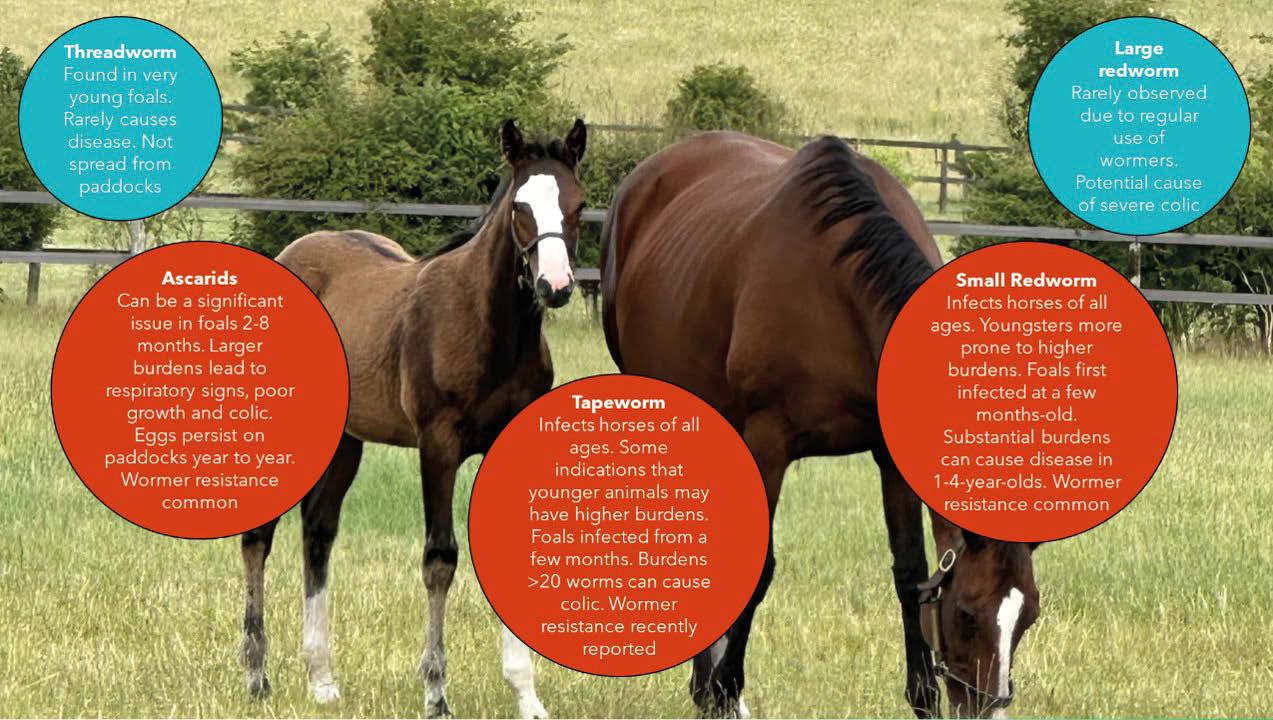
By Jacqui Matthews FRCVS
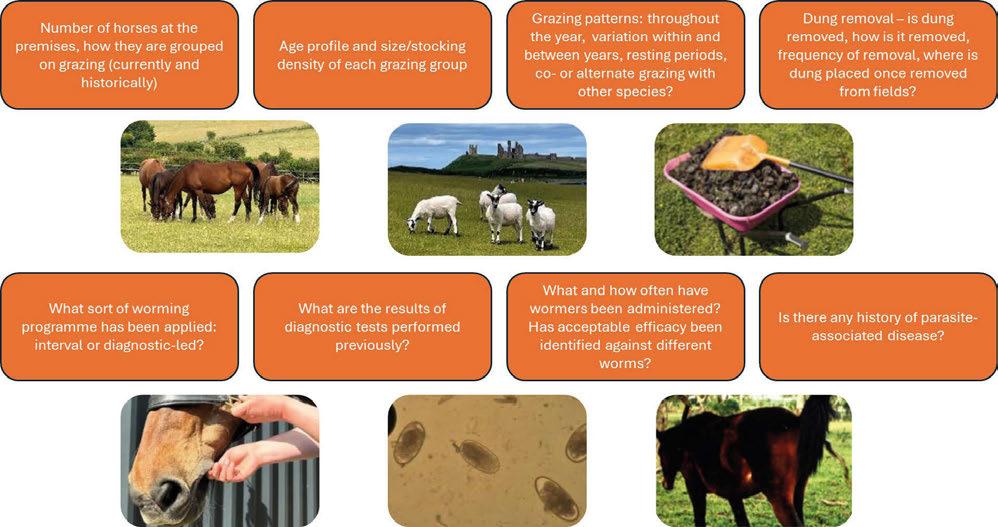
the risk of resistance. Always place dung well away from paddocks and water courses.
Harrowing or spreading fresh manure onto paddocks should be avoided; these practices merely spread worms around fields in weather conditions encountered in the UK. Paddocks should always be grazed at a low stocking density (especially when younger animals are present); a maximum of one or two horses per acre is recommended.
Where possible, paddocks should be rested from horses for six to 12 months; if for six months, rest from the start to the middle of the year. This will enable small redworms deposited in one year to die out by mid-summer of the following year. Both ascarid eggs and tapeworm larvae, within mites, can persist for periods beyond a year on contaminated fields. Sheep and cattle can be used in resting periods to manage paddocks. These species do not become infected with the common equine worms but be aware of the risk of liver fluke, which can be transmitted on fields grazed by ruminants.
Testing provides data to inform treatment decisions to reduce worm egg shedding onto grazing and/or to
lower the risk of clinical disease. Tests available in the EU include faecal egg count (FEC) tests and antibody-based tests. Faecal egg counts are the most widely used tests. These provide estimates of excretion of ascarid and small redworm eggs from individuals and can be used in grazing horses to reduce worming treatments. Most healthy adult horses (>70%) have low levels of egg shedding and do not require treatment (Matthews and Lester 2014). Using an egg count threshold for treatment of 200-500 eggs per gram (epg) of dung can result in >70% worming reductions in such groups.
Testing is recommended from six months. All horses should be assessed at eight to 12-week intervals in the grazing season. Groups that graze for sizeable periods year-round should be tested at the end of winter. Test from eight weeks after benzimidazole, pyrantel and ivermectin treatment, and from 12 weeks after moxidectin treatment. In older foals, FECs can be used to identify small redworm and ascarid eggs; this can help inform the wormer to select for treatment, keeping in mind that benzimidazole and pyrantel resistance is more common in small redworms and macrocyclic lactone resistance is more common in ascarids.
Where there has been long-term minimal use of ivermectin/moxidectin, assessment for large redworm larvae, cultured from dung samples, should be undertaken by a specialist laboratory.
FEC tests should be used to assess wormer effectiveness. To do this, a veterinarian will request two samples from each horse with a FEC of ≥200 eggs per gram, one before and one two weeks after worming, and will then assess the mean reduction in egg counts after treatment. Resistance is considered if the mean reduction in FEC after treatment is <90% (fenbendazole, pyrantel embonate) or <95% (ivermectin, moxidectin).
There is a poor correlation between FECs and worm burdens, so these tests do not provide information of levels of worms within individuals. For some parasites, antibody tests are available that provide information which can be used to direct worming treatments.
FEC tests have low sensitivity for detecting tapeworm infection due to inconsistent release of egg-containing segments from adult worms and the presence of immature/sterile worms. Instead, tapeworms can be diagnosed using blood or saliva tests that measure worm-specific antibody, levels of which show a strong positive relationship with

tapeworm burden. These tests have been shown to accurately identify all horses with a clinically-relevant burden of >20 tapeworms (Lightbody et al. 2016). All horses grazing the same paddock should be tested together to identify which require treatment. Foals can be tested from six months; saliva testing should only be performed after weaning as antibodies in a mare’s milk can be detected in the test.
Tapeworm testing can result in large reductions in worming; between 2015 and 2022, >164,000 UK horses were assessed using the saliva test, EquiSal (Austin Davis Biologics), with only one third tested recommended for treatment, saving nearly 112,000 wormer doses (Matthews et al. 2024).
Testing should be performed in spring and autumn. Spring testing identifies horses that will contaminate paddocks during the grazing season when intermediate host mite activity is higher (mites eat tapeworm eggs and infective larvae develop within the mites). Autumn testing will identify horses that have amassed higher burdens whilst grazing and are more at risk of colic.
Where horses test positive, infection risk should be reduced by improving pasture management. Horses can be tested from three months after worming to determine if they are
exposed to tapeworm-infected mites. It was previously recommended to administer all horses with a small redworm larvicidal treatment in autumn/winter. Instead of administering an all-group treatment, the Small Redworm Blood Test (Austin Davis Biologics), which measures wormspecific antibodies, can be used to identify horses that have negligible/
“Reduce infection risk by improving pasture management”
low burdens that do not require treatment. This test should be used for this purpose in low-infection risk horses, such as those stabled most/ all of the time, or adults on paddocks where dung is removed daily with FEC results consistently <200 epg. Applying the test in low-risk groups such as sport horses has been shown to reduce worming applications; >60% horses tested had low burdens below 1,000 small redworms (Matthews et al. 2024).
An example of an integrated programme is shown above (Fig 3). Worm control plans on stud farms should always be developed with a veterinarian who will assess infection risk for each group and devise a management, testing and worming strategy tailored for each age category. Guidelines to support evidencebased worm control have been published (Anthelmintic Toolkit, beva. org.uk). Availability of these up-todate recommendations should help stud owners/managers engage with their veterinarian in adopting more integrated and sustainable approaches to control that rely less on wormers, so that these medicines can be reserved for those animals that really need them.
Lester & Matthews 2014. Equine Vet J. 46;139-145.
Lightbody et al. 2024. Int. J. Parasitol. 54:23-32.
Lightbody et al. 2016. Vet Clin Pathol. 45:335-346.
Matthews et al. 2024. In Practice 46:3441.
Nielsen 2022. Int J Parasitol Drugs Drug Resist. 20;76-88.
Nielsen 2023. Int J Parasitol Drugs Drug Resist. 22:96-101.

Due to the threat of wormer resistance, best practice guidelines advise that DIAGNOSTIC-LED programmes should be used for worm control in horses1
Horses in specific age categories have different worm risk profiles. A risk assessment should be performed, and an age-appropriate worming programme applied

Strongyle worm egg shedding (FEC) patterns in adult horses mean that >70% of those tested do not need worming2


Only 1/3 of UK horses tested using the EquiSal saliva test have tapeworm infections that require treatment3


In low-risk horses tested with the small redworm blood test, >60% fell below the lowest worm burden threshold3

1 BEVA Anthelmintic Toolkit (beva.org.uk), 2 Relf et al. 2013. Parasitology 140:641-652, 3 Matthews et al. 2024. In Practice 46:34-41.
Exemplar diagnostic-led worm control programme
Foals & yearlings
Horses 2-4 years-old
Strategic treatments
✓ (Worm foals of <4 months every 2 months for ascarids. If >6 months-old, treat for small redworm larvae in late autumn/ winter)
✓ (Treat for small redworm larvae in late autumn/winter)
Horses >4 years-old (mares, stallions)

✓ (If assessed as high risk, treat for small redworm larvae in late autumn/winter)


Faecal egg count (FEC) test
✓ (Test from 4 months-old to identify type of worm eggs shed to inform appropriate wormer selection)
✓ (Test spring to late summer to assess egg shedding level)
✓ (Test spring to late summer to assess egg shedding level)

Tapeworm test (saliva or blood test)
✓ (Test in spring and autumn from 6 months-old if weaned)
✓ (Test in spring and autumn)
✓ (Test in spring and autumn)
Small Redworm Blood test (low risk only)
✘ NOT SUITABLE for informing worming treatments
✘ NOT SUITABLE for informing worming treatments
✓ (If assessed as low risk, test for small redworm in late autumn/winter)
Excellent paddock management (daily dung removal, low stocking density) should be implemented on all fields throughout the year, particularly where high-risk younger horses graze


Atypical myopathy is a severe and often fatal muscle condition in horses that results from the ingestion of some trees of the Acer species, particularly sycamore. Ingestion of any part of the plant (seeds, leaves or seedlings) can result in the accumulation of the toxin Hypoglycin A.
In the autumn and winter, atypical myopathy cases are often seen because of ingestion of the sycamore seeds that fall on the paddock. Cases therefore often occur following windy or stormy weather that causes a sudden influx of seeds onto the paddocks. In spring, cases are more commonly related to ingestion of germinating seedlings. Not all species of Acer tree contain the toxin Hypoglycin A and levels of the toxin can vary between samples from the same plant.
Atypical myopathy is characterised by acute degeneration of the postural, respiratory and cardiac muscles. The Hypoglycin A toxin is ingested and undergoes activation to form metabolites that affect fatty acid metabolism. The type 1 myofibrils, the main fibre type in cardiac, respiratory and postural muscles, are particularly dependent on fatty acid metabolism to function. This disruption in lipid metabolism results in a loss of energy supply to these muscles and they degenerate as a result.
Typical clinical signs include weakness, with horses found struggling to stand and walk. In more severe cases, horses are found recumbent and struggling to breathe. If standing, horses may present with a low head position and muscle tremors. Colic signs are often seen though the horse may retain a reasonable appetite. When urinating horses are noted to have dark brown or red coloured urine. This is because a breakdown product from the muscle damage (myoglobin) is passed in the urine resulting in a change in its colour. A high heart rate or irregular heart rhythm may be noted as the toxin can also damage the heart.
Usually, the disease course is rapidly progressive and therefore horses are often found recumbent or dead at pasture. If you notice any of the clinical signs
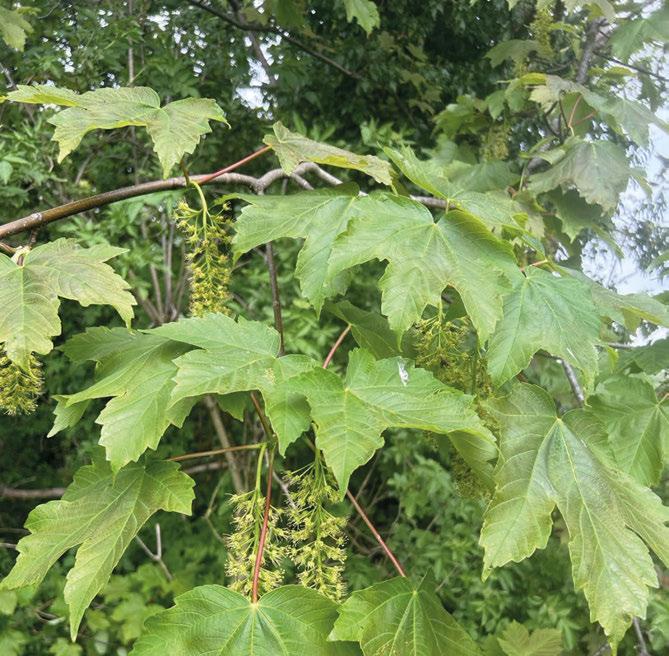
described, it is vital that you contact your veterinarian as soon as possible.
There are individual differences in susceptibility with some horses more affected than others. These differences are not fully understood but are likely related to underlying genetic susceptibility. Frequently when one horse presents with marked clinical signs, other horses in the same paddock that have been exposed may appear normal. Blood testing of these field companions, however, often reveals that they also have increased muscle enzymes, though perhaps not to the same extent.
Outbreak situations have been recorded where multiple horses have presented with severe clinical signs. No clear breed, sex or age predilection has been identified and currently it is believed all horses and ponies have the potential to become affected. There is some evidence to suggest that younger horses may be more susceptible.
A diagnosis of atypical myopathy is suspected when a horse presents acutely with the described clinical signs and has access to sycamore plants in their field. The clinical signs alone are often not specific enough to diagnose the condition and further testing is therefore necessary.
Vets will usually submit blood to check muscle enzyme concentrations to look for evidence of muscle damage. The muscle enzymes are normally markedly increased, with the exception being very early in the disease course when only a slight increase may be present. A urine sample can also be tested for the presence of the muscle breakdown product myoglobin.
Definitive diagnosis of atypical myopathy is via detection of the toxin or its metabolites in a blood or urine sample. Confirmation of the diagnosis can take a few days therefore treatment is usually started in advance of these results. Post mortem, atypical myopathy can cause
By Charlotte Easton-Jones MRCVS

characteristic histological changes in the postural and respiratory muscles.
• Any pastures that contain sycamore trees or onto which sycamore seeds or seedlings could fall.
• Stormy or windy weather with increased humidity appears to predispose to AM outbreaks. Windy weather increases the spread of the sycamore seeds long distances.
• Sparse and overgrazed pasture means that horses are more likely to ingest large quantities of seeds compared with pastures where grass is readily available.
• Young age (<3 years of age) and poor body condition are risk factors.
Atypical myopathy is a serious condition with a high mortality rate. Successful treatment is more likely with early diagnosis and treatment. Treatment is therefore often started in advance of confirmation of the diagnosis. Depending on the severity of a horse’s clinical signs, it is likely that your veterinarian will recommend referral to a specialist equine hospital for intensive care.
Whilst there is no specific anti-toxin for treatment of atypical myopathy, affected horses require supportive care and nursing. Supportive care often involves intravenous fluid therapy including the provision of intravenous nutrition such as glucose to compensate for the compromised lipid metabolism. Horses are kept somewhere quiet and comfortable and provided with pain relief, muscle relaxants and anti-oxidants.
In cases where the horse’s bladder is distended, or it is recumbent then the bladder is catheterised to relieve discomfort. If respiration is compromised and the horse is hypoxic (low blood
oxygen concentration) then oxygen therapy via the nose may also be provided.
Survival rates are around 30-40%. If a horse survives the first few days of treatment, then there is increased likelihood that they will go onto recover but it can take a few months to recover fully. There is an increased chance of survival in horses that have not become recumbent and have a normal temperature. The development of a fast respiratory rate and evidence of respiratory compromise is associated with a poor prognosis.
Atypical myopathy is a very painful condition and therefore in more severely affected cases it is important that the prognosis for survival is continually reassessed and humane euthanasia provided in cases where the prognosis is hopeless. In cases where atypical myopathy is suspected, other horses grazing the same pasture should be immediately removed and have blood submitted for muscle enzyme analysis.
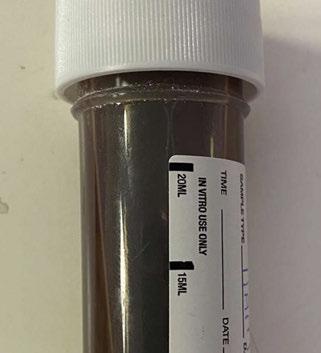
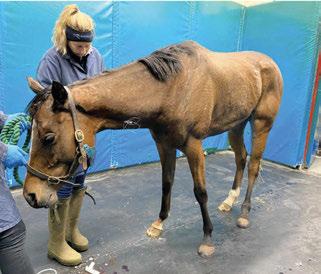
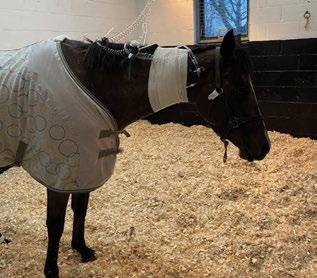
Several steps can be taken to help reduce the risk of atypical myopathy:
• Sycamore seeds or leaves should be cleared from paddocks where horses are grazing.
• Providing supplementary forage such as hay in the winter when the grass is reduced can help reduce the ingestion of the plants.
• Be vigilant after windy weather or storms as the seeds can travel long distances into paddocks.
• Reduce stocking density to ensure adequate grazing for each horse.
• Use temporary fencing to avoid grazing of contaminated pasture areas.
• Testing sycamore plants for the Hypoglycin A toxins. The Royal Veterinary College Comparative Neuromuscular Disease Laboratory offers plant sample testing for atypical myopathy. Seeds, leaves or seedlings can be tested for concentrations of the Hypoglyin A toxin. This can be used to find out if the plant samples on your property contain the toxin with results typically taking around two or three weeks. Owners can submit samples directly to the lab and details of submission forms and samples are detailed on their website.
• Avoid harrowing or manure spreading during the high-risk periods.
• Contaminated pastures should not be used to produce dried forage as the sycamore material can remain in the hay or silage.
Further research into the disease is necessary to provide a better understand of the risk factors and epidemiology. Atypical myopathy should be considered in horses at pasture that present with the described clinical signs and have access to sycamore. Early diagnosis and treatment are important for increasing the survival rate of affected horses.
Words: Laura Steley
Horses have evolved as grazing animals and they possess a unique digestive system that is anatomically tailored to this lifestyle. Their gastrointestinal system works in a way that enables them to take flight to escape predators, whilst obtaining all the required nutrients for health and longevity via grazing for the vast majority of the day.
In the modern era, the demands placed upon performance horses, in our instance racehorses and breeding stock, is vastly increased. This usually means nutrient requirements cannot be met purely via grazing/forage intake. Coupled with the increased nutrient need is the decrease or removal of turnout, or grazing time, a horse receives on a daily basis. These two pivotal points create quite the conundrum – and that’s before you consider the individualities of each horse as well as differing life stages and careers. Louise Jones, nutritionist at Connolly’s RED MILLS,


For full race conditions please visit BHA Racing Admin website. Any further information please contact George Hill, Clerk of the Course, on 07581 119984 on ghill@newburyracecourse.co.uk
Owners Liaison – Claire Ricketts, ownerstrainers@newburyracecourse.co.uk 07768 982626 Friday 29th November
Coral Long Distance Hurdle Day

The Coral John Francome Novices’ Steeple Chase (Class 1) (Grade 2) (Formerly known as the Berkshire) 2m 3f 187y (4yo+)

The Coral Long Distance Hurdle Race (Class 1) (Grade 2) 3m 52y (4yo+)

The Coral Racing Club Handicap Steeple Chase (Class 2) 2m 3f 187y (4yo+) (0-15)
The “Bet-In-Race” With Coral Fillies’ Juvenile Hurdle Race (Class 1) (Listed Race) 2m 69y (3yo)

The Coral Gold Cup Handicap Steeple Chase (Class 1) (Premier Handicap) 3m 1f 214y (4yo+)

The “Bet-In-Race” With Coral Intermediate Handicap Hurdle Race (Class 1) (Registered as The Gerry Feilden) (Premier Handicap) 2m 69y (4yo+)

The Coral Get Closer To The Action Handicap Steeple Chase (Class 2) (For The Jim Joel Memorial Trophy) 2m 92y (4yo+) (0-145)
The Sir Peter O’Sullevan Memorial Handicap Steeple Chase (Class 2) 2m 6f 93y (4yo+) (0-145)
£75,000
£25k increase
£60,000
£45,000
£5k increase
£45,000


Challow Hurdle Day
The Coral Challow Novices’ Hurdle Race (Class 1) (Grade 1) 2m 4f 118y (4yo+)
The Coral Mandarin Handicap Steeple Chase (Class 2) 3m 1f 214y (4yo+) (0-145)
£250,000
£55,000
£45,000 £5k increase £10k increase £5k increase
£50,000
£100,000
£15k increase £45k increase
£75,000


ENTRIES CLOSE TUES 22 OCT £250K
International entries close day before
says: “Everyone is talking about gut health and for good reason; it plays a key role in your horse’s overall health and wellbeing.”
The equine GI tract can be divided into two sections: the foregut (mouth, oesophagus, stomach and small intestine) and hindgut (caecum and large intestine/colon). In an adult thoroughbred, the GI tract is approximately 30 metres in length and equates to around 12% of the total bodyweight (60kg in a 500kg horse). Horses are hindgut fermenters, meaning the majority of digestion takes place in the caecum and colon – the colon representing 60% of the total GI tract. Once digesta has been swallowed and moved through the oesophagus, it will enter the stomach via the cardiac sphincter, a muscular one-way valve, which is responsible for the horse’s inability to regurgitate. Relative to body size, the horse’s stomach is small, approximately the size of a rugby ball.
It is important to mention that the horse’s stomach produces gastric acid round the clock, whether the individual is eating or not. This is exactly why providing ad-lib forage is the number one remedy for preventing equine squamous gastric disease (ESGD). The small intestine is around 20-25m long and digesta moves through the intestine at approximately 30cm per minute. It is essential that all simple carbohydrates are broken down and absorbed in the small intestine as the hindgut is incapable of their absorption and lactic acid production will occur.
It takes approximately three hours from ingestion to entering the hindgut where it will undergo fermentation and absorption via the billions of bacteria and micro-organisms (microbiota) that make up the gut microbiome. Via fermentation, volatile fatty acids (VFAs), which are the horse’s primary energy source, are produced and absorbed, alongside water, electrolytes and amino acids. VFAs account for as much as 70% of the horse’s daily calories and therefore energy.
With knowledge of how the equine GI tract functions and why, it is easy to understand why digestive disturbances in our thoroughbreds are commonplace. They can vary from acute to chronic and include diarrhoea, colic, EGUS and changes within the microbiome. Rupert Dyhouse, Veterinary International Technical Manager at Protexin Equine, says: “Gut problems can affect everything from temperament to performance, as well as long-term health and wellbeing.” All issues can be interconnected depending on the horse’s individual situation and can cause serious implications if not diagnosed and treated accordingly. Jones continues: “Many factors can stress our horses’ digestive systems including travel, foaling, intense exercise, dietary/management changes such as weaning or high concentrate diets. A horse’s ability to resist health issues associated with these stressors is directly related to the function of the hind gut.”
The equine hind gut (caecum and colon) contains a diverse community of micro-organisms consisting of fungi, parasites, protozoa, archaea, viruses and bacteria, collectively known as microbiota. The microbiome refers to the microbiota, including their genetic material and the surrounding environmental conditions. Put simply, the microbiome is like the digestive tract’s ecosystem, providing essential nutritional facilitators (VFA break down), immune response enablers and also micro-organisms that possess the potential to cause disease.
Any change to the microbiome can alter the fermentation process, which can have far-reaching effects for the horse, dependent upon the severity and duration of the disturbance. Most gastric disturbances or diseases arise from a decline in diversity or loss of stability within the microbiome. A balanced microbiome will help sustain normal inflammation response ››
Equilume Performance Lighting harnesses the benefits of natural sunlight to improve fertility, performance and well-being for your breeding stock including maiden mares, barren mares, pregnant mares and stallions and acilitate flexible management and reduce costs associated with stabling horses for early season reproductive success.
Earlier Ovulations
Increased Fertility
Regulated Estrous Cycles
Optimized Gestation Lengths*
Improved Post-Foaling Fertility*
Improved Maturation In Utero
Stronger Foals At Birth
Optimized milk production & quality colostrum
*Studies show mares foal on time, with earlier foal heat ovulations.
Increased Total Sperm Numbers*
Increased Fertility & Libido
Higher Testosterone Levels*
*Published scientific results using Equilume Stable Lights
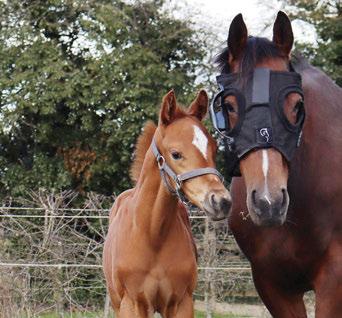
›› via the central nervous system function. Increased or consistent inflammatory response caused by abnormal microbiota can alter a horse’s behaviour. The microbiome can be influenced by an individual’s genetics, geographical location/environment, medication and supplement use as well as quick feed changes, to name the main ones.
Due to advancing technology and associated decreasing costs in recent years, research into the equine microbiome has become increasingly popular. Researchers are now able to run DNA sequencing on the microscopic communities inside the digestive tract with ease. This said, microbiome research is still very much in the early stages. Most of the current research has focused on looking at and comparing gut microbiomes within different horses in different situations, e.g. stabled versus living out, hard feed diets versus forage-only diets etc. At this point, we know that individual horses can vary greatly by microbiome make-up and any changes to the microbiome composition can have a detrimental effect on health.
Jones says: “Something for consideration is that the stress of weaning is likely to cause changes to the gut microbiome in both the mare and the foal.” The ability to distinguish between different gut bacteria, and whether it is good or bad, isn’t straightforward and gut health seems to be based more on the balanced composition of the microbiome rather than the presence or absence of individual communities.
The microbiome-gut-brain axis has also been in the spotlight in recent years. This is a two-directional pathway between the gut and the brain. The gut connects to the central nervous system via the vagus nerve. The microbiome-gut-brain axis regulates many bodily functions, such as intestinal motility, intestinal secretions, visceral pain, hunger, mood, and emotion. It has also been observed that early-life changes in the microbiota can alter a foal’s development and lead to neurological disorders in adulthood. Research is ongoing, but there is evidence to suggest that an imbalance in the gut microbiome can affect a horse’s behaviour in ways such as lethargy, fatigue, anxiety, being ‘highly strung’ or showing uncharacteristically hormonal behaviour, all of which can be detrimental to wellbeing and performance.
The horse’s immune system is closely linked to around 80% of the gastrointestinal system. The reason for this is to allow careful monitoring of potential harmful microbes that may have been ingested. However, if the microbiome becomes unbalanced, monitoring will
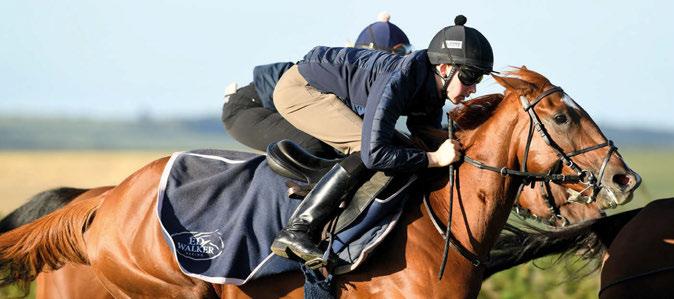
Thoroughbreds in training will require an increased number of calories in their diet
become difficult, therefore leaving the horses immunity response compromised. Jones continues: “We know that the microbiome is very sensitive and can easily become upset by factors such as stress, medication, changes in diet or routine. Therefore, supporting a healthy microbiome should be something every horse owner needs to consider.”
As touched on previously, a healthy gut microbiome is also incredibly important in the early stages of a thoroughbred’s life. Via colostrum, an abundance of antibodies will quickly be absorbed via the small intestine within 24 hours of life. The foal’s hindgut will not be able to digest and sufficiently utilise large amounts of forage until around the four to six-month mark, following a rapid period of maturation from two months of age.
Almost from birth, a foal will gradually ingest and ‘build’ a microbiome full of good bacteria from their mother’s milk, udder, the outside environment, and older horses’ droppings. If the foal is, for any reason, under increased stress/on limited turnout, this can be detrimental to the gut microbiome and extra support may be required. At the time of weaning, careful consideration should be taken as to minimise stress and provide good quality ad-lib forage with minimal concentrate feed.
A recently published cohort study looked at a group of horses, over three years, which had been bred for racing. Researchers were looking to ascertain if there is a connection between interactions of early-life gut bacterial community structure, health events in later life, and athletic performance on the racetrack. During their first year of life, nine faecal samples were collected at different life stages and analysed. The researchers also meticulously recorded health events and racing performance data up to three years of age. The results turned out to
be significant – the data showed that the risk of developing specific diseases, as well as predicting athletic performance, was directly linked to the bacteria present within the foal’s gut in the first few months of life.
An increased risk of respiratory disease in later life was associated with a higher relative abundance of faecal Pseudomonadaceae. Athletic performance up to three years old was positively associated with increased faecal bacterial diversity at one month old and with the abundance of specific bacterial families. Within the horses tested, nine foals required antimicrobial treatment during the first 28 days of life. Researchers found that these foals showed significantly lower faecal bacterial diversity at 28 days old, with a significantly increased risk of respiratory disease in later life and a significant reduction in average prizemoney (used as a marker for gauging athletic performance).
To summarise, the study provides evidence of the detrimental impact of antimicrobial treatment in the first month of life on health and performance outcomes in later life. Of course, antimicrobial treatment is sometimes unavoidable, however, can we look for ways to better support recovery possibly? The proven relationship between early-life gut bacterial communities and subsequent athletic performance is new ground within the equine research field. As with many scientific findings, answers often conjure up even more questions.
Thoroughbreds in training will require an increased number of calories in their diet in order to sustain the heavy workload asked of them. The majority of energy for muscular work will be obtained via absorption of glucose, VFAs, fats and amino acids. Excess glucose will be stored in the horse’s liver, tissues and muscles as glycogen; this is particularly important for
horses in training that will call on these glycogen stores regularly and need them to be restored efficiently. However, no matter how well thought out the feed programme is, if a horse gut isn’t healthy, absorption will be inhibited, and essential nutrients will be lost.
Jones advises: “For horses suffering from or at risk of gastrointestinal upsets, the guidelines state that the diet should contain less than 2g of starch per kg bodyweight per day and 1g per kg bodyweight per meal. So, for an average 500kg horse, you would be looking to keep the starch content per meal at less than 500g, and the total daily starch intake per day should be less than 1,000g. This is perfectly achievable by feeding several smaller meals of a feed specifically formulated to be low in starch.”
The aim of probiotics is to flood the gut with beneficial species, which can then stop the harmful species from becoming established; this is often called a ‘competitive exclusion’. Unfortunately, there aren’t any authorised bacterial species for use in feeds or supplements for horses. Therefore, when we are talking about feeding horses probiotics, it actually refers to live yeast cultures. Probiotics can be used in the short or long term, dependent upon the issue. For example, use after administration of antibiotics should require a short dose, while a compromised microbiome due to old age would be a cause for long term. One thing to note is that live yeast requires oxygen to live and therefore will die off quickly in the horse’s anaerobic GI tract – regular dosage will be required for effectiveness, regardless of short- or long-term use.
Prebiotics, unlike probiotics, are nondigestible and they help to stimulate
growth and effectiveness of the bacteria present within the gut. Usually, prebiotics are types of oligosaccharides (sugars) – the most commonly fed to horses are fructo-oligosaccharides (FOS) and mannan-oligosaccharides (MOS). MOS work by providing a binding site for the ‘bad’ bacteria. This means that rather than binding to the gut wall and multiplying, by binding to MOS, the ‘bad’ bacteria can be inhibited.
“Digestive enhancers have become increasingly popular”
However, not all harmful bacteria will bind to MOS, such as Clostridia (known cause of diarrhoea). FOS are needed by particular types of ‘good’ bacteria in order to multiply. Better still, harmful bacteria such as E. coli and Clostridia cannot utilise FOS. Due to this, the use of FOS for horses suffering from diarrhoea has been proven to be effective, which means that beneficial species are able to competitively exclude them.
The use of digestive enhancers has become increasingly popular over the years. Dyhouse agrees, saying: “Horse owners are increasingly keen to look at natural ways to support and enhance their horse’s health. Research shows that pre and probiotics are a fantastic way of maintaining a healthy gut.”
Many digestive enhancers are used

as a routine course of action on both studs and racing yards. Horses that are generally poor doers, or those that tend to live life on the stressful side, will often benefit from the use of pre/probiotics. Dyhouse comments: “Protexin Equine Acid Ease is a useful addition to horses in this category. It is a unique, concentrated, palatable combination of antacids, fibre, kaolin, amino acids and probiotics and prebiotics. Presented as a palatable powder, Acid Ease is suitable to calm excess acid in all horses and weaned foals.”
A change of routine, travelling, weaning, racing, sales, medicinal treatment and horses suffering poor health or disease would all benefit from the use of digestive enhancers. Also, horses that haven’t been receiving an adequate amount of forage will benefit from the use of digestive enhancers. This is due to the bacteria in the gut essentially being starved, hindering multiplication and potentially allowing more sinister species to flourish.
Diarrhoea or scouring can be very serious for foals – if not spotted and dealt with quickly they can become dehydrated and die within hours. There has been some evidence to suggest that prebiotics, specifically FOS, haven’t been particularly useful in helping to resolve this issue. Dependent upon the causation, lactase and/or isotonic electrolytes are also invaluable tools. This can be used purely as an addition to seeking and following veterinary advice.
In conclusion, mimicking a horse’s natural way of feeding to the best of our ability will reap the biggest health rewards. As research continues to grow, our ability to manage and feed our horses in a way which will support and enhance the thoroughbred’s GI tract health becomes much more obtainable.

Awards season is fast approaching and we are delighted to announce the National Hunt nominees for the 42nd ROA Horseracing Awards.
Taking place at the Royal Lancaster Hotel in London on Thursday, December 5, the evening is a star-studded occasion where we will crown the leading lights of the year’s racing.
Tickets are available at £300pp (inc VAT) and £3,000 for a table of ten (inc VAT), which includes a three-course meal, wine with the meal, champagne reception and an after party including dancing to the Chance Band and our ever-popular darts tournament. Tickets and more information are available at www.roa.co.uk/awards24
Each category is voted for by ROA and Racegoers Club members and voting begins in early November, when members are sent their voting link by email.
Flat nominees will be finalised once we reach the end of the season, but in the meantime, we can confirm the nominees for the National Hunt Awards.
NOVICE HURDLER
BALLYBURN - Ronnie Bartlett/David Manasseh
DANCING CITY - Mrs J Donnelly
MYSTICAL POWER - JP McManus/ Mrs J Magnier/Mrs S Ricci
SIR GINO - Mrs J Donnelly
SLADE STEEL - Robcour
HURDLER
CONSTITUTION HILL - Michael Buckley
IMPAIRE ET PASSE - Simon Munir/Isaac
Souede
LOSSIEMOUTH - Mrs S Ricci
STATE MAN - Mrs J Donnelly
TEAHUPOO - Robcour
NOVICE CHASER
FACT TO FILE - JP McManus
FOUND A FIFTY - Bective Stud
GAELIC WARRIOR - Mrs S Ricci
GREY DAWNING - Robert Kirkland
IL EST FRANÇAIS - Richard KelvinHughes/Haras de Saint-Voir
IL ETAIT TEMPS - Hollywood Syndicate and Barnane Stud
CHASER
FASTORSLOW - Sean and Bernadine Mulryan
GALOPIN DES CHAMPS - Mrs Audrey Turley
GERRI COLOMBE - Robcour
HEWICK - TJ McDonald
JONBON - JP McManus
PROTEKTORAT - John and Lisa Hales/Sir Alex Ferguson/Ged Mason
NH MARE
BRIGHTERDAYSAHEAD - Gigginstown
House Stud
FANTASTIC LADY - Evan-Robert Hanbury
GOLDEN ACE - Ian Gosden
KARGESE - Kenneth Alexander
LIMERICK LACE - JP McManus
LOSSIEMOUTH - Mrs S Ricci
MY SILVER LINING - Celia Djivanovic
NH SPECIAL ACHIEVEMENT
ABSURDE - HOS Syndicate
Winner of the Ebor and the County Hurdle within seven months whilst also finishing a respectable seventh in the Melbourne Cup in between.
CLASSIC CONCORD - David Brace
Started the season winning off a mark of 99 at Worcester in August and landed his fifth win of the season at Chepstow in February off a mark of 118.
I AM MAXIMUS - JP McManus
Won the Grand National off 11st 6lb in a season which also saw him land the Bobbyjo Chase and Drinmore Chase at Fairyhouse.
THE IMPOSTER - Mark Phillips/Late J H Gumbley
Won a handicap hurdle at Chepstow in December off a mark of more than three stone higher than when his winning roll started in November 2022.
SPECIAL RATE - S Quinn
Seven wins in eight starts in novice hurdles and chases, over an eight-month period, saw his rating increase from 108 to 133.
WHITE RHINO - The Rhino Syndicate 49lb rise in the official ratings culminating in a success in a handicap hurdle at Cheltenham in December.
Nominations are open for the 2025 Thoroughbred Industry Employee Awards, sponsored by Godolphin. The awards are a great opportunity to shine a spotlight on the people who provide exceptional care for our horses, and there is £128,500 in prize-money available across six categories.
Nominees could include the person who looks after your horse, ensures the smooth running of the yard or stud, or simply makes a big difference to the lives of our horses, people and communities.
You can nominate anyone who is employed in a BHA licensed racing yard or British stud including administration
staff. For the Community Award, you can nominate anyone involved with British racing.
If you know someone who deserves recognition, please don’t hesitate to nominate them today by visiting www.thoroughbredawards.co.uk.
Nominations are open until Tuesday, November 5. Just go to the website and complete the online form or submit a quick video nomination.
Final judging and the Awards ceremony will be held at York racecourse on Monday, February 24, 2025, where the overall Employee of the Year will also be crowned.
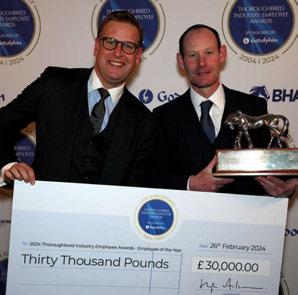
David Porter-Mackrell: 2024 winner
With the economic situation prompting some owners to reevaluate their current racing spend, an area where some owners may make savings is by looking at the racing account they have in place.
Money can be saved by switching to a BHA Account, but others may like the convenience of a Weatherbys Racing Bank Account, which mirrors a normal high street bank account and is accessible with online banking. We outline how both accounts work here:
Charges
Owners with a BHA Account won’t incur any account charges or gain any interest on funds in their account.
How does it work?
The BHA Account is an invoicing account which settles by direct debit or direct dredit on the 15th day of the month for the previous month’s accrued racing transactions.
It is restricted solely to your racing transactions (entry fees, jockey fees,
prize-money, gallop fees and ROA membership) and does not extend to your payment of training fees.
If the account is not settled on a subsequent direct debit request, further charges will be incurred and all ownership activities related to the account suspended, with the result that any horse you have an interest in will not be allowed to run.
If you are in credit at the end of the month, the full credit balance will be sent to your nominated account at the beginning of the following month.
Charges
Owners with a Weatherbys Racing Bank Account have the flexibility of a normal bank account. However, charges will be incurred for monthly account management fees and racing transaction fees may apply.
How does it work?
A Weatherbys Racing Bank Account combines racing transactions (entry
The series final worth £40,000 is on March 28
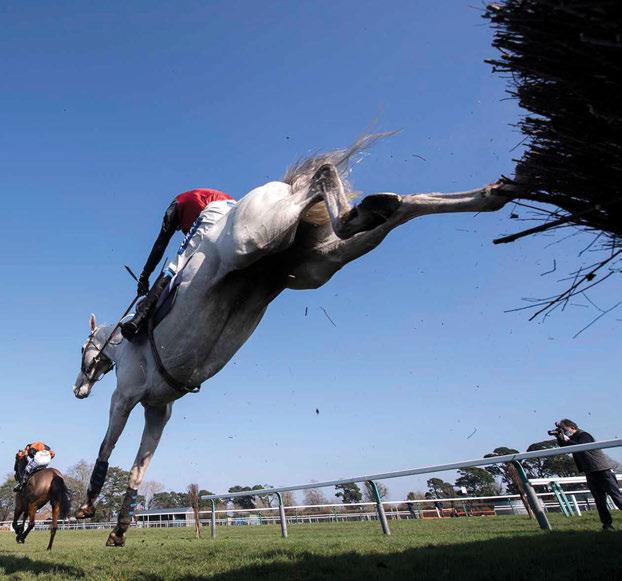
fees, jockey fees, prize- money, ROA membership etc) with the flexibility and features of a normal bank account.
You will receive a bank statement at the beginning of each month, or you can access your statements online at any time. If your account is overdrawn this can be settled via cheque, bank transfer or card payment. You can also view your accounts via the Weatherbys mobile banking app.
If you have received prize-money you will be able to access it as soon as it has cleared on your account, typically 15 days after the race date. You can use funds on your account to automatically pay your training fees, gallop fees, and any other racing or bloodstock bills.
Weatherbys Bank may pay interest on credit balances at the prevailing rates. The current rates table can be viewed on www.weatherbysbank.com or is available from Weatherbys Bank on request. Banking charges will also apply, for further details dependent on the type of account required please visit www.weatherbys.bank.
Fontwell Park racecourse has announced the launch of a new middledistance chase series over 2m1f165y –2m5f135y for the 2024/25 jumps season.
The 11-race series will include ten qualifiers run as Class 4 and 5 races. The opening contest took place on Tuesday, September 24 and will culminate with a £40,000 open handicap final on Friday, March 28, 2025. All horses that finish in the first eight in any qualifying race will be eligible to enter the final.
Confirmed dates of series races*
• 23/10/2024 - 2m 1f 165y handicap chase
• 08/11/2024 - 2m 3f 104y handicap chase
• 17/11/2024 - 2m 5f 135y handicap chase
• 10/12/2024 - 2m 3f 104y handicap chase
• 10/12/2024- 2m 5f 135y handicap chase
• 26/12/2024 - 2m 1f 165y handicap chase
*remaining races to be confirmed following Programme Book 1 fixtures release
There are worse ways to break your maiden than in a £308,000-to-thewinner contest against 19 rivals, so hats off to ROA member Jason Goddard, who saw his two-year-old Diligently scoop the enormous prize in the Harry’s Half Million By Goffs Premier Yearling Stakes at York’s Ebor meeting in August.
Goddard, who was watching from home that day, would happily have settled for second place – still worth a not inconsiderable £123,000 – with a furlong to run, yet Rossa Ryan conjured a late charge from Diligently, overhauling hot favourite Arizona Blaze near the finish to send his owner into raptures.
“My son Ben was in the kitchen and came running in when he heard me shouting at the TV,” Goddard says. “To be honest, at one stage I was looking at third or fourth, but he picked up inside the last 100 yards and went past the Amo horse.
“It was a surprising result, but I think everything else was slowing down.
“Rossa rode a fantastic race. He’s a top-five jockey – a future champion. I’m sure one of the big boys well snap him up, he just rides so well.”
Diligently is certainly well-named and could describe both his trainer Clive Cox’s method to sourcing horses and Goddard’s approach to ownership.
As his recent victory suggests, Diligently, a son of Cox’s former Group 1 star Harry Angel, was purchased at the Goffs Premier Yearling Sale for £100,000 last year.
At the same auction in 2019, Cox selected a son of Mehmas for Goddard –he was Supremacy, a £65,000 purchase, who progressed into one of the top twoyear-olds the following year, taking the Group 2 Richmond Stakes and Group 1 Middle Park Stakes.
Goddard says: “Diligently’s York victory was more of a surprise. Clive always said he was a nice horse; we thought he might end up at Royal Ascot. He’s just taken time to develop – I think he’ll prove to be better than he’s shown so far.
“With Supremacy, we knew from an early stage that he was very good – it was just about him showing it on the racecourse. We had an amazing ride with that horse.”
Goddard hails from the Newbury area
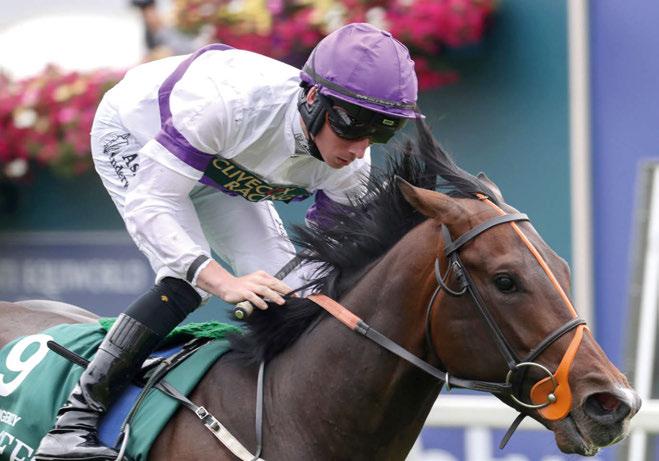
and having enjoyed horseracing growing up – “I remember my father following Dancing Brave and Nashwan in the 80s” – was always likely to plump for a Lambourn trainer if the opportunity to get involved as an owner presented itself.
That opportunity came when he sold his IT business, Hammer plc, in 2016. His father-in-law, Ken Lock, a small ownerbreeder, already had horses in training with Cox and made the necessary introductions. Dark Shadow was the first winner for the new partnership – and the rest is history.
“I’ve never had horses with another trainer,” Goddard explains. “Clive does all his own work and picks all his own horses. He always looks for the best quality and to get some value.
“He’s incredibly hard working. I’ve been with him at the sales – he always gets there the day before to look at every horse, certainly every colt. If there’s something nice that looks good, he gets them vetted and if it has the right pedigree, he advises where we go with our valuation. Some become too expensive, others you can buy.”
He continues: “Clive is a stallion maker. If you look at the ranks of stallions, he trained Kodi Bear, Profitable, Harry Angel, Supremacy, Nando Parrado and Golden

Horde, and before that Lethal Force.
“He buys horses at a very reasonable price and trains them to do very well – and a lot of them end up at stud. I’d be surprised if there’s another trainer who has made as many stallions at this moment in time.”
The aforementioned Supremacy, now ensconced at Yeomanstown Stud in County Kildare, where he stands alongside Dark Angel, Invincible Army and Shaman, had his first yearlings sell this autumn – one of whom will race for his original owner, having been selected by Cox for £100,000 at Goffs in August.
So far, Goddard, who is often accompanied to the races by wife Joanne and daughter Georgia, has resisted the urge to invest in broodmares to send across the Irish Sea despite holding nominations to his former sprinter.
He says: “Breeding racehorses is like having a kid – you don’t know what you’re going to get! You could produce an Oxford scholar – or not.
“I understand from Yeomanstown that Supremacy is good at his job. He covered around 150 mares in his first year, he seems popular, and his stock have been well received. As a commercial stallion it looks positive – but he’ll have to start doing it on the track.”
Despite his recent valuable triumph with Diligently, Goddard is concerned about levels of prize-money further down the chain, feeling that the jam is being spread too thinly.
He says: “The truth is that with a three-year-old, if you’re running around for three, four, five or six thousand pounds, it becomes less cost effective to keep them in training when your training fees per horse can be £25,000 a year.
“If you win £5,000 at Windsor on a Monday night, once you’ve taken the jockey’s fee, trainer’s amount and travelling costs into consideration, you’re ending up with £2,500 or £3,000, which might cover a month’s training costs.
“Most horses only ever win once or twice. If you’re paying out £25,000 in training fees and only getting back £7,000 or £8,000 in prize-money, the equation just doesn’t work out.
“The sport has a problem with too much racing. There’s a lot that’s just there for the bookmakers – and I’m not even sure they are that interested or making much money from it.
“In Ireland they don’t have much racing Monday to Wednesday and their prize-money is higher. Though that may change with the proposed ban on gambling advertising.”
Other issues of concern include the inability to bet on his horses due to bookmaker-imposed restrictions – “I’ve had accounts closed and requests to see my finances, which I won’t do” – while the two-year-old banding system, dictated by auction and median auction value, also gets the thumbs down.
Yet there is much to look forward to for Goddard – who stresses the importance of finding good homes for his racehorses when their racing careers come to an end – not least Diligently, who looks to be improving with experience, while
“I want to be competitive in big handicaps and Group races”
following the progeny of his Group 1 hero Supremacy is sure to be an exciting journey.
“I have four in training, plus the yearling, and Clive might recommend something at Book 1 or 2 [of the Tattersalls October Yearling Sale], in which case I would have a look,” he says.
“I got into ownership because I want to be competitive. That’s the whole point; I want to run in big handicaps and Group races, which is why the Supremacy moments were so magical.
“After Supremacy won his maiden at Windsor, Clive rang me to say he wanted to enter him for the Richmond Stakes. So, we went to Glorious Goodwood during Covid – there weren’t many people around – and he won the Richmond by four lengths.
“To then win the Middle Park was an amazing experience. It is one of the top two-year-old races in Europe – it’s the pinnacle.”
Goddard adds: “When we go to the smaller racetracks, it’s all about building up to try and have a go at some of the big boys and be up there with them. And that’s very exciting. But it’s always great to get a win from any horse.”

What is/was the day job?
I am a retired trainer, but I have a number of horses in partnerships and have recently joined a few new syndicates, so I am still in the heart of racing. I also volunteer for the Youth Criminal Justice System by sitting on their referral panels, and also the Restorative Justice Programme. I sometimes think the mediation skills used here could be well used in racing politics!
Why did you get involved in racing politics?
I have been involved in racing all my life, from a point-to-point jockey in the late 1980s when my peers included Amanda Perrett and Alex Embiricos, to being a trainer, and now owner and breeder. Because of this, I am uniquely positioned to understand racing from many viewpoints and appreciate some of the issues the sport has.
How has your background/upbringing influenced your views?
I started eventing when I was young, and always went with my parents to Cheltenham for the annual pilgrimage to the Festival. When I realised I wasn’t going to make it eventing, I switched to point-to-pointing – the speed attracted me! – so saw racing from its most grassroots level. It was competitive and a lot of fun, and really gave me a good grounding for how racing worked.
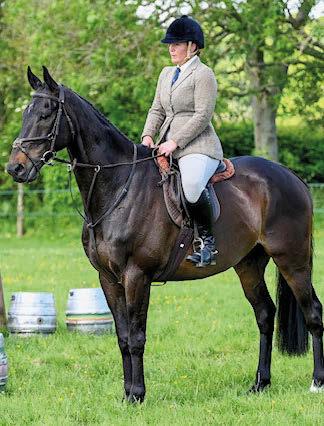
How long have you owned horses and how much success have you had?
I first got my training licence in 2000 and trained and owned winners under both codes, my first being little Windy Valley, a lovely grey who I managed to get from Philip Hobbs. He won at Fontwell for me and was placed eight times.
I trained and owned horses with a wide variety of talent, but the best horse I’ve owned was Third Wind, who won the Pertemps Final at Cheltenham in 2022 and the Rendlesham Hurdle the year before. He suffered a tendon injury after his Cheltenham win, and although we got him back on the track, he didn’t show his spark again, so we retired him earlier this year. He is now thoroughly enjoying his new life, hunting, hacking on the beach, and has recently won rosettes in his showing class.
My Mum owned the 2019 Irish 2,000 Guineas winner Phoenix Of Spain, who is doing very well at the Irish National Stud at the moment with the likes of Haatem. We have a few homebreds by him, which is very exciting.
What are your current ownership interests?
After owning horses on my own and with my family – my sister, sister-in-law and I run the One More Moment Of Madness Partnership – I have recently branched into owning horses in a few syndicates and leasing some horses in partnerships. It is very interesting to be an owner at this level and observing how the ownership experience works from a syndicate perspective.
What do you love/hate about racing?
I love the build-up to a race; hearing the horse has worked well, visiting the trainer to work out a plan, choosing a race, and meeting the staff at the yard and seeing them also get excited for the horse in the future.
There is nothing I really hate about racing, although I do share all owners’ usual frustrations on prize-money and our ever-increasing hidden costs. I hope that some of these will be tackled with the introduction of the Racing Digital product, which would also help to streamline the admin involved in ownership and make the process easier.

The delay in the launch of Racing Digital is therefore another frustration for me.
What are the immediate priorities for the sport?
Owners contribute so much to the sport, it is vital we make it as enjoyable for them as we can, whatever level they are at. Getting a horse to the races is difficult enough, so everyone should have the best day they can when they get there. It doesn’t matter whether they are participating as a sole owner or as a syndicate. If we keep chipping away, I hope the overall experience will improve.
What is your favourite day’s racing?
My favourite day to go racing is the first day of the Cheltenham Festival – so much buzz and anticipation. But my best day on the racecourse must be Third Wind’s Pertemps triumph – owning and breeding a winner at the Festival was something very special.
Which horse would you most like to have owned?
I was lucky enough to be at Cheltenham for Dawn Run’s Champion Hurdle and Gold Cup wins. She was an amazing mare, and I cried when she won the Gold Cup – coming from that position at the last, it seemed so unlikely.
What is your racing ambition?
I’d love to match Mum having a Group 1 winner so any Grade 1 over jumps would be wonderful. Hopefully in future I will have the ammunition to fulfil this dream!
Being a racing fan can be challenging. The racing media are very good at keeping us informed on the politics of the sport, but at times the features and articles can be depressing. Whether it’s the lack of leadership, affordability checks, the new fixture list or how unsuccessful Premierisation has been, the stories can make you wonder what it was that attracted you to racing in the first place.
The latest argument between two of the major stakeholders concerns the ongoing disagreement over media rights payments. On one side we have Flutter (parent company of three of the major bookmakers) and on the other side we have ARC (owners of 16 UK racecourses). As a racing fan and punter, do I really need to see this dispute played out in front of me? It feels as though both parties are keen to argue their case in public, hoping that racing fans may take their side.
Which side am I on? The bookmakers close winning accounts and restrict many punters to inexplicably reduced stakes. The racecourses overcharge racegoers for food and drink, then close the bars soon after the last race and give the impression that they’d rather some meetings were run behind closed doors.
By the time you read this, the two parties may have reached a compromise – let’s hope so. But the longer it remains unresolved with both sided entrenched, the more likely it will be that irreparable damage will be done to their business relationship.
Just when you start to ask what it was that made you fall in love with the Sport of Kings, along comes the Ebor Festival at York. The racing was highly competitive, with no sign of the small fields that regularly affect our sport. The Juddmonte International had its biggest field ever and City Of Troy produced his best-ever performance, leading all the way and breaking the course record in the process. He took 0.97 of a second off Sea The Stars’ previous record (although some reports state that he raced over 32 yards shorter). In doing so, he became the first horse since Sea The Stars to win the Derby, Eclipse and International in the same year.
Ryan Moore was quite rightly lauded for his excellent ride on City Of Troy,

but maybe even more so for his ride on Content in the Yorkshire Oaks. The filly refused to settle and won despite doing so much wrong. Ryan’s decision to stick to the far side in the straight was probably the deciding factor. It was this ride that made other jockeys realise that the far side was the place to be, even on the round course. It was like watching a York meeting from the 1980s, with jockeyship of the utmost importance as they tried to pick their way through with the field congregating as close to the far rail as possible.
I attended Nunthorpe day as an owner, courtesy of RaceShare and York racecourse. York prides itself on providing the best raceday facilities for its customers and once again they delivered. There were over a hundred owners of Treasure Time there on the Friday. York provided RaceShare with a private facility in the Sharpo bar.
Treasure Time ran in the last race on the card, a highly competitive threeyear-old handicap over a mile with Tom Marquand on board. As the field entered the straight, Tom had to ease off the
rail and find a gap as the leaders were not coming back. Treasure Time began to close and challenged on the outside approaching the final furlong.
With half a furlong to go he was still over a length down, but you could see he was going to get there. That last 100 yards was pure joy, as he thundered past the two leaders and won a shade cosily. I was the owner of a winner at the Ebor Festival!
If York delivered on the private facility, they excelled in managing the RaceShare owners’ experience. All the owners were welcomed into the winner’s enclosure for the trophy presentation and then invited into the Celebration Room for a glass of champagne and a chance to re-watch Treasure Time’s victory.
Going racing at York is always a pleasure but experiencing it as an owner takes that feeling to another level. York demonstrate how racecourses can provide syndicates with an excellent raceday experience. At a time when there is so much negativity surrounding racing, days like these remind us of all that is good with our sport.
This month’s money-can’t-buy experience available exclusively to ROA members in partnership with Racing Welfare is a memorable twoday celebrity golf experience at His Grace, the Duke of Bedford’s Woburn Golf Club on May 5-6, 2025.
Day one will see the winning bidder treated to a four-ball with a Woburn professional golfer on one of Woburn’s three outstanding courses, before heading to The Woburn, a charming 18th century hotel and restaurant at the heart of the picturesque village, for dinner and accommodation for three.
Day two of the package takes the winning bidder back to the golf
club for a four-ball on the Marquess Course with Sir AP McCoy. Breakfast before the round is included, as well as hospitality throughout the day as part of Racing Welfare’s annual Woburn Golf Day – an extremely popular event that attracts personalities from across the horseracing industry year-on-year. The prize is completed by a second night in The Woburn for dinner and accommodation.
All funds raised through the auction help Racing Welfare to provide their vital support services to the 20,000 people working in the racing industry and their dependents. The auction closes on Friday, October 25 at 5pm.
Jess Harper is 20 years old and works at a racing yard in Malton, North Yorkshire. Despite her young age, Jess has already encountered many challenges in her life which have severely affected her both physically and financially.
Leaving school at the age of 16 to attend the National Horseracing College in Doncaster before venturing into employment at a number of racing yards, Jess broke her back in January 2023 when she fell from a horse while at work and in August 2023, having made a recovery, Jess was then involved in a car crash, resulting in her breaking her back for a second time.
Due to the severity of her injuries, Jess had to undergo surgery to have metal rods and screws inserted into her back following the first break and after the second break, had to be in a neck and back brace. In both instances Jess required intense physiotherapy to aid her rehabilitation.
Jess said: “After I broke my back, I couldn’t work due to my injuries and the sick pay wasn’t enough. I was struggling so I had to sell my car to get some money. It was really tough and I just didn’t know what to do.”
Determined to remain as independent
as possible, Jess sought help from Racing Welfare to help her cope with the challenges she was facing and help get her back on track both physically and financially.
Racing Welfare’s charity housing provider, Racing Homes, was able to offer Jess safe and affordable accommodation at Old Maltongate, which is the organisation’s property in Malton specifically for young people who are starting out in racing. It offers six single-person occupancy bedrooms with shared kitchen, bathroom and lounge facilities.
Jess said: “I would have been homeless and would have ended up going back home if it hadn’t been for Racing Welfare giving me somewhere affordable and safe to live. They’ve been brilliant and given me support to help me pay my rent, and they made a referral to the local food bank for me as well as giving me food vouchers.
“Being in the accommodation here has really helped as Harriet and Sarah [welfare officers] are in the same building. They’re so friendly and kind –they’re like therapists and have made a big difference to me.
“ I’m also lucky that the people I live with are so helpful – we’re all good


your bid at www.bidtogive.co.uk.

friends. Being in a neck and back brace meant I couldn’t cook for myself, so they’d cook my meals and also help me with personal tasks like getting washed –it really meant a lot.”
Racing Welfare also arranged physiotherapy rehabilitation for Jess, paying for her to attend sessions at Jack Berry House in Malton, which is a specialist rehabilitation and fitness centre run by the Injured Jockeys Fund.
As Jess prepared to go back to work following her broken back, she reflected on her experiences. “I can’t wait to get back to work and get back into a routine again,” she said. “It’s been challenging but Racing Welfare have helped me so much. I’ve been in a bad situation but there are others who are worse off than me – I realise just how lucky I am.”
Earlier this year we compiled data from Programme books 1 and 2 to compare average prize-money values by class of race offered by racecourses at fixtures scheduled to take place up to and including June 23. With the publication of the final two Programme books of the year, we have been able to update these figures.
The tables below highlight the top ten racecourses with the highest average prize-money per race at core fixtures in Classes 4, 5 and 6 (where appropriate), separated into two-year-old and three-year-old and upwards races on the Flat, and hurdles and chases at National Hunt fixtures.
Naturally, prize-money is an important part of the decision of where to target your horse during the season. The information included here may help owners and trainers with that decision.

Members are encouraged to attend Breeders’ Day at Warwick on November 21, a day in which breeders and breeding will be at the core of the day.
In a new partnership between the racecourse and the TBA, members and non-member breeding enthusiasts will be able to attend a forum which will cover a range of topics with expert panellists and Q&A sessions, prior to lunch and a sevenrace card.
The all-inclusive package costs just £35 for TBA members and £55 for nonmembers. For non-members attending with a member the cost is reduced.
Simon Cox, Chairman of the TBA National Hunt Committee, said: “Warwick approached us earlier in the year about the concept of a Breeders’ Day and we were delighted to come on board.
“The decisions that breeders make are instrumental in the creation and early
development of racehorses and they should be celebrated in the same way that owners, trainers and jockeys are. Ahead of racing we will host a forum aimed at educating both members and non-members about what can be done to develop young horses, before an exciting afternoon’s racing which has been designed with breeders in mind.”
The afternoon’s seven-race card will provide racegoers with a unique insight into the sector, with breeder interviews and opportunities to learn more about how to get involved, be it a future career or how to get started when considering breeding a mare for the first time.
Thomas Williams, General Manager at Warwick, added: “Here at Warwick, we are extremely passionate about British breeding and rewarding those that put so much into the sport. We are delighted that the TBA have supported our inaugural Breeders’ Day with their effort in
pulling together an insightful agenda for breeding enthusiasts.
“We have altered the racing programme to enhance the attractiveness for breeders and our aim is to establish this day firmly in the calendar over the next few years.”
All-inclusive breeders’ package (£35 TBA members, £55 non-members):
• General admission ticket
• All-day access to private facility, The Pavilion
• Refreshments on arrival prior to the forum (9am – 12pm)
• Buffet lunch with a glass of wine and pay bar
• Racecard
Full details of the panellists and details of the day can be found on the events section of the TBA website (thetba.co.uk) where members can book their place. Nonmembers can book the breeders’ package by visiting warwickracecourse.co.uk.


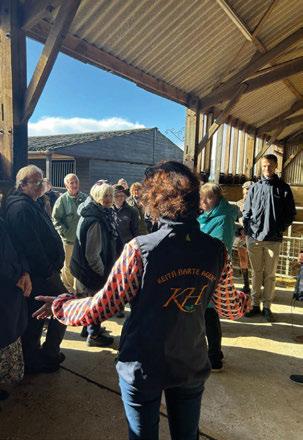
Studs up and down the country welcomed visitors as part of National Racehorse Week, which took place between September 7 and 15.
A total of 11 studs opened their doors –Beech House, Flintstone Stud, Kirtlington, Mildmay Farm, Mill Farm, Molland Ridge, National Stud, New England, Newsells Park, Tweenhills and Yorton – allowing the general public, as well as those working within the wider industry, a chance to understand and see different aspects of stud life. There were parades of mares and youngstock as well as competitions and demonstrations.



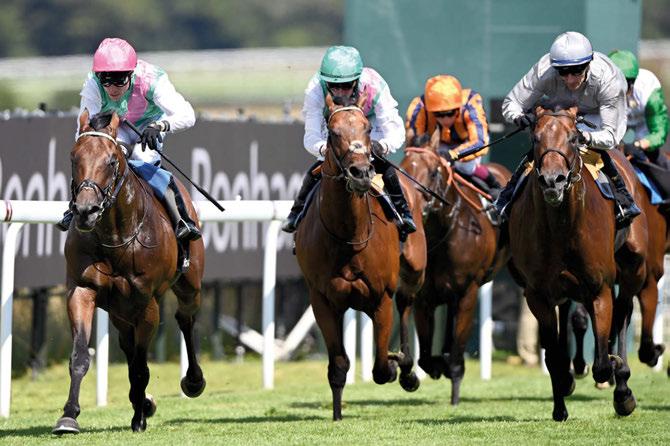
The first European Group 1 for juveniles, the Phoenix Stakes, went the way of Juddmonte’s homebred filly Babouche. A Group 3 winner the previous month, the daughter of Kodiac travelled well and won with authority over Whistlejacket, who captured the Prix Morny the following weekend. Fellow Juddmonte homebred Lead Artist, a son of Dubawi, broke through at Pattern level in the Goup 3 Thoroughbred Stakes at Goodwood.
The following day and the concluding day of the Goodwood Festival, the Andrew Whitlock-bred Term Of Endearment continued her rise up the ladder. The daughter of Sea The Moon has been expertly handled by Henry de Bromhead and proved a cosy winner against rivals whom she had beaten at York in May.
August’s other big festival on home soil, the York Ebor meeting, as ever produced a number of high-quality performances, which included a second top-level win for Bradsell. The Deborah O’Brien-bred son of Tasleet won the Nunthorpe well, showing his rivals a clean pair of heels. This was a second win in the month, having scored on his comeback in the Prix du Cercle at Deauville.
The feature juvenile contests of the festival, the Lowther Stakes and the Gimcrack Stakes, went the way of
British-breds. The Lowther was won by Rockcliffe Stud homebred Celandine, a daughter of Kingman. The Gimcrack went the way of the Tony Nerses-bred Cool Hoof Luke, a son of Advertise. The Manton Park stallion was also represented by another Andrew Balding trainee in the shape of Al Shabab Storm, bred and owned by Ahmad Al Shaikh, who won the Group 3 Goldene Peitsche at Baden-Baden.
Runner-up in the Nassau Stakes at Goodwood, Jeff Smith’s homebred filly See The Fire, another trained by Balding, became a Group winner when winning the Strensall Stakes in easy fashion.
Another filly to take on the boys and come out victorious was Chasemore Farm homebred Breege, who won the City of York Stakes. Andrew and Jane Black’s operation also bred Fandom, a son of Showcasing, who won the Mahoney Stakes at Saratoga.
The waters in the spa town of Saratoga agree with McKulick as the daughter of Frankel, who was bred by Essafinaat UK Ltd, landed back-to-back renewals of the Grade 2 Glens Falls Stakes at the start of the month.
A day later and Godolphin were on the scoresheet with homebred Cindarella’s Dream in the Grade 2 Saratoga Oaks Invitational Stakes. The operation were also successful
at Baden-Baden with Magical Hope (Frankel) in the Baden-Baden Cup.
Deauville proved to be a happy hunting ground for British-breds this August and the exciting Economics made his return to the track in the Prix Guillaume d’Ornano. The Copgrove Hall Stud-bred colt set himself up for an autumn campaign with an impressive victory.
Stepping up in distance was no issue for the Lofts Hall Stud-bred Simmering, a daughter of Too Darn Hot, who added the Prix du Calvados to her CV.
The same weekend and George Strawbridge’s progressive Friendly Soul (Kingman) stepped up and won the Group 2 Prix Alex Head, formerly known as the Prix de la Nonette. Another progressive three-year-old, No Half Measures (Cable Bay), won the Prix Moonlight Cloud. She was bred by Bumble Mitchell and Sally Nicholls.
Bred by Al Shaqab, Al Hakeem was successful in the Prix Gontaut-Biron.
Another Group 3 winner was Klondike, winner of the Prix de Reux. He was one of two stakes winners bred by the Cumani family, the other being the Listed Wackenhut Fillies’ Cup winner Topanga. She was bred in partnership with Andrew Stone.
The Gordon Roddick-bred Ice Max returned to form with a win in the Celebration Mile at Goodwood, whilst the Morera Partnership-bred Anisette won the Yellow Ribbon Handicap at Del Mar and the Shadwell-bred Mutasarref won the Desmond Stakes at Leopardstown.
Whitsbury Manor Stud bred a couple of stakes winners, including the Ripon Champion Two-Year-Old Trophy hero Soldier’s Heart, a son of Havana Grey. The double was initiated when Super Sox (Showcasing) won the Platinum Stakes at Cork earlier in the month.
Two-year-old Tropical Storm, bred by Hellwood Stud Farm and RC Dollar, won the Roses Stakes at York, whilst Babakool (Wertheimer et Frere), Choisya (Rabbah Bloodstock) and Sea Of Roses (Overbury Stallions) each won their first stakes races in the Prix Millkom, Dick Hern Fillies’ Stakes and August Stakes respectively.
A former Group 2 winner in his pomp, the Biddestone Stud-bred Cepheus won the Rowley Mile Stakes at Hawkesbury, whilst in Germany, the Mette CampbellAndenaes-bred mare Nastaria won her fourth Listed contest in the Hoppegartener Steher-Preis.
Results up to and including August 31. Produced in association with GBRI.
Nominations are open for the 2025 Thoroughbred Industry Employee Awards, sponsored by Godolphin.
With £128,500 in prize-money available across six categories, the awards celebrate the skill and dedication of the exceptional people working across British racing and breeding.
Studs have a strong record of success in recent years, with Newsells Park’s David PorterMackrell winning the overall Employee of the Year Award in 2024, securing the £30,000 prize for himself and the team.
If you know someone who deserves to be recognised for their contribution, this might be a stud manager, stallion handler, stud groom, foaling specialist, or anyone in a horse-facing or administrative role that makes a positive difference to your stud or the wider industry, nominate them at www.thoroughbredawards. co.uk. Nominations are open until Tuesday, November 5.
David Porter-Mackrell receives his trophy from the Princess Royal
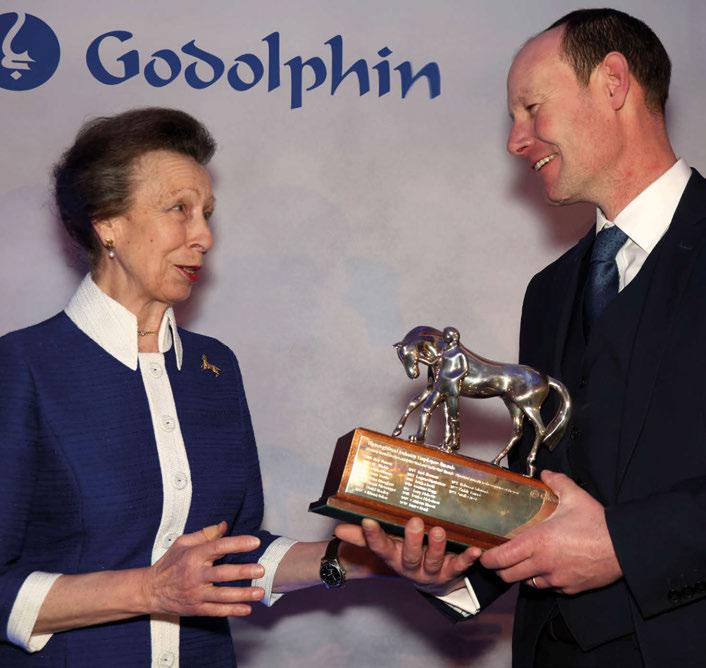
The Junior NH Hurdle programme has been given support by the British EBF as part of a refocus of its National Hunt prize-money contribution.

Simon Sweeting: strategic support through the EBF
Now in the third year, the programme enhances the potential of young horses through earlier jumping education, allowing these young horses to race against their own age group.
“We are constantly looking at the best ways to strategically support the race programme,” explained Simon Sweeting, Chairman of the British EBF.
“With guidance from the BHA, we agreed to lend support to this relatively new initiative so it had time to gain traction with owners and trainers and give its creators, the TBA and BHA, time to assess its value to the wider National Hunt racing and breeding landscape.”
The TBA’s NH Chairman, Simon Cox, was appreciative of the news, saying: “We are delighted that the British EBF are supporting the
Junior NH Hurdle races.
“These races provide a vital education for NH-bred horses to compete against each other at the same development stage, without the burden of taking on more mature Flat-breds. As a NH Committee, we were pleased with the interest that these races have had from the first to the second year, and as more stakeholders understand the concept and its benefits, we anticipate the standard will keep on improving.”
Date Course
October 7
Stratford-Upon-Avon
October 14 Hereford
November 1 Wetherby
November 13 Bangor-on-Dee
November 19 Fakenham (fillies only)
November 21 Warwick
November 29 Doncaster
December 12 Taunton
December 18 Ludlow (fillies only)
December 19 Exeter
December 30 Haydock Park

Book your place on this year’s TBA Stud Farming Course, taking place on December 10-12 at the British Racing School in Newmarket.
The course aims to give delegates a comprehensive knowledge of key stud management topics through a series of talks from industry experts including those from Newmarket Equine Hospital, Rossdales Veterinary Surgeons, and the Royal Veterinary College.
The first day will focus on the management of broodmares and include talks on barren mare management, biosecurity and stud protocols, causes of abortion and practical paddock management. The second day will focus on a range of horse management topics including upper respiratory tract disorders, nutrition of the yearling, sales preparation and managing a commercial stallion. The final day will focus on management of neonatal foals, including
talks on foaling, common conditions of the new-born foal, management of growth defects and limb corrections.
The three days will also be paired with behind-the-scenes visits to Rossdales Equine Hospital and Beech House Stud, home of the Shadwell stallions Baaeed, Mohaather and Mostahdaf. Delegates are invited to a dinner on the first night of the course, giving the opportunity to socialise with fellow delegates, speakers and industry professionals.
The course fee is £450 (including VAT) for TBA members or £582 (inc VAT) for non-members. Discounts are available for TBA members sending three or more delegates – please contact the TBA office for more information. The fee will include all lunches, refreshments, dinner on the first night and online access to some of the course material after the event.
While EHV-1 is not notifiable by law the TBA recognises the vital importance of screening for the presence of the virus enabling a rapid response to all positive cases. We encourage breeders to notify Stanstead House of all cases of
equine abortion or neonatal foal death. This allows us to monitor any disease outbreaks for which immediate action is paramount.
Should the result of a post-mortem show a positive EHV-1 result, the TBA can help with up-to-date advice
TBA members are reminded that it is a legal requirement that all horse owners register their ownership within 30 days of purchase with their issuing organisation, Weatherbys.
This legislation applies to all equines and so TBA members are reminded to ensure that any other horses in their ownership are also up to date with the requirements. Since becoming a legal requirement in 2018 and enforceable by Trading Standards, legislation also requires a horse’s passport is returned to Weatherbys to be updated with the new ownership details.
Racing ownerships have been granted an exemption; however, when a horse comes out of training, this exemption no longer exists. An owner of a horse in training should have previously registered their ownership with Weatherbys before the horse went into training unless they are the breeder, in which case the ownership is already correct. When a horse comes out of training and the racing ownership is terminated, the Weatherbys ownership (i.e. the ownership registered with Weatherbys before the horse entered training and was registered with Weatherbys before the horse was listed in the BHA database for racing purposes) becomes the valid ownership recognised by DEFRA and the Central Equine Database.
Even if a racing owner maintains ownership of a horse after it finishes racing, they will be required to register their continued ownership with Weatherbys – if they had not already done so prior to the horse going into training (unless they bred the horse).
and veterinary assistance if required. Preventing the further spread of the disease is vital to our breeding industry and we offer a £200 subsidy towards the cost of a post-mortem to members who meet the criteria.
Full details, including the online application form, can be found on the website under the equine health heading.
There have been quite a few pleasant spin-offs for Deborah O’Brien through Bradsell’s emergence as a top-class sprinter, from consecutive nominations for the Langham Cup as small breeder of the year at the TBA Flat Awards to smart lunches acknowledging those behind the winners of races at Royal Ascot.
Perhaps the best of all came at the York Ebor meeting, where the Tasleet colt claimed his second Group 1 win in the Coolmore Wootton Bassett Nunthorpe Stakes. He later followed up with an equally dominant display in the Group 1 Flying Five Stakes at the Curragh.
“Oliver St Lawrence [racing manager of owner Shaikh Nasser’s Victorious Racing] very kindly asked us to come and join in the preliminaries and the celebrations after it,” explains O’Brien, who lives with her husband Michael near Knaresborough.
“For it to be our local course, and for him to win the Nunthorpe, it was just an amazing day. I actually got to put my hands on him for the first time since he’d been sold as a yearling which again, as a breeder, is quite a special thing.”
O’Brien has been breeding from the same family which produced Bradsell since the mid-90s and had owned a share in his fourth dam, Champenoise, a Forzando mare who won a seller at Yarmouth. Having enjoyed her as a racehorse, O’Brien bought her for a very small sum when she was retired owing to an injury.
She has raced some of the fillies, usually under the banner of Lovely Bubbly Racing, and Bradsell’s dam, Russian Punch, won the Listed Radley Stakes at Newbury.
Bradsell, Russian Punch’s fourth foal, sold for 12,000gns at the Tattersalls Somerville Sale before reaching Archie Watson’s stable via the Goffs UK Breeze-Up Sale.
“His Coventry win was astonishing, then he got injured at the Curragh in the Phoenix Stakes and that finished the season,” she recalls.
“I think when he came back he was too keen at six furlongs so to have the courage to supplement him for the King’s Stand at Ascot and go and win that, I didn’t really know quite where to put myself, it was so exciting!
“What a courageous horse and hats off to the connections through the journey, I just hope they have a clear run with him now.”
The O’Briens met when they were both tax inspectors at the Inland Revenue. They now have seven mares, from several main families, boarding at Bearstone Stud in Shropshire.
“I was a maths graduate, so patterns and pedigrees appeal to me somehow,” she says. “I love the planning of the mating, the matching the pedigrees within the budget I can afford and getting the right mix. That’s where my passion lies really.
“I’ve refined a lot of it and got better; seeing how other people have done it continues to interest me greatly.
“You learn every time, every year, but knowing your own families and trying to develop them generation after generation appeals as well.”
For all that Bradsell was not much of a success in the ring for his breeder, she had a better result not long after the Coventry victory when his younger half-brother by Ulysses, Tribal Rhythm, made £150,000 at Doncaster.
Looking to the next generation from Russian Punch, O’Brien adds: “I’ve tried to replicate the mating with Tasleet as closely as possible so she’s in foal to Soldier’s Call and I’ve got a fantastic Oasis Dream filly from the mare this year.
“She’s not a big mare and Oasis Dream was the right size

and height for her.”
O’Brien is retired from the tax world and manages her stock with equal rigour. She breeds only from winners and sells colts to keep the business going, but had been desperate for another filly.
“She was conceived on Valentine’s Day and born on our ruby wedding anniversary, so she’s already named Ruby Punch!” she laughs.
“She’s going nowhere, except the racecourse, because I’m keeping her. She even has a sort of heart-shaped mark on her head, so she’s obviously meant to be.”
O’Brien will have to wait and see whether she has another chance to give Bradsell a congratulatory pat on the racecourse but this modest individual is particularly grateful for what he has achieved already.
“He’s taken me to places that I’d never imagined as a breeder,” she says. “You’re always hoping to do something which is successful but he’s been a bolt from the blue, and opened up a remarkable social life in consequence!”


Total print readership exceeds 20,000 per month – Europe’s most widely read monthly horseracing magazine A proven, tried and trusted publication with advertising packages available from just £305 per month
Graham Dench asks our jury the big questions: Would a cap on stallion books benefit the breeding industry, especially the middle to lower market?
“
It might be an unpopular opinion, but personally I would be wary of a cap on stallion book sizes. Adding red tape and restrictions to a free market hasn’t appeared to benefit other industries of late. Furthermore, the likes of Wootton Bassett, Havana Grey, Dark Angel, Kodiac etc show that class will out and can succeed regardless of a lowly start.
Obviously, the main benefit to capping the stallion book sizes is trying to counter the concentration of the gene pool, which is far from healthy for the thoroughbred breed. However, the increased globalisation of the thoroughbred industry appears to be the most logical way of stemming the tide – hopefully the opening up of South Africa to Europe will help in this regard.
It should be noted that sire power is most keenly felt in the sales ring, much more than on the racecourse. Therefore, if there were to be tweaks to capping numbers, perhaps an innovative sales company might cap the number of offspring per stallion for their yearling sales? There would be no need for rules and regulations, just an interesting marketing ploy… pie in the sky stuff I feel!



Managing Director of Cheveley Park Stud
The most important thing is we want to encourage the standing of stallions in England. Whilst I think there is a strong case for a restriction on book sizes, the natural desire for breeders to use the most popular sires is something that we need to accommodate. The cap has been considered, both here and in America, and the industry has said this is not something we wish to
I think that the Great British Bonus and Great British Bonus Plus will be a huge help to stallions in this country, especially for horses like Ulysses, who has been a challenge to stand despite having had a phenomenal year. We’ve got to try and stimulate interest in middle-distance stallions over the more commercial,
That said, our business model and our client base – over 40 years – has been based around speed, with Music Boy, Primo Dominie, Prince Sabo, Polar Falcon, Pivotal and Dutch Art. All the stallions we stood could be marketed and proved popular, and now we’re returning to those roots with Vandeek. He’ll hopefully be very well received and attract more commercial breeders and, more importantly, smaller breeders as well as those from abroad.
It’s so difficult to get a stallion – when you’re lucky enough to stand a dual Group 1 winner with exceptional credentials, you want breeders to support you. We need to build our stallion portfolios in the UK rather than lose out to other commercial
David Menuisier Group 1-winning trainer
I’ve said it before, I think we need a cap on numbers for stallions, and also for trainers for that matter, as it would reshuffle the cards. Also, the way we judge who is the best stallion is fake because it takes no account of the number of mares they cover. If they were all limited to the same number of mares, we would have a much better idea of which is best.
It will never happen though, as the industry is controlled by the biggest operators, for whom it would not be in their interests for the cards to be reshuffled. It plays to their advantage for things to stay the way they are, with their stallions covering vast numbers of mares, and some of them operating in both hemispheres. Historically that’s how a lot of their money was made.

I’m not going to be silly and if somebody wanted to send me a Dubawi or a Frankel then of course I would welcome it, but personally when I look at foals and yearlings, I pay more attention to the dam’s side rather than the sire’s, as I think that side is more important. We’ve been extremely successful with the offspring of lesser stallions, like Makfi, Exchange Rate and Soldier Hollow for example.
I’m not alone in my thinking. Look at the success of the Aga Khan, who has said himself he pays more attention to the dam’s side. Very few of his horses are by what are generally viewed as the top stallions. ”

Chris Wright Owner-breeder and ROA Board member
“
I’d agree that some stallions are covering too many mares, and so there are too many yearlings by the same ones. I can remember when a stallion would cover no more than 100 or so mares in a season – now for some it’s nearly 200, and that’s without doing the southern hemisphere as well.
If their books were reduced then there would be fewer [progeny], but their price would go up and so the stallion manager isn’t necessarily losing out, while those who are using the stallion will pay more but have a rarer commodity.
Under a capped system, breeders would have to use other stallions, and that would give more chance to those further down the totem pole and create more diversity. Some take a bit of time to establish themselves –Wootton Bassett, for example, wasn’t always a top stallion – and the more chances those stallions lower down the order get, the more chance there is of something developing, which would be a good thing.
But who is going to tell people they have to reduce their stallion’s book of mares? I’m not sure the structure is there to make it happen. And if we agree that we need to reduce the numbers, then reduce by how much?
Let’s say a stallion can cover no more than 120 mares. The fees for those who were covering more than that will go up. Stallions a bit further down the list will get more mares, and their price would probably go up too, and then there will still be the mares for those who are perhaps not quite so hot.
It’s a tricky one. In short, I think it’s a good idea, but it’s hard to determine what the figures should be, while it would also be difficult to regulate. ”
Colin Bryce Owner of Laundry Cottage Stud
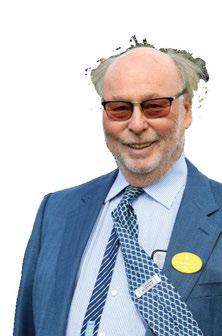
It seems to me that this would not really be feasible. Constraining folks’ actions in a free market would not be something I would support philosophically. I also suspect it would fall foul of some regulation or other.
The successful – and therefore expensive – stallions don’t present a problem. So constraining books beyond what some farms already do themselves wouldn’t be necessary anyway.
For the lesser lights and those who use them, I guess the pain of the market reality these days will just get worse until people drift away from breeding racehorses, having had enough of bringing unsold stock home from sales. It takes time, but in the end the numbers covered by the unsuccessful stallions will fall away.
The problem for breeding in the UK and Ireland is down to prize-money on the track. That is where the focus of all the administrators of this disaggregated, disparate business with all their vested interests should be focused.
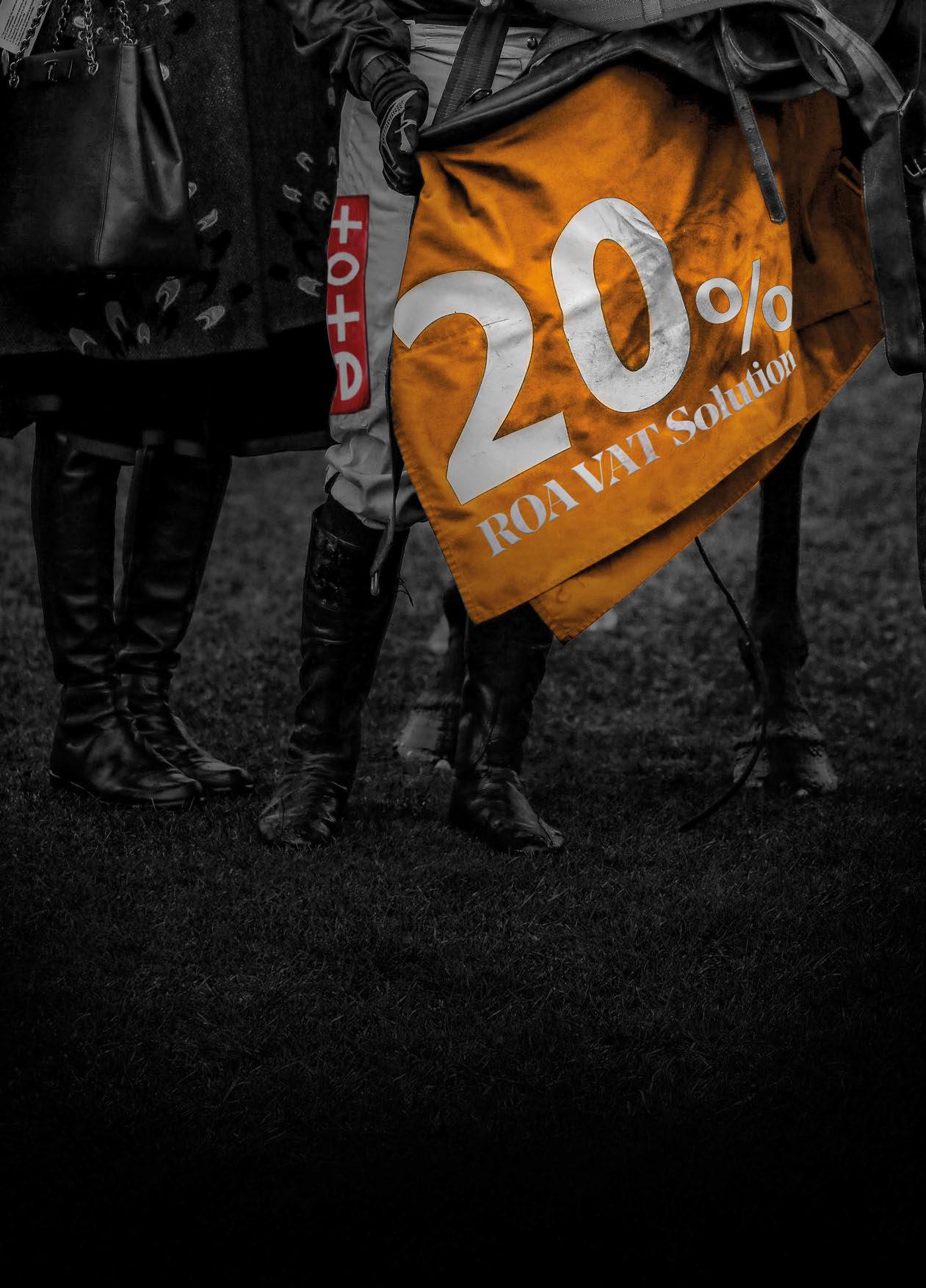
Reclaiming VAT is now easier with the ROA VAT Solution.
The Racehorse Owners Association team is here to simplify the process, helping you claim back £000s on your racing expenses and giving you more time for the sport you love. Let us take care of the details and make VAT reclaim seamless. For more information contact our team on 01183 385 685 or email vat@roa.co.uk

European Champion juvenile and now a Classic sire. More first-crop two-year-old Group winners than any other stallion ever and, by the beginning of September, he’s already up to three Group or Listed winners from his second crop of youngsters. Third-crop yearlings selling now.
